- More More
- Blog
- Inspire me
- Groups
- Offers More
- Dive Courses More
- Liveaboards
More

Liveaboard Trips
On-board accommodation offering the opportunity to live right over the dive sites and to experience secluded dives...
Diving regions...
- LATEST AVAILABILITY BY REGION
- Red Sea availability
- Maldives availability
- Indonesian availability
- Socorro Mexico availability
- Galapagos availability
- ALL LIVEABOARD DIVING REGIONS
- Bahamas
- Bikini Atoll
- Caribbean
- Cocos Island
- Destinations
MoreDIVING REGIONS...
Our Top destinations....Why not try....
Find a trip
- Resort
- Liveaboard
Emperor Explorer
At a glance
Flight time: 10.5 hours
Water temperature: 24 - 28°C
Highlights on-board: Best in class luxury
Highlights underwater: Best central sites including Ari Atoll
Overview
The stunning Emperor Explorer liveaboard is the latest addition to the Emperor Maldives fleet. Cruising the best dive sites of the central Maldives, she blends exceptional diving with on-board luxury for discerning divers, offering both 7 and 10 night itineraries.
At 42 metres, the Emperor Explorer provides ample space for 26 guests in 13 en-suite cabins. Each cabin also features individually controlled air-conditioning. On the lower deck are 5 cabins with a double and a single bed, and 2 cabins with double beds. There are an additional 2 cabins on the main deck, each with a double and a single bed. The upper deck features a further 4 cabins; 2 twin cabins and 2 with a king size double bed.
She also benefits from an open air dining area, and a choice of indoor and outdoor relaxation areas. Outside areas offer either shade or sun, depending on your preference.
All diving is done from a comfortable dhoni, fully equipped with compressors, tanks and oxygen kits.
FREE Nitrox is available.
Click here for deck floor plan
Group Discounts:
The FREE places below relate to the 'boat space' and do not include flights.
JAN-APR (free spaces)
- 7 pay full price + 1 free
- 14 pay full price + 2 free
- 23 pay full price + 3 free
MAY-DEC (free spaces)
- 5 pay full price + 1 free
- 10 pay full price + 2 free
- 18 pay full price + 3 free
- 22 pay full price + 4 free
Specification: Type: Wooden hull, Length: 42m - Beam: 13.2m, Engine: 700 Hp Doosan Daewoo, Generators: 2 x 50 KW
Navigation and Communication: VHF radio, GPS chart plotter, Telephone, Mobile, EPIRB
Dive equipment rental: Diving equipment rental is available and paid for locally, but must be pre-arranged to ensure availability. Please Note: SMB and dive computer compulsory on every dive. Reef hooks are also recommended.
Safety: Oxygen/Medic First Aid Kit
Dhoni: Dhoni: Large diving dhoni tender fully equipped with compressors, tanks & oxygen kits
Schedules & prices
Price includes: 7 nights cabin share (sold as male/male or female/female share if travelling alone), three meals per day plus afternoon snacks and one BBQ night on uninhabited island (subject to route and weather conditions), unlimited drinking water, tea and coffee, 17 dives per week (2-3 dives per day, one night dive, no diving on the first day), guide, tanks, air / nitrox fills and weights. Male city tour with local guide also included on request.
Flights available with Emirates, Sri Lankan, Qatar Airways, Oman Air, British Airways and other airlines - please enquire.
Groups and Full Charters - please enquire for special rates and free places.
GROUP DISCOUNTS
The FREE places below relate to the 'boat space' and do not include flights.
JAN-APR (free spaces)
- 7 pay full price + 1 free
- 14 pay full price + 2 free
- 23 pay full price + 3 free
MAY-DEC (free spaces)
- 5 pay full price + 1 free
- 10 pay full price + 2 free
- 18 pay full price + 3 free
- 22 pay full price + 4 free
SUPPLEMENTS
- Main deck and upper deck cabins carry a supplement, starting from £160.
- Single divers in a cabin with a double and a single bed can also book the double bed for a small supplement, subject to availability. Please enquire at the time of booking.
- Single supplements for a private cabin are 50%
EQUIPMENT AND OTHER EXTRAS:
Please Note: SMB and dive computer compulsory on every dive.
- Rental equipment must be requested in advance to ensure availability.
- Diving Courses - please contact us in advance to pre-book.
- Wi-Fi: $20 per week (subject to signal strength in certain areas)
- All extras are to be paid during the sailing.
A 12% sales tax charge is applicable on any payments made on board.
| Date | Itinerary | Embark | Notes | Price | Enquire |
|---|---|---|---|---|---|
| 07 Dec 2025 | Best of the Maldives | Male |
Route: Best of Maldives, 7 Nights. 9 spaces available. 30+ Logged Dives - PADI Advanced. | £2588 | ENQUIRE |
| 14 Dec 2025 | Best of the Maldives | Male |
Route: Best of Maldives, 7 Nights. 10 spaces available. 30+ Logged Dives - PADI Advanced. | £1811 | ENQUIRE |
| 21 Dec 2025 | Best of the Maldives | Male |
Route: Best of Maldives, 7 Nights. 4 spaces available. 30+ Logged Dives - PADI Advanced. | £2942 | ENQUIRE |
| 18 Jan 2026 | Deep South Sharks | Male |
Route: Southern Shark Adventure, 14 Nights. 10 spaces available. 30+ Logged Dives. | £4885 | ENQUIRE |
| 01 Feb 2026 | Deep South & Southern Sharks | Gan |
Route: Deep South, 10 Nights. 3 spaces available. PADI Open Water or equivalent. | £4071 | ENQUIRE |
| 12 Feb 2026 | Deep South Sharks | Kooddoo |
Route: Southern Shark Adventure, 10 Nights. 7 spaces available. 30+ Logged Dives. | £3880 | ENQUIRE |
| 08 Mar 2026 | Best of the Maldives | Male |
Route: Best of Maldives, 7 Nights. 3 spaces available. 30+ Logged Dives - PADI Advanced. | £2593 | ENQUIRE |
| 22 Mar 2026 | Sharktastic | Male |
Route: Sharktastic, 7 Nights. 5 spaces available. 30+ Logged Dives. | £2593 | ENQUIRE |
| 29 Mar 2026 | Best of the Maldives | Male |
Route: Best of Maldives, 7 Nights. 15 spaces available. 30+ Logged Dives - PADI Advanced. | £2593 | ENQUIRE |
| 12 Apr 2026 | Best of the Maldives | Male |
Route: Best of Maldives, 7 Nights. 13 spaces available. 30+ Logged Dives - PADI Advanced. | £2725 | ENQUIRE |
| 19 Apr 2026 | Best of the Maldives | Male |
Route: Best of Maldives, 7 Nights. 22 spaces available. 30+ Logged Dives - PADI Advanced. | £2593 | ENQUIRE |
| 26 Apr 2026 | Best of the Maldives | Male |
Route: Best of Maldives, 7 Nights. 26 spaces available. 30+ Logged Dives - PADI Advanced. | £2593 | ENQUIRE |
| 10 May 2026 | Best of the Maldives | Male |
Route: Best of Maldives, 7 Nights. 10 spaces available. 30+ Logged Dives - PADI Advanced. | £1569 | ENQUIRE |
| 17 May 2026 | Best of the Maldives | Male |
Route: Best of Maldives, 7 Nights. 8 spaces available. 30+ Logged Dives - PADI Advanced. | £1662 | ENQUIRE |
| 31 May 2026 | Best of the Maldives | Male |
Route: Best of Maldives, 7 Nights. 23 spaces available. 30+ Logged Dives - PADI Advanced. | £1569 | ENQUIRE |
| 02 Aug 2026 | Best of the Maldives | Male |
Route: Best of Maldives, 7 Nights. 26 spaces available. 30+ Logged Dives - PADI Advanced. | £1569 | ENQUIRE |
| 09 Aug 2026 | Best of the Maldives | Male |
Route: Best of Maldives, 7 Nights. 22 spaces available. 30+ Logged Dives - PADI Advanced. | £1569 | ENQUIRE |
| 16 Aug 2026 | Best of the Maldives | Male |
Route: Best of Maldives, 7 Nights. 24 spaces available. 30+ Logged Dives - PADI Advanced. | £1569 | ENQUIRE |
| 23 Aug 2026 | Best of the Maldives | Male |
Route: Best of Maldives, 7 Nights. 26 spaces available. 30+ Logged Dives - PADI Advanced. | £1569 | ENQUIRE |
| 30 Aug 2026 | Best of the Maldives | Male |
Route: Best of Maldives, 7 Nights. 22 spaces available. 30+ Logged Dives - PADI Advanced. | £1569 | ENQUIRE |
| 06 Sep 2026 | Best of the Maldives | Male |
Route: Best of Maldives, 7 Nights. 26 spaces available. 30+ Logged Dives - PADI Advanced. | £2243 | ENQUIRE |
| 13 Sep 2026 | Best of the Maldives | Male |
Route: Best of Maldives, 7 Nights. 22 spaces available. 30+ Logged Dives - PADI Advanced. | £2243 | ENQUIRE |
| 27 Sep 2026 | Best of the Maldives | Male |
Route: Best of Maldives, 7 Nights. 24 spaces available. 30+ Logged Dives - PADI Advanced. | £2243 | ENQUIRE |
| 04 Oct 2026 | Best of the Maldives | Male |
Route: Best of Maldives, 7 Nights. 24 spaces available. 30+ Logged Dives - PADI Advanced. | £2243 | ENQUIRE |
| 25 Oct 2026 | Best of the Maldives | Male |
Route: Best of Maldives, 7 Nights. 14 spaces available. 30+ Logged Dives - PADI Advanced. | £2243 | ENQUIRE |
| 01 Nov 2026 | Best of the Maldives | Male |
Route: Best of Maldives, 7 Nights. 23 spaces available. 30+ Logged Dives - PADI Advanced. | £2455 | ENQUIRE |
| 08 Nov 2026 | Best of the Maldives | Male |
Route: Best of Maldives, 7 Nights. 20 spaces available. 30+ Logged Dives - PADI Advanced. | £2455 | ENQUIRE |
| 15 Nov 2026 | Best of the Maldives | Male |
Route: Best of Maldives, 7 Nights. 26 spaces available. 30+ Logged Dives - PADI Advanced. | £2455 | ENQUIRE |
| 22 Nov 2026 | Best of the Maldives | Male |
Route: Best of Maldives, 7 Nights. 26 spaces available. 30+ Logged Dives - PADI Advanced. | £2455 | ENQUIRE |
| 29 Nov 2026 | Best of the Maldives | Male |
Route: Best of Maldives, 7 Nights. 26 spaces available. 30+ Logged Dives - PADI Advanced. | £2455 | ENQUIRE |
| 06 Dec 2026 | Best of the Maldives | Male |
Route: Best of Maldives, 7 Nights. 8 spaces available. 30+ Logged Dives - PADI Advanced. | £2854 | ENQUIRE |
| 13 Dec 2026 | Best of the Maldives | Male |
Route: Best of Maldives, 7 Nights. 26 spaces available. 30+ Logged Dives - PADI Advanced. | £2455 | ENQUIRE |
| 20 Dec 2026 | Best of the Maldives | Male |
Route: Best of Maldives, 7 Nights. 26 spaces available. 30+ Logged Dives - PADI Advanced. | £2544 | ENQUIRE |
| 03 Jan 2027 | Best of the Maldives | Male |
Route: Best of Maldives, 7 Nights. 26 spaces available. 30+ Logged Dives - PADI Advanced. | £2593 | ENQUIRE |
| 10 Jan 2027 | Deep South Sharks | Male |
Route: Southern Shark Adventure, 14 Nights. 25 spaces available. 30+ Logged Dives. | £4659 | ENQUIRE |
| 24 Jan 2027 | Deep South & Southern Sharks | Gan |
Route: Deep South, 7 Nights. 23 spaces available. PADI Open Water or equivalent. | £2716 | ENQUIRE |
| 31 Jan 2027 | Deep South & Southern Sharks | Kooddoo |
Route: Deep South, 7 Nights. 26 spaces available. PADI Open Water or equivalent. | £2716 | ENQUIRE |
| 07 Feb 2027 | Deep South Sharks | Gan |
Route: Southern Shark Adventure, 14 Nights. 24 spaces available. 30+ Logged Dives. | £4659 | ENQUIRE |
| 21 Feb 2027 | Best of the Maldives | Male |
Route: Best of Maldives, 7 Nights. 24 spaces available. 30+ Logged Dives - PADI Advanced. | £2593 | ENQUIRE |
| 28 Feb 2027 | Best of the Maldives | Male |
Route: Best of Maldives, 7 Nights. 26 spaces available. 30+ Logged Dives - PADI Advanced. | £2593 | ENQUIRE |
| 28 Mar 2027 | Best of the Maldives | Male |
Route: Best of Maldives, 7 Nights. 12 spaces available. 30+ Logged Dives - PADI Advanced. | £2725 | ENQUIRE |
| 25 Apr 2027 | Best of the Maldives | Male |
Route: Best of Maldives, 7 Nights. 26 spaces available. 30+ Logged Dives - PADI Advanced. | £2593 | ENQUIRE |
| 02 May 2027 | Best of the Maldives | Male |
Route: Best of Maldives, 7 Nights. 26 spaces available. 30+ Logged Dives - PADI Advanced. | £2243 | ENQUIRE |
| 09 May 2027 | Best of the Maldives | Male |
Route: Best of Maldives, 7 Nights. 26 spaces available. 30+ Logged Dives - PADI Advanced. | £2243 | ENQUIRE |
| 16 May 2027 | Best of the Maldives | Male |
Route: Best of Maldives, 7 Nights. 26 spaces available. 30+ Logged Dives - PADI Advanced. | £2243 | ENQUIRE |
| 23 May 2027 | Best of the Maldives | Male |
Route: Best of Maldives, 7 Nights. 26 spaces available. 30+ Logged Dives - PADI Advanced. | £2243 | ENQUIRE |
| 01 Aug 2027 | Best of the Maldives | Male |
Route: Best of Maldives, 7 Nights. 26 spaces available. 30+ Logged Dives - PADI Advanced. | £2243 | ENQUIRE |
| 08 Aug 2027 | Best of the Maldives | Male |
Route: Best of Maldives, 7 Nights. 26 spaces available. 30+ Logged Dives - PADI Advanced. | £2243 | ENQUIRE |
| 15 Aug 2027 | Best of the Maldives | Male |
Route: Best of Maldives, 7 Nights. 26 spaces available. 30+ Logged Dives - PADI Advanced. | £2243 | ENQUIRE |
| 22 Aug 2027 | Best of the Maldives | Male |
Route: Best of Maldives, 7 Nights. 26 spaces available. 30+ Logged Dives - PADI Advanced. | £2243 | ENQUIRE |
| 29 Aug 2027 | Best of the Maldives | Male |
Route: Best of Maldives, 7 Nights. 26 spaces available. 30+ Logged Dives - PADI Advanced. | £2243 | ENQUIRE |
| 05 Sep 2027 | Best of the Maldives | Male |
Route: Best of Maldives, 7 Nights. 26 spaces available. 30+ Logged Dives - PADI Advanced. | £2243 | ENQUIRE |
| 12 Sep 2027 | Best of the Maldives | Male |
Route: Best of Maldives, 7 Nights. 10 spaces available. 30+ Logged Dives - PADI Advanced. | £2243 | ENQUIRE |
| 19 Sep 2027 | Best of the Maldives | Male |
Route: Best of Maldives, 7 Nights. 26 spaces available. 30+ Logged Dives - PADI Advanced. | £2243 | ENQUIRE |
| 26 Sep 2027 | Best of the Maldives | Male |
Route: Best of Maldives, 7 Nights. 26 spaces available. 30+ Logged Dives - PADI Advanced. | £2243 | ENQUIRE |
| 03 Oct 2027 | Best of the Maldives | Male |
Route: Best of Maldives, 7 Nights. 26 spaces available. 30+ Logged Dives - PADI Advanced. | £2243 | ENQUIRE |
| 10 Oct 2027 | Best of the Maldives | Male |
Route: Best of Maldives, 7 Nights. 26 spaces available. 30+ Logged Dives - PADI Advanced. | £2243 | ENQUIRE |
| 17 Oct 2027 | Best of the Maldives | Male |
Route: Best of Maldives, 7 Nights. 26 spaces available. 30+ Logged Dives - PADI Advanced. | £2243 | ENQUIRE |
| 24 Oct 2027 | Best of the Maldives | Male |
Route: Best of Maldives, 7 Nights. 26 spaces available. 30+ Logged Dives - PADI Advanced. | £2243 | ENQUIRE |
| 31 Oct 2027 | Best of the Maldives | Male |
Route: Best of Maldives, 7 Nights. 26 spaces available. 30+ Logged Dives - PADI Advanced. | £2455 | ENQUIRE |
| 07 Nov 2027 | Best of the Maldives | Male |
Route: Best of Maldives, 7 Nights. 26 spaces available. 30+ Logged Dives - PADI Advanced. | £2455 | ENQUIRE |
| 14 Nov 2027 | Best of the Maldives | Male |
Route: Best of Maldives, 7 Nights. 26 spaces available. 30+ Logged Dives - PADI Advanced. | £2455 | ENQUIRE |
| 21 Nov 2027 | Best of the Maldives | Male |
Route: Best of Maldives, 7 Nights. 26 spaces available. 30+ Logged Dives - PADI Advanced. | £2455 | ENQUIRE |
| 28 Nov 2027 | Best of the Maldives | Male |
Route: Best of Maldives, 7 Nights. 26 spaces available. 30+ Logged Dives - PADI Advanced. | £2455 | ENQUIRE |
| 05 Dec 2027 | Best of the Maldives | Male |
Route: Best of Maldives, 7 Nights. 26 spaces available. 30+ Logged Dives - PADI Advanced. | £2455 | ENQUIRE |
| 12 Dec 2027 | Best of the Maldives | Male |
Route: Best of Maldives, 10 Nights. 26 spaces available. 30+ Logged Dives - PADI Advanced. | £3509 | ENQUIRE |
| 23 Dec 2027 | Best of the Maldives | Male |
Route: Best of Maldives, 10 Nights. 26 spaces available. 30+ Logged Dives - PADI Advanced. | £3597 | ENQUIRE |
| 02 Jan 2028 | Best of the Maldives | Male |
Route: Best of Maldives, 7 Nights. 26 spaces available. 30+ Logged Dives - PADI Advanced. | £2593 | ENQUIRE |
| 09 Jan 2028 | Deep South Sharks | Male |
Route: Southern Shark Adventure, 14 Nights. 26 spaces available. 30+ Logged Dives. | £4659 | ENQUIRE |
| 23 Jan 2028 | Deep South & Southern Sharks | Gan |
Route: Deep South, 7 Nights. 26 spaces available. PADI Open Water or equivalent. | £2716 | ENQUIRE |
| 30 Jan 2028 | Deep South & Southern Sharks | Kooddoo |
Route: Deep South, 7 Nights. 26 spaces available. PADI Open Water or equivalent. | £2716 | ENQUIRE |
| 06 Feb 2028 | Deep South Sharks | Gan |
Route: Southern Shark Adventure, 14 Nights. 26 spaces available. 30+ Logged Dives. | £4659 | ENQUIRE |
| 20 Feb 2028 | Best of the Maldives | Male |
Route: Best of Maldives, 7 Nights. 26 spaces available. 30+ Logged Dives - PADI Advanced. | £2593 | ENQUIRE |
| 27 Feb 2028 | Best of the Maldives | Male |
Route: Best of Maldives, 7 Nights. 26 spaces available. 30+ Logged Dives - PADI Advanced. | £2593 | ENQUIRE |
| 05 Mar 2028 | Best of the Maldives | Male |
Route: Best of Maldives, 7 Nights. 26 spaces available. 30+ Logged Dives - PADI Advanced. | £2593 | ENQUIRE |
| 12 Mar 2028 | Best of the Maldives | Male |
Route: Best of Maldives, 7 Nights. 26 spaces available. 30+ Logged Dives - PADI Advanced. | £2593 | ENQUIRE |
| 19 Mar 2028 | Best of the Maldives | Male |
Route: Best of Maldives, 7 Nights. 26 spaces available. 30+ Logged Dives - PADI Advanced. | £2593 | ENQUIRE |
| 05 Apr 2028 | Best of the Maldives | Male |
Route: Best of Maldives, 10 Nights. 26 spaces available. 30+ Logged Dives - PADI Advanced. | £3703 | ENQUIRE |
| 16 Apr 2028 | Best of the Maldives | Male |
Route: Best of Maldives, 7 Nights. 26 spaces available. 30+ Logged Dives - PADI Advanced. | £2593 | ENQUIRE |
| 23 Apr 2028 | Best of the Maldives | Male |
Route: Best of Maldives, 7 Nights. 26 spaces available. 30+ Logged Dives - PADI Advanced. | £2593 | ENQUIRE |
| 30 Apr 2028 | Best of the Maldives | Male |
Route: Best of Maldives, 7 Nights. 26 spaces available. 30+ Logged Dives - PADI Advanced. | £2243 | ENQUIRE |
| 07 May 2028 | Best of the Maldives | Male |
Route: Best of Maldives, 7 Nights. 26 spaces available. 30+ Logged Dives - PADI Advanced. | £2243 | ENQUIRE |
| 14 May 2028 | Best of the Maldives | Male |
Route: Best of Maldives, 7 Nights. 26 spaces available. 30+ Logged Dives - PADI Advanced. | £2243 | ENQUIRE |
| 21 May 2028 | Best of the Maldives | Male |
Route: Best of Maldives, 7 Nights. 26 spaces available. 30+ Logged Dives - PADI Advanced. | £2243 | ENQUIRE |
Itineraries
Other itineraries may be available for full charter - please contact us for more information.
Find a trip
- Resort
- Liveaboard
Regaldive Holiday Christmas Gift Vouchers
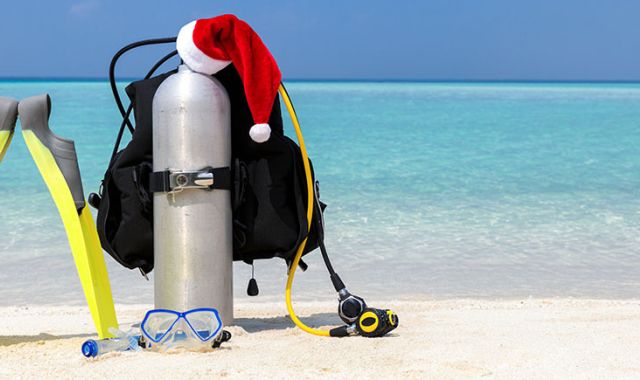
1 Dec 2025
The Ideal Christmas Gift - Regaldive Holiday Christmas Gift Vouchers
You may also want to put a Regaldive Holiday gift voucher on your wish list to Santa, so that you can receive a useful contribution towards your next diving holiday. Just let Santa know how to contact us and we will do the rest!
You can shop for your Regaldive gift vouchers from the comfort of your home or office, with no need to brave the busy High Street shops! Just give us a call on 01353 659999 or send us an email and we would be pleased to arrange your gift vouchers.
Our Christmas gift vouchers are available in a variety of amounts and they are valid for 12 months, so that the lucky recipient can select the dive trip that suits them best.
Find a trip
- Resort
- Liveaboard
Where we Recommend for your 2026 Diving Holidays
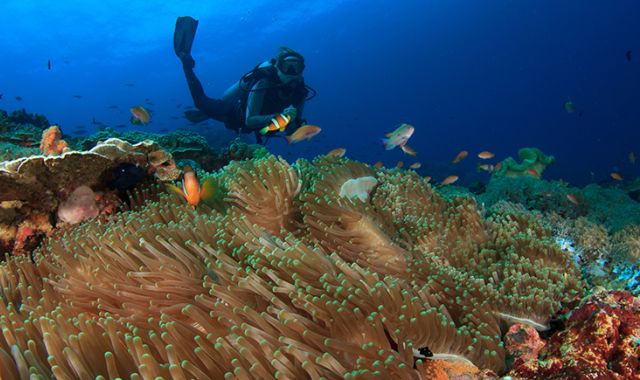
15 Oct 2025
Indonesia
Indonesia has long been a favourite dive destination, and remains so in 2026. There are exciting classics like Bunaken famous for wall dives, corals and turtles, Lembeh which offers incredible muck dives, and the renowned Raja Ampat, home to the most biodiverse and colourful reefs on Earth. There truly is something for everyone. Divers can experience everything from the smallest pygmy seahorses and colourful nudibranchs to sweeping eagle rays, mantas and dugongs. You can also travel along to Bali and Komodo for classic reef dives with vibrant corals alongside relaxing island stays.
However, don’t be fooled into thinking you’ve seen all that Indonesia has to offer just yet. If you hop aboard one of our liveaboard options, you can dive some true hidden gems. Halmahera offers exquisite reef and muck dives that easily compete with its island neighbours, but with half the crowds. Seasonal visits through the Banda Sea and Forgotten Islands reveal a treasure trove of hammerheads, schooling barracuda and even sea snakes, making this region a diver’s dream still waiting to be fully explored.
Explore the expanse of this scuba diving hotspot by resort, liveaboard or a combination for a multi-location holiday. For specialist underwater photography group trips contact us for more details.
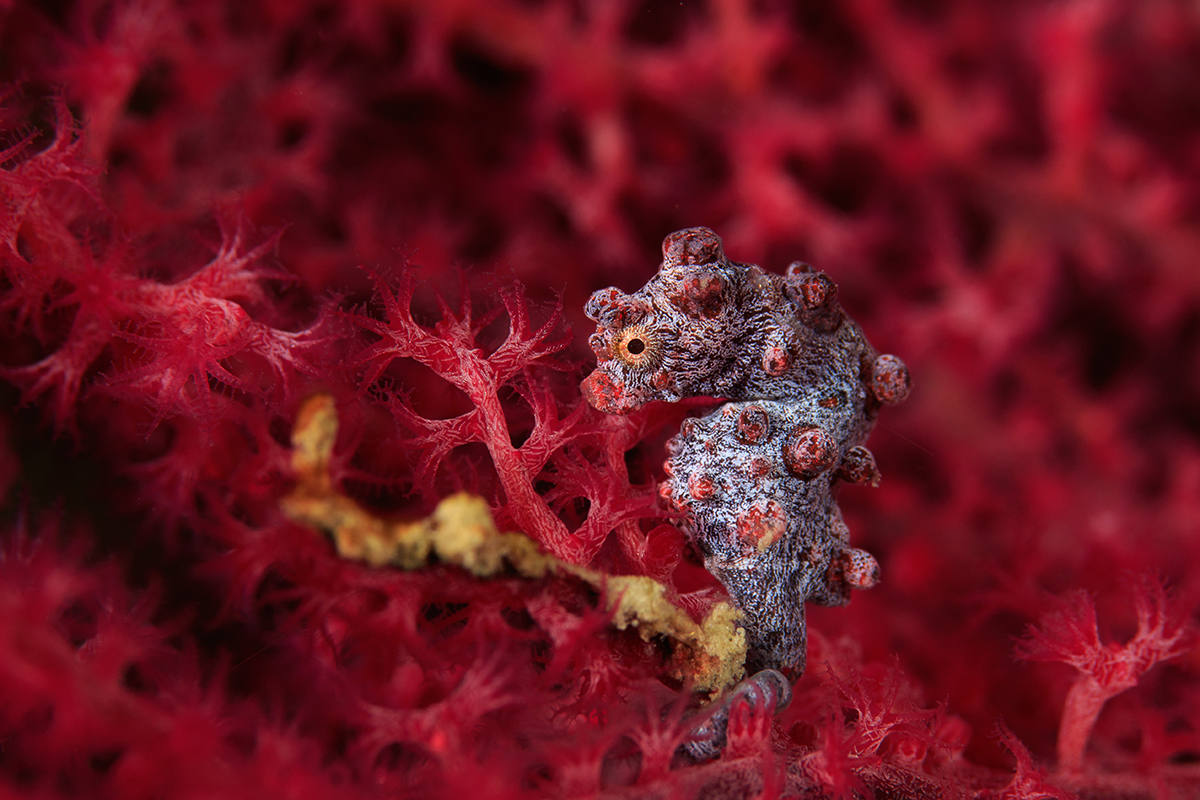
Philippines
With great value and even better diving on offer, the Philippines should be high on your list for unforgettable dive holidays in 2026. Discover elusive thresher sharks, colourful mandarin fish and pygmy seahorses in Malapascua. Or venture to Dumaguete and Dauin Venture to Dumaguete and Dauin for muck and macro including crustaceans and nudibranch. Schools of jacks can appear here, sometimes numbering over 2,000, making this a fantastic destination for both small critter enthusiasts and big fish lovers alike. The neighbouring island of Apo is home to stunning corals and a huge variety of fish.
Continue your journey south to Anilao, where lush green hills and hidden coves meet pristine blue waters and some of the country’s best muck and reef diving in the Coral Triangle. Or travel further west to the Philippines’ last frontier, Palawan, where you’ll find yourself surrounded by spectacular scenery, from soaring limestone cliffs and thermal lakes to underwater caves and an array of epic wrecks off Coron.
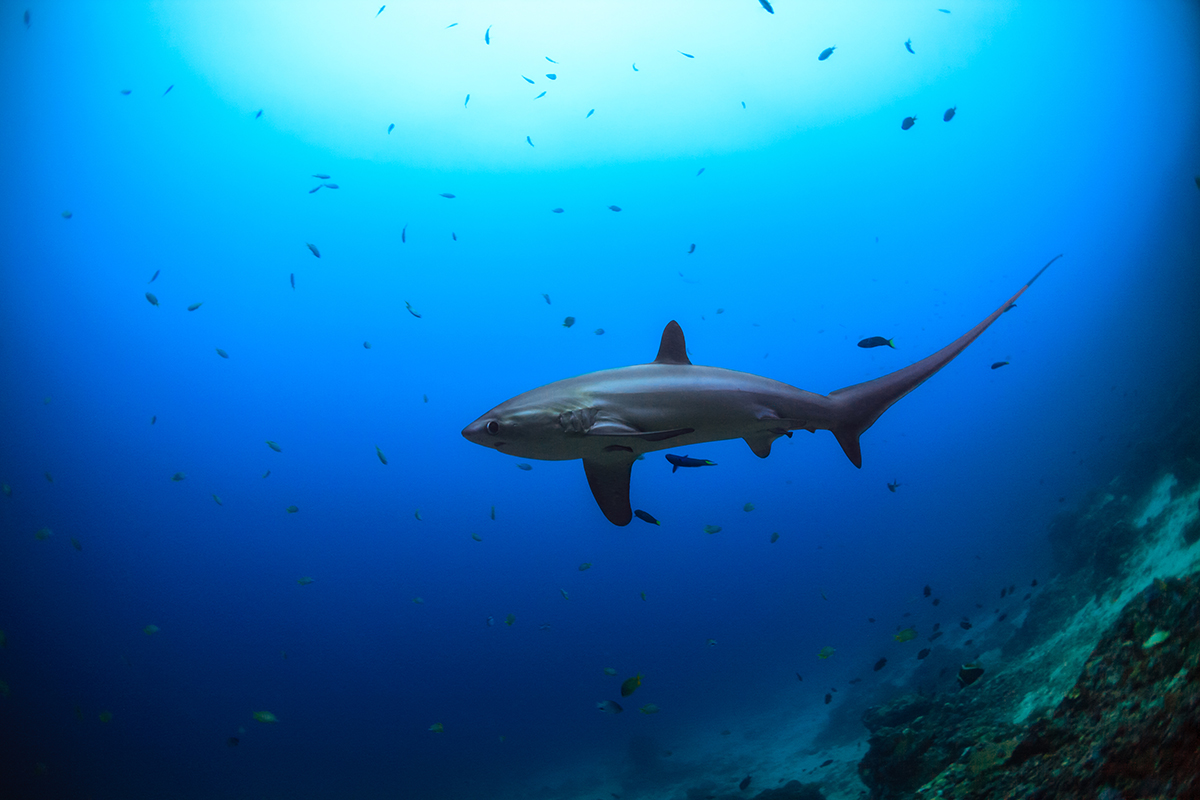
Maldives
We’ve recently launched several exciting additions to our Maldives portfolio, with even more on the horizon! Perhaps one of the most famous dive destinations in the world, this stunning island nation is celebrated for its channels, or kandus in Dhivehi, where plankton-rich waters flow in and out of the atolls, attracting manta rays and whale sharks and sustaining one of the planet’s most vibrant marine ecosystems.
Liveaboard diving in the Maldives is world-class, and the region’s reputation as a premier liveaboard destination is well deserved. Stretching more than 800 kilometres from north to south, this dazzling chain of islands and atolls begins near the southern tip of India and extends almost to the equator, surrounded by the vast expanse of the Indian Ocean.
Divers can embark directly from Malé or choose itineraries through the northern or southern atolls, while those seeking a slower pace can enjoy a resort-based holiday surrounded by white sands, turquoise lagoons and unforgettable diving right on their doorstep.

Bahamas
Soaring in popularity after the hit ITV series SHARK! Celebrity Infested Waters, the Bahamas has more than earned its reputation for exceptional shark encounters. Unlike the fleeting glimpses of sharks you might catch out in the blue in other dive destinations, in the Bahamas these encounters are typically up close and personal. You can find Caribbean reef sharks, lemon, nurse, bull, great hammerheads, tiger and even oceanic whitetip sharks. There are also several species of dolphin and whale you might encounter, as well as the Nassau grouper, proudly considered the national fish of these islands.
Beyond the shark dives, the sprawling 700 islands and cays – home to the third-largest barrier reef system in the world – guarantee a variety of excellent diving experiences, from wrecks, caves and blue holes to coral gardens, seemingly infinite walls and, of course, sharks.
Both resort and liveaboard options are exceptional ways to explore these crystal-clear waters.
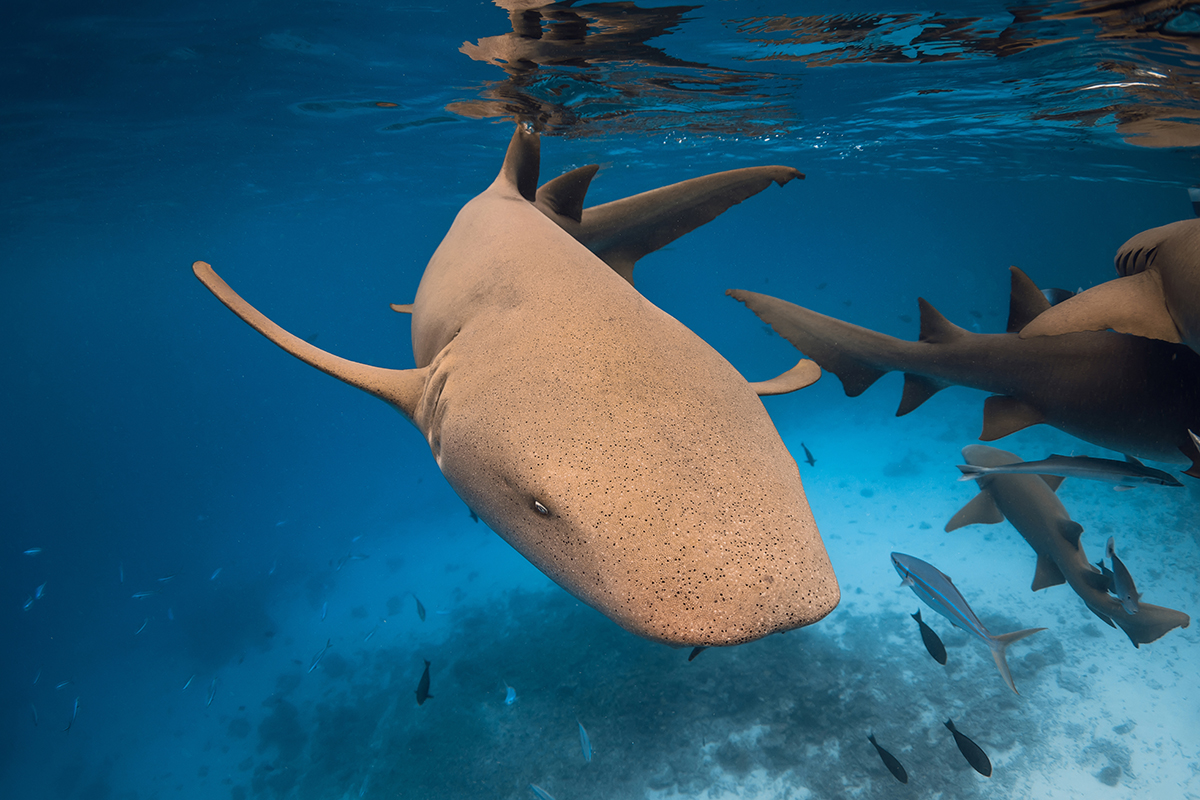
Truk Lagoon
The mecca of wreck diving, Truk Lagoon is a haunting underwater graveyard of the Japanese WWII fleet, now resting at varying depths within this bucket-list destination. Our 7- and 10-night liveaboard itineraries allow you to explore not only its world-famous wrecks but also some superb reef dives. Numerous channels cut through the reefs, serving as prime hunting grounds for reef sharks and schooling pelagics, adding to the wonder of diving this extraordinary treasure trove.
You may encounter Maru (merchant) vessels with coral-encrusted anchors, or the remnants of anti-aircraft guns, tanks, torpedo shells, trucks, and road supplies. History comes alive in the smallest details: bottles, cooking utensils, and everyday artefacts now transformed into homes for corals, fish, and crustaceans on the ocean floor.
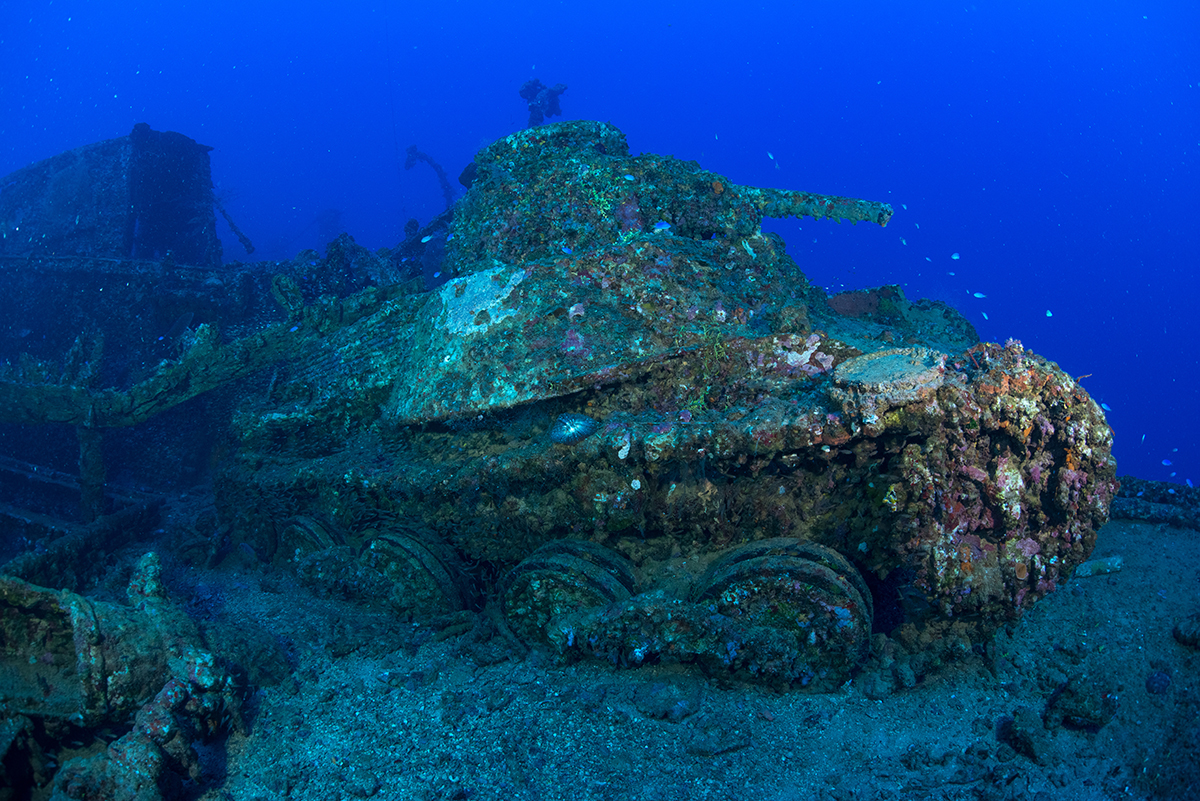
Egypt
Of course, we have to mention Egypt, our biggest and best selection of resorts and liveaboards, and very much our home away from home. The breathtaking azure waters of the Red Sea linger long in the memory for their irresistible combination of spectacular marine life, welcoming climate and stunning scenery. Only five hours from the UK, these waters are defined by their extraordinary variety and sheer volume of life.
Divers and snorkellers can expect an impressive spectrum of invertebrates, over 200 types of hard and soft corals, crustaceans, sponges, and hundreds of vibrant fish species. With crystal-clear visibility and an exhilarating range of underwater landscapes, from pristine reefs, dramatic walls and drop-offs to historic wrecks and deep blue canyons, the Red Sea never disappoints.
We’ve curated the very best Red Sea resorts and an exceptional range of liveaboards for those who want to explore its full breadth. Whether you’re diving the North, the South or everywhere in between, the choice is yours. And above the surface, your holiday can easily combine superb relaxation with cultural discovery, as this is, after all, the land of the great pyramids.

Oman
Situated on the south-east corner of the Arabian Peninsula, Oman is just a seven hour flight from the UK and home to a remarkable wealth of natural wonders both above and below the surface. A breathtaking mountain range plunges directly into the Arabian Sea along the country’s 1,700 km of coastline, while its interior is adorned with sweeping sand dunes, vast deserts and historic forts steeped in culture.
Beneath the surface, divers can encounter sting, eagle and torpedo rays, reef and leopard sharks, and a variety of moray eels including honeycomb, pepper and yellowmouth. Green and rare hawksbill turtles glide past lobster, snake eels, nudibranchs, squid, cuttlefish, porcupinefish, lionfish and scorpionfish. Batfish, parrotfish, angelfish, trevally, snapper and barracuda school around reefs flushed with vibrant coral. In these nutrient-rich waters, lucky divers may even come across pilot whales or whale sharks. The sheer abundance of life and pristine reefs leave a lasting impression on all who dive this enigmatic nation.
If you’re looking for a remarkable place to scuba dive, discover the breathtaking Musandam Peninsula, where the Persian Gulf meets the Gulf of Oman. This diver’s paradise is home to a collection of vibrant coral reefs filled with an abundance of marine life. With fjord-like scenery, thrilling drift dives, wall dives and serene night dives, it’s an exciting gateway for any scuba divers looking to explore what the region has to offer.
Whether you prefer a coastal resort stay or the freedom of a liveaboard adventure, Oman offers outstanding diving experiences along one of the most underrated coastlines in the world for your next diving holiday.
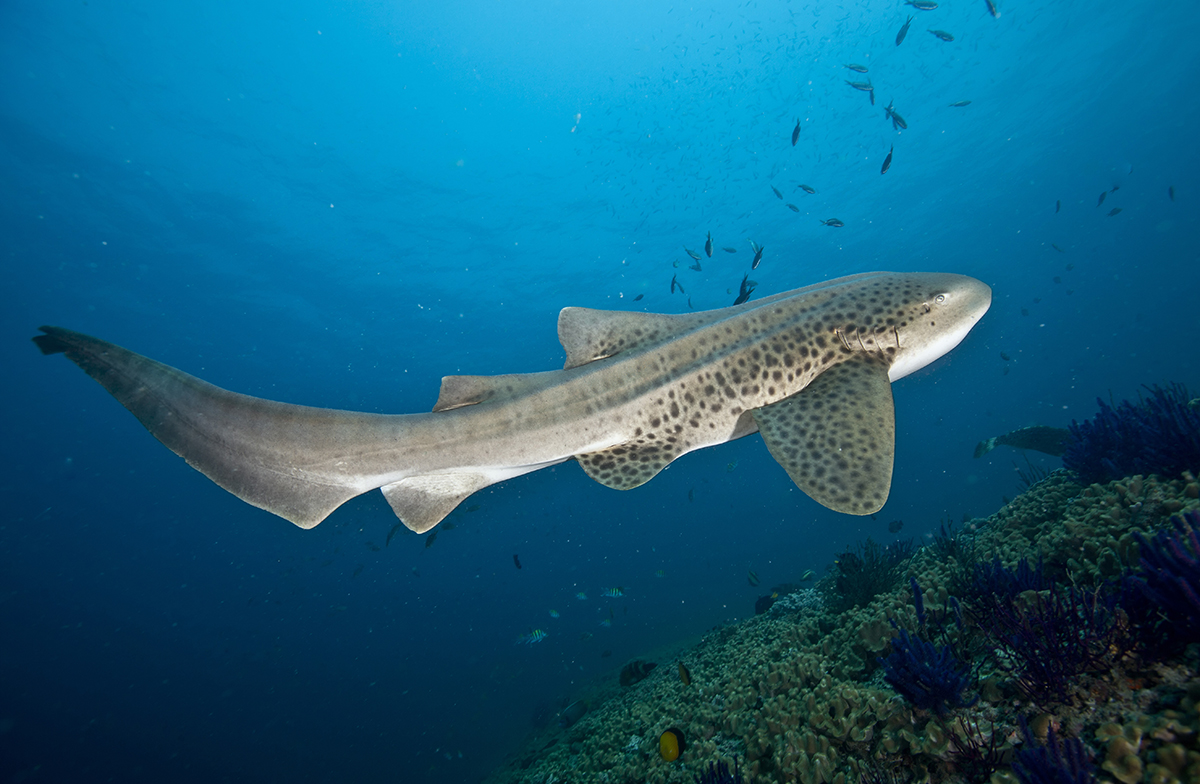
Socorro
Remote, wild and unforgettable, the Revillagigedo Islands – better known by the main island of Socorro – sit 400 kilometres south of Cabo San Lucas and rank among the world’s best destinations for BIG marine encounters. The archipelago includes San Benedicto, Roca Partida, Clarion and Socorro itself, the largest of the four.
Now marking its anniversary as a UNESCO World Heritage Site, the area is famous for Giant Pacific manta rays that pass within metres of divers, schools of hammerheads gathering at cleaning stations, and whale sharks seen between November and December and again from late April to May. From January to March, humpback whales arrive to breed and calve, while pods of bottlenose dolphins, large yellowfin tuna, wahoo, jacks and several endemic reef species are frequent visitors.
Diving here is for experienced divers confident in open-ocean conditions. Those ready for the challenge can explore these world-class sites aboard one of our liveaboards, the best way to experience Socorro’s remarkable marine life.
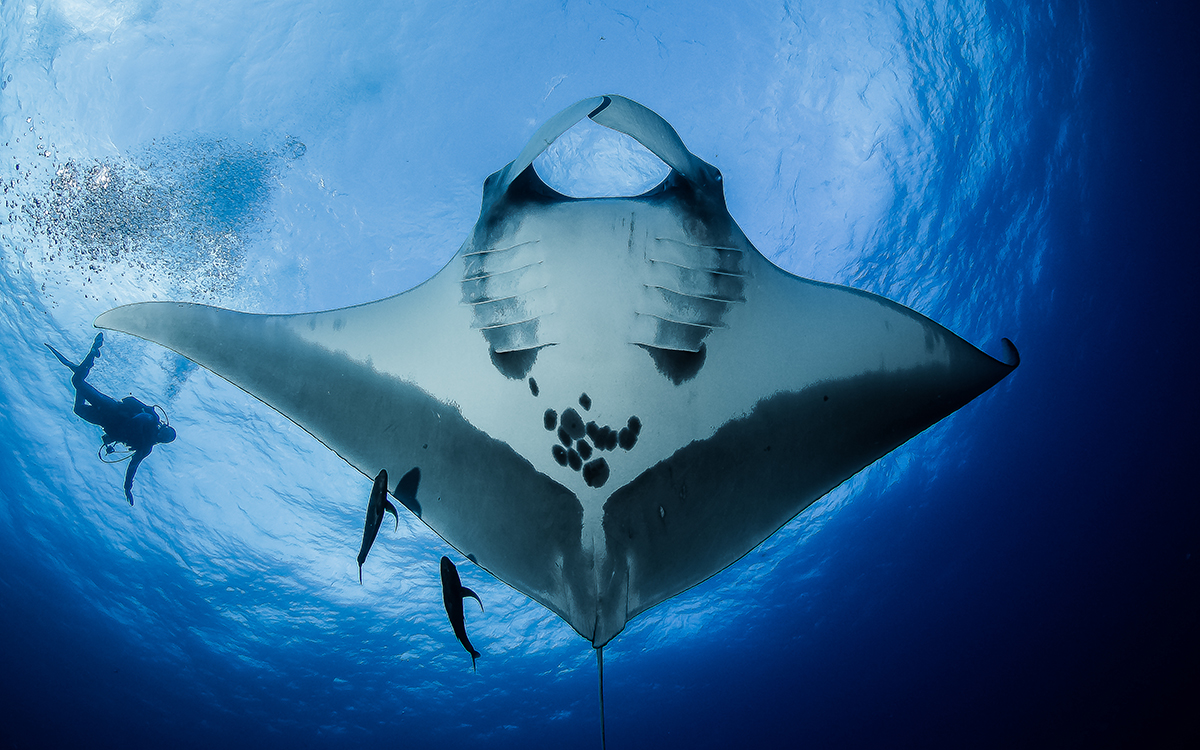
Sardinia
Steeped in history and folklore, Sardinia continues to impress as one of Europe’s best short-haul dive escapes. Just a few hours from the UK, this rugged Italian island blends mountains, dazzling coastlines and centuries of culture.
Sardinia’s story stretches back to the Bronze Age and the Nuragic civilisation, with several UNESCO World Heritage Sites still standing today. Beneath the surface, its northern shores and the La Maddalena Archipelago deliver clear water, healthy reefs and diverse marine life. Protected as a national park since 1994, this group of islands and islets offers some of the finest diving in the Mediterranean. From here, it’s also easy to reach southern Corsica and the Lavezzi Marine Reserve, another area known for excellent visibility and vibrant underwater scenery.
With direct flights to Olbia from several UK airports, Sardinia makes an ideal long-weekend escape for divers looking for warm water, good visibility and a dose of Mediterranean charm.
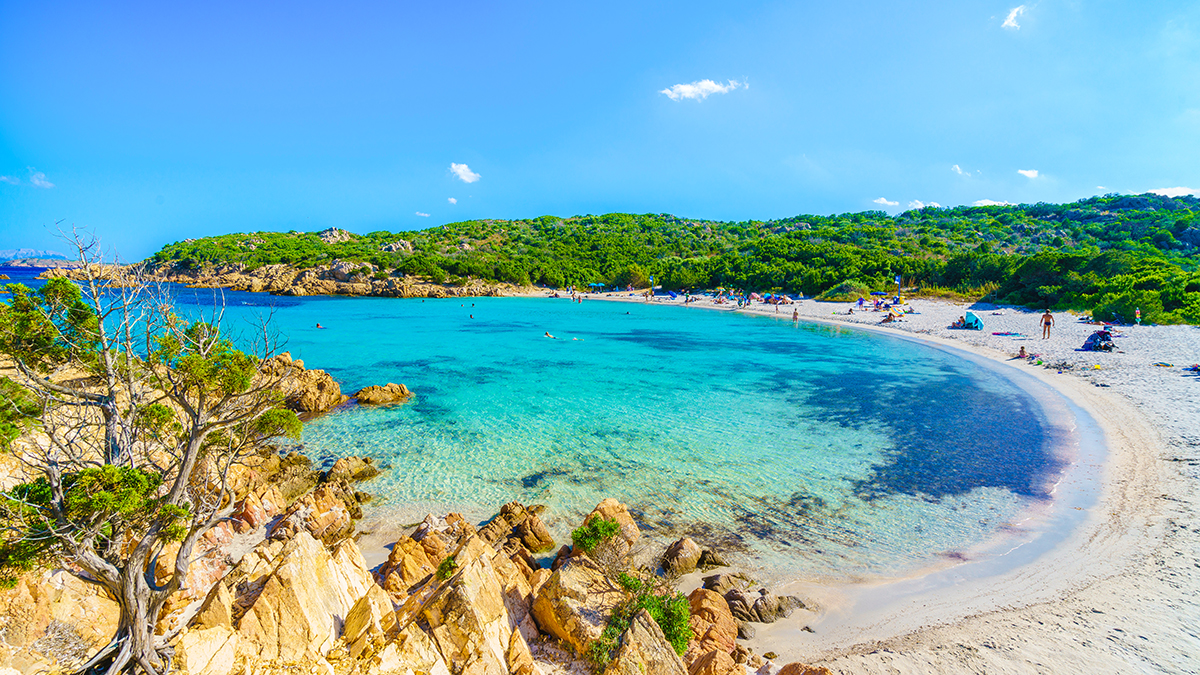
Galapagos
Straddling the equator 965 kilometres off Ecuador, the Galápagos Islands are among the most extraordinary dive destinations on Earth. Isolated, volcanic and protected as a World Heritage Site, the archipelago supports marine life found nowhere else. Endemic species found here include marine iguanas, Galapagos fur seals and Galapagos tortoise.
Here, powerful currents collide to create one of the richest ecosystems on the planet. Divers regularly encounter hammerheads, rays, turtles, sea lions, marine iguanas and, from May to November, some of the best whale shark encounters anywhere in the world. Between December and April, warmer water brings manta rays, mobulas and eagle rays. Darwin and Wolf Islands, 14 hours north by sea, are the highlights of any liveaboard itinerary, where dense schools of sharks and rays fill the blue.
With current exchange rates favouring UK travellers, Galápagos trips now offer better value than in recent years. Join one of our liveaboard expeditions to experience these waters at their best, then extend your stay to explore the islands’ volcanic landscapes and iconic wildlife.
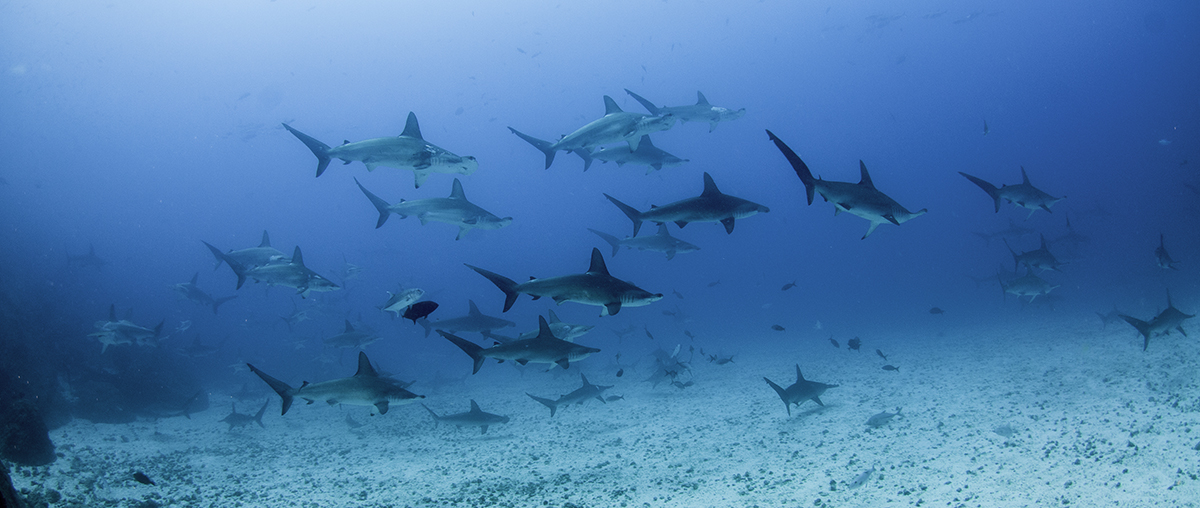
Contact our team today to find out more about all our diving holidays.
Find a trip
- Resort
- Liveaboard
Virtual Dive Events
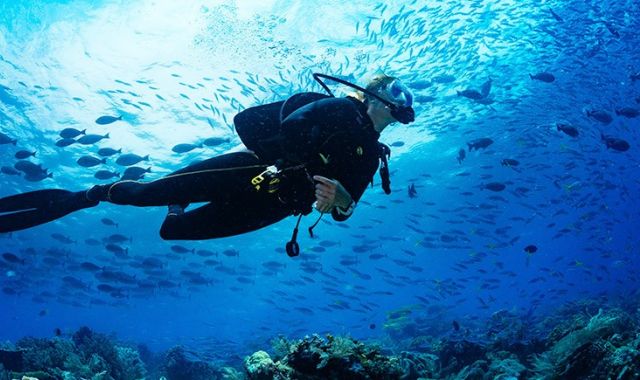
15 Oct 2025
We're currently planning our next series of talks, you can follow us on Facebook and Instagram to be the first to hear of future dates.
Watch our previous talks
If you missed our previous events, you can watch them here:
Discover Underwater Photography
Discover the Whale Sharks of the Galapagos
Discover the Whale Sharks of the Maldives
Discover the Manta Rays of Hanifaru Bay
Discover Muck Diving in Indonesia
Find a trip
- Resort
- Liveaboard
Diving with Cenderawasih Bay's Whale Sharks
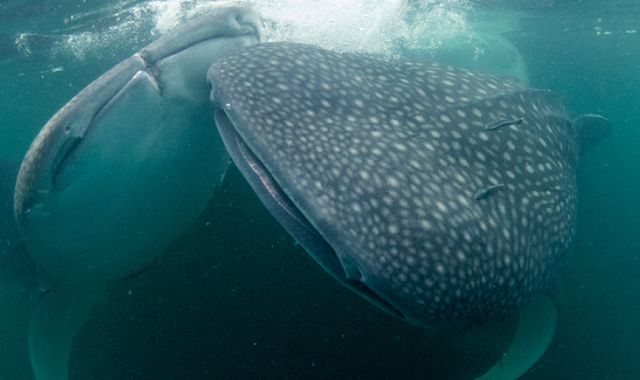
18 Aug 2025
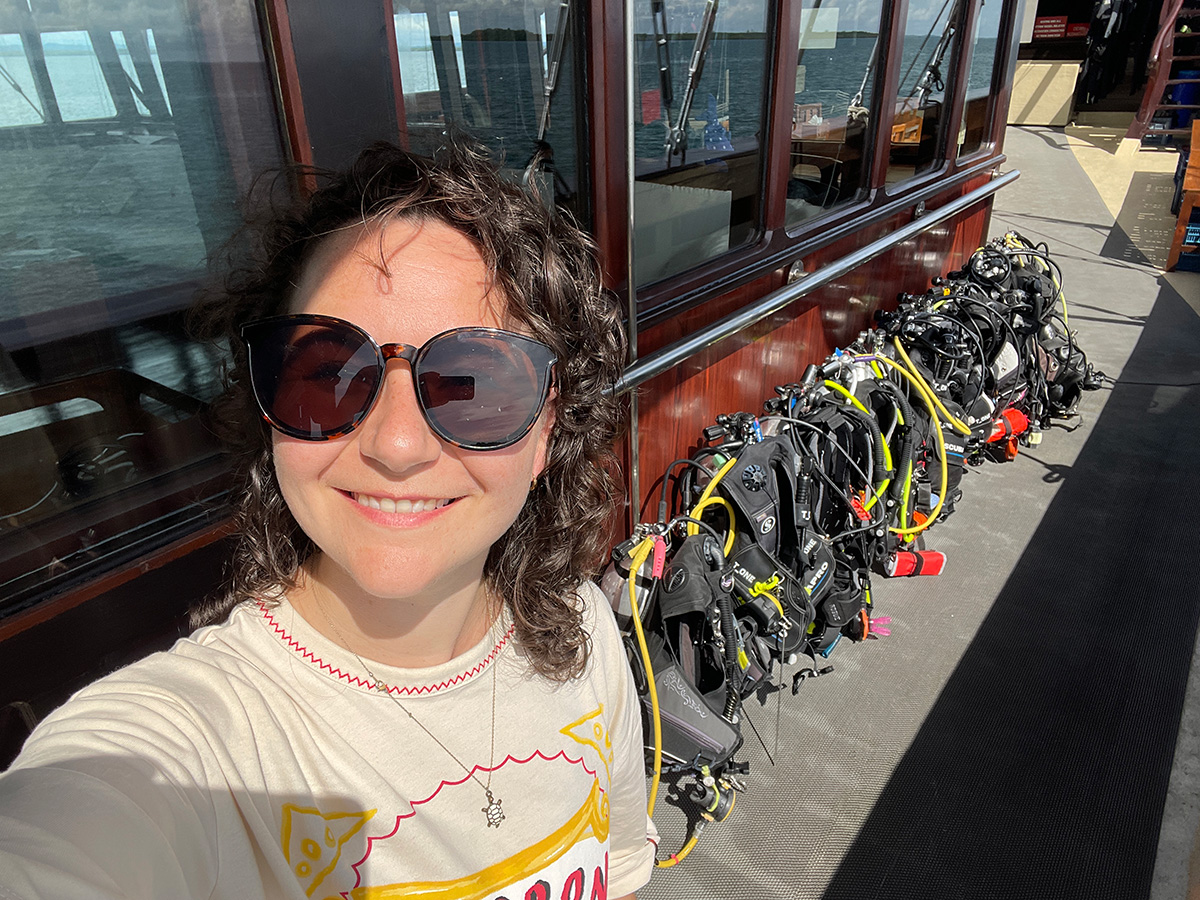
The Dewi Nusantara is as stunning schooner-style vessel, offering 5-star service and exceptional diving in Indonesia. While most wooden liveaboards in the region are traditional phinisi vessels, characterised by two masts and a distinctive V-shaped hull, the Dewi Nusantara was designed with a different vision. Her owners wanted to create more onboard space and a grander visual impact, all while retaining the essence of traditional Indonesian design. Constructed in 2007 by an experienced Bugis shipbuilder, the result is a luxurious and vast liveaboard that now sails through the remote, peaceful waters of Indonesia’s Coral Triangle, passing uninhabited islands along the way.
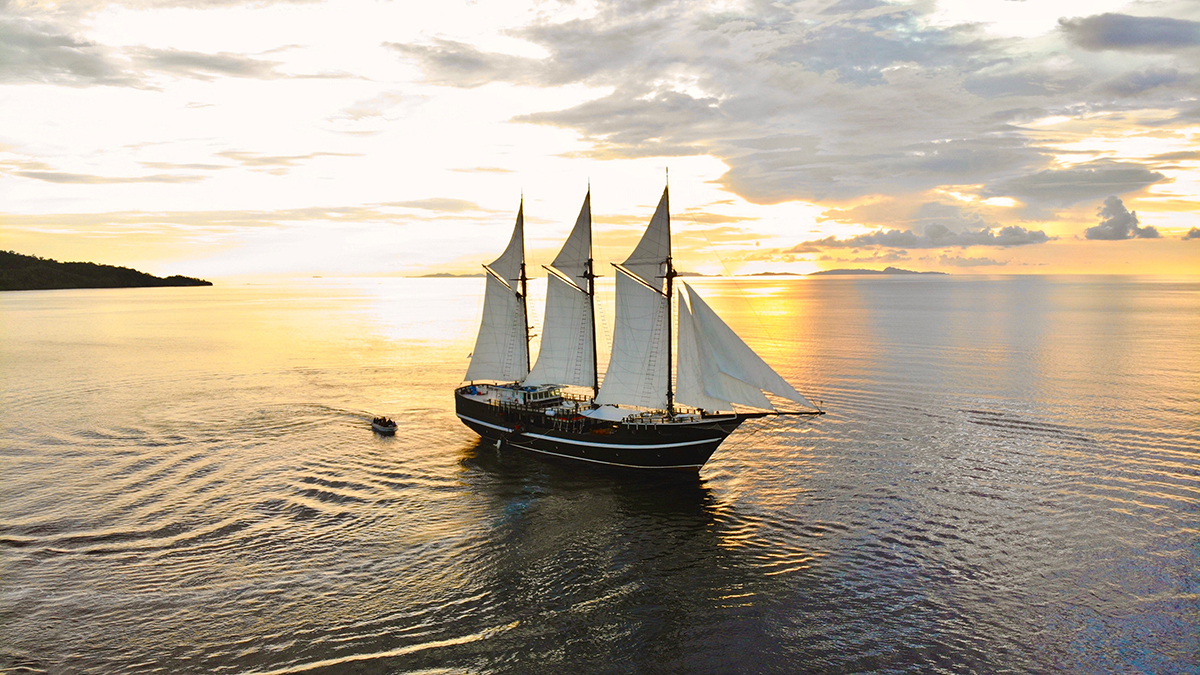
At more than 20 years old, many may write this vessel off to more recently constructed ships, but those that do are sorely missing out. Committed to keep the vessel (don’t say it, don’t say it!) shipshape, regular enhancements and maintenance have elevated the Dewi Nusantara beyond her already exceptional original glory.
We joined the Dewi Nusantara in Sorong, and set sail east around the Bird's Head Peninsula of West Papua into Cenderawasih Bay National Park. The vessel only operates in this area for a few weeks each year, and we were on the season's first departure. Before we even set a foot on board, the crew were warm and welcoming. Many have been part of the team for over 25 years, and their experience and dedication shows. The whole operation was seamless and thoughtful from beginning to end. A well run machine to say the least.
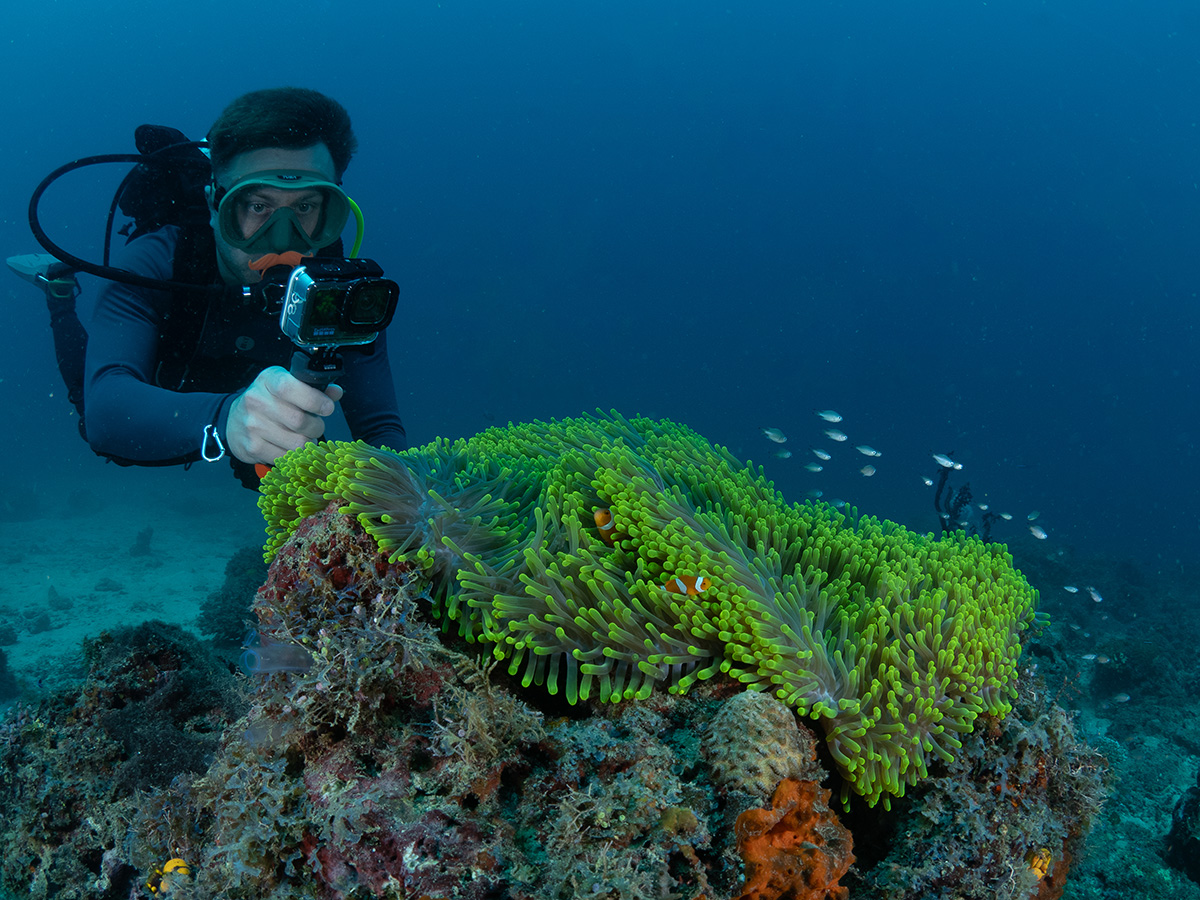
Diving with Whale sharks in Cenderawasih Bay
Now I'll jump to the good bit, even though this occurred mid-itinerary, we need to talk whale sharks, the biggest fish in the ocean. Known locally as Gurano Bintang, (beautifully translated as “starry shark”), these ethereal creatures are considered ancestral spirits by the indigenous peoples of Cenderawasih Bay. The local fishermen who inhabit the bagans (traditional fishing platforms) share their catch of silverside fish with the gentle giants for good luck, a tradition dating back generations. Today liveaboards and conservation organisations support this practice by compensating the fishermen in exchange for time in the water. For divers, this timeworn relationship almost guarantees up close and longer encounters compared to anywhere else in the world that I've come across.
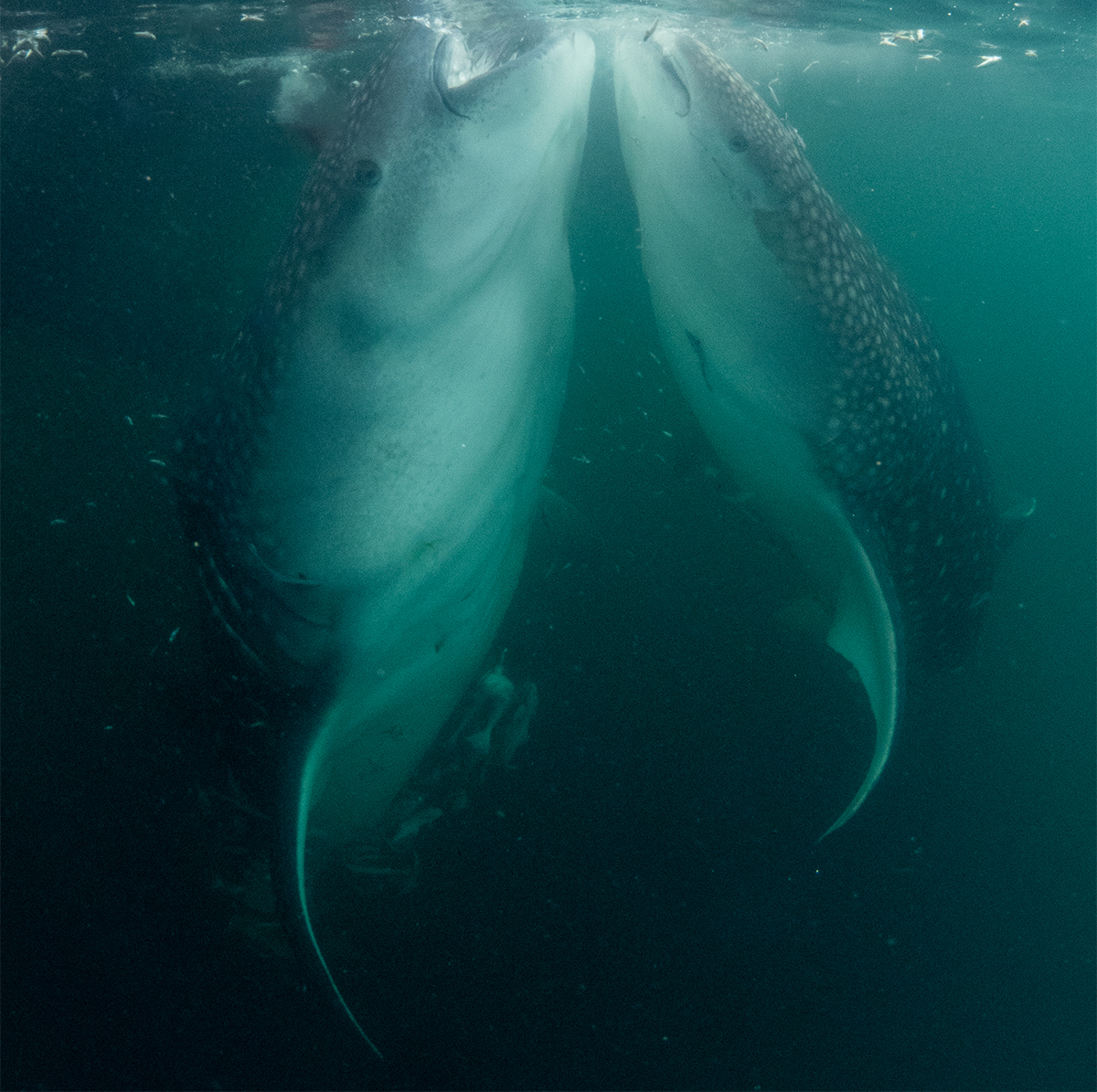
The Dewi Nusantara operated two half-day whale shark sessions during our itinerary in Cenderawasih Bay. Early morning, when we reached Kwatisore, the dive team visited the bagans to see how many whale sharks were at each local fishing platform. Not to see if they were there, but how many. That's how common they are in these waters. The cruise director, Yan, briefed us on best practices and explained that each of the two groups would have one dive per day, with the remaining time for snorkelling. Divers were positioned under the bagan, where 10-metre reference lines had been dropped, while snorkellers had full rein.

We set off in spacious, comfortable skiffs towards the bagan. We’d been told two whale sharks were present, and the excitement among us was palpable. My group was first to dive, while the rest snorkelled. Before we even reached the platform, we spotted the unmistakeable mouth jutting out the water. I've been lucky enough to have seen a few whale sharks in my time, but this was something different. We back rolled into the water and headed under the bagan with the whale sharks completely unbothered by our presence. Because so few liveaboards visit these waters, and for such a short season, the whale sharks aren't continuously hassled by tourists, and when treated with respect and space they allowed us to bask in their glory.
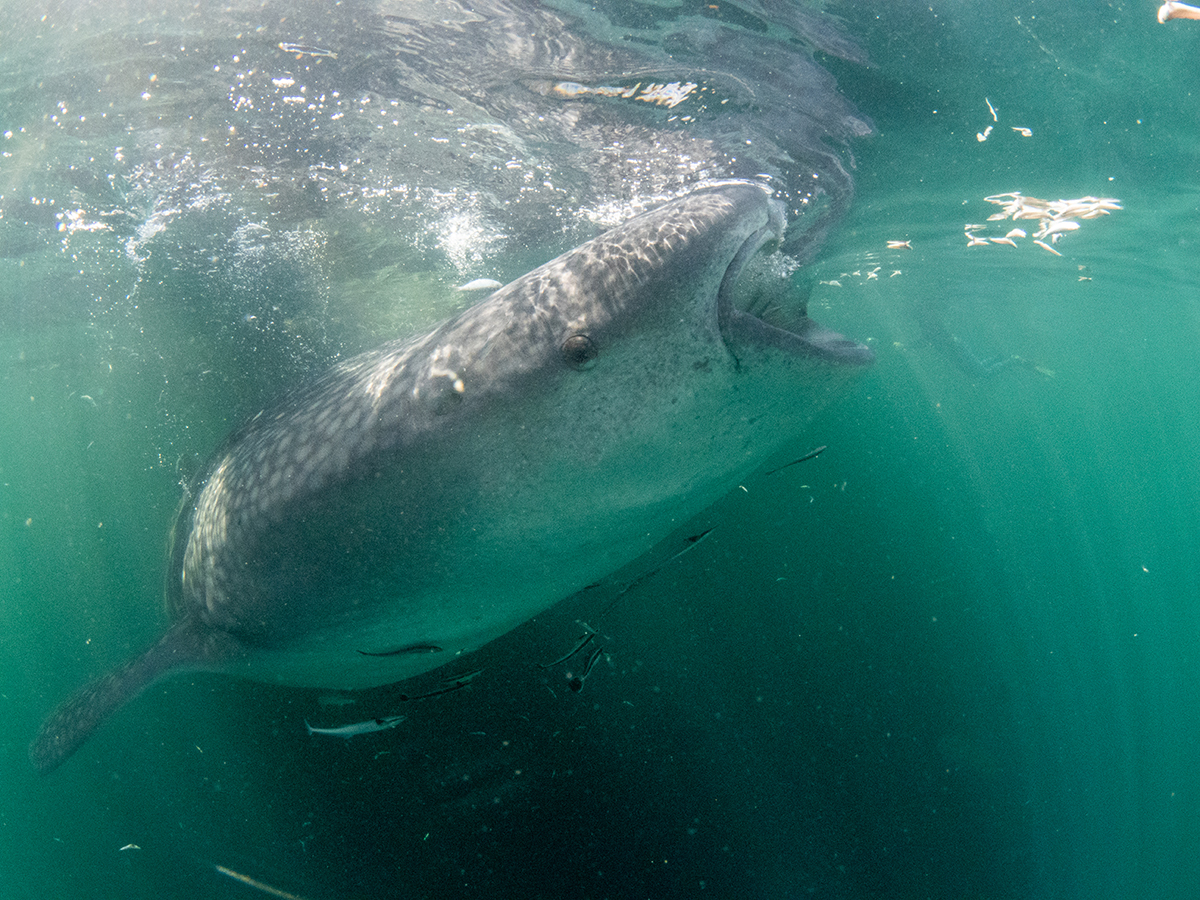
We spent over an hour watching two whale sharks at six metres, feeding, dancing and bumping into one another. After the initial adrenaline burst, observing from below was truly humbling. The largest whale shark measured about eight metres, the 'smaller' around five. Our guide suggested we check our dive computers while level with their tails for an indication of size. Although visibility was murky, it added to the ambiance. Occasionally, one would swim into the abyss, and that was when the fun started. We had no idea where they were going to pop up. We’d be watching one that was around and then all of a sudden, just inches from your elbow, a fish the size of a car would swim past. On one occasion, I turned to my buddy to do the “did you see that” point, only to see him mask-flooded-crying-with-laughing from watching me jump out my skin. We spent over four hours in the water with the whale sharks that day, only leaving the water for breakfast, and I couldn't wait to do it all over again.
On day two, we had more consistent sightings. This time there were three whale sharks; one biggen’ at over nine metres, who was absolutely the boss, and two smaller ones, around four to six metres, jostling for the best positions around the bagan. Snorkelling was another experience altogether. We watched in awe as their gigantic mouths hoovered the silverside from the surface, sending ripples down the length of their pale undersides with every gulp. It was a pleasure to float and absorb their behaviour, picking up on route patterns and hierarchy. Staying the recommended two metres away was a challenge at times, it was just best to stay in place and lay as still as possible (breathing in like a scene from Mission Impossible) as they glided beneath us. Although, they continued to keep us on our toes and there were plenty of muffled yelps through snorkels and giggles as one would catch someone off guard.
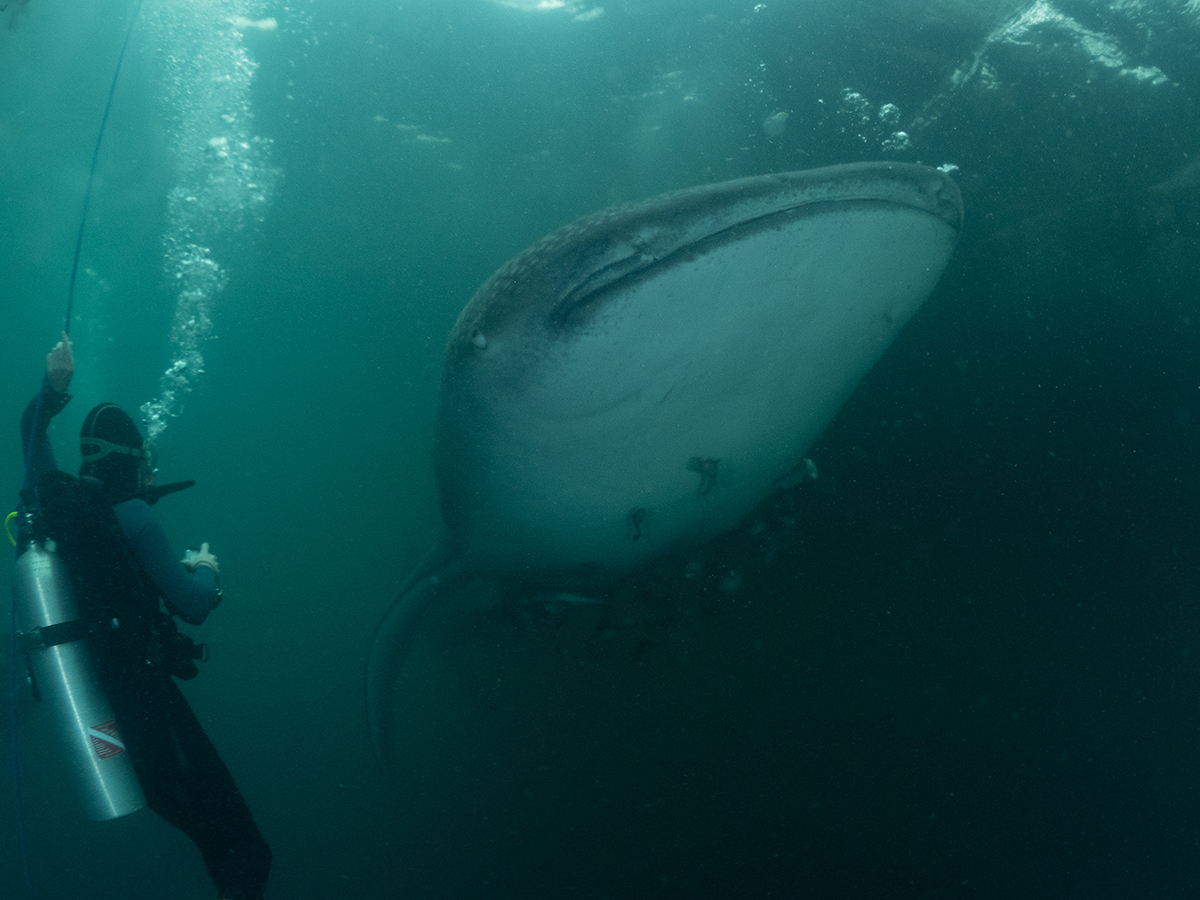
Throughout the whale shark encounters, the guides were exceptional - offering advice, answering questions, and recommending the best positions for the photographers and how to shoot the whale shark. When someone wanted to rest, a skiff was always nearby to watch from the surface, or a rope was offered to hold on to if the current was pulling, or we could be shuttled back to the mothership. Nothing was too much, and it was often offered before the thought had even crossed your mind. For those with cameras, having two days allowed us to settle into it and improve our positioning for the best shot, it was invaluable time (although that assumes that you have your camera on the right settings ... which I, rather embarrassingly, didn't on the second day!).
Other dive sites in Cenderawasih Bay
The high level of service continued on our other dives. My guide Risko was fantastic, he very quickly picked up mine and my buddy’s diving style and tailored our dives accordingly. His keen eyes spotted a wonder of tiny marine life and endemic species, even helping to frame shots. I really value a guide who listens to their divers, and each guide on board flawlessly did this. We spotted a number of endemic species, including the Cenderawasih fairy wrasse, Cenderawasih epaulette 'walking' shark, Caitlin dottybacks, Walton’s flasher wrasse and Cenderawasih long-nosed butterflyfish. The region’s unique geological history also means that some species typically found at deeper depths, like the ornate angelfish, can be seen within recreational limits.
Besides diving with whale sharks, the highlights of Cenderawasih Bay's diverse dive sites were:
- Manokwari’s Pillbox Wreck - a WWII vessel laying on its side, covered in corals and goat fish, but the star was the enormous cabbage coral patch next to it. I directed by buddy in an attempt to add scale to the images, but it still did not show the full extent of this beauty. Less cabbage patch and more cabbage field!

- Pasin Pajang - this was a muck night dive, something I hadn't expected in this area, but wow it delivered. Macro life included bottletail squid, Shaun the leaf slug nudibranch, pygmy pipehorse, juvenile waxy file fish, and sawtail shrimp to name just a few.
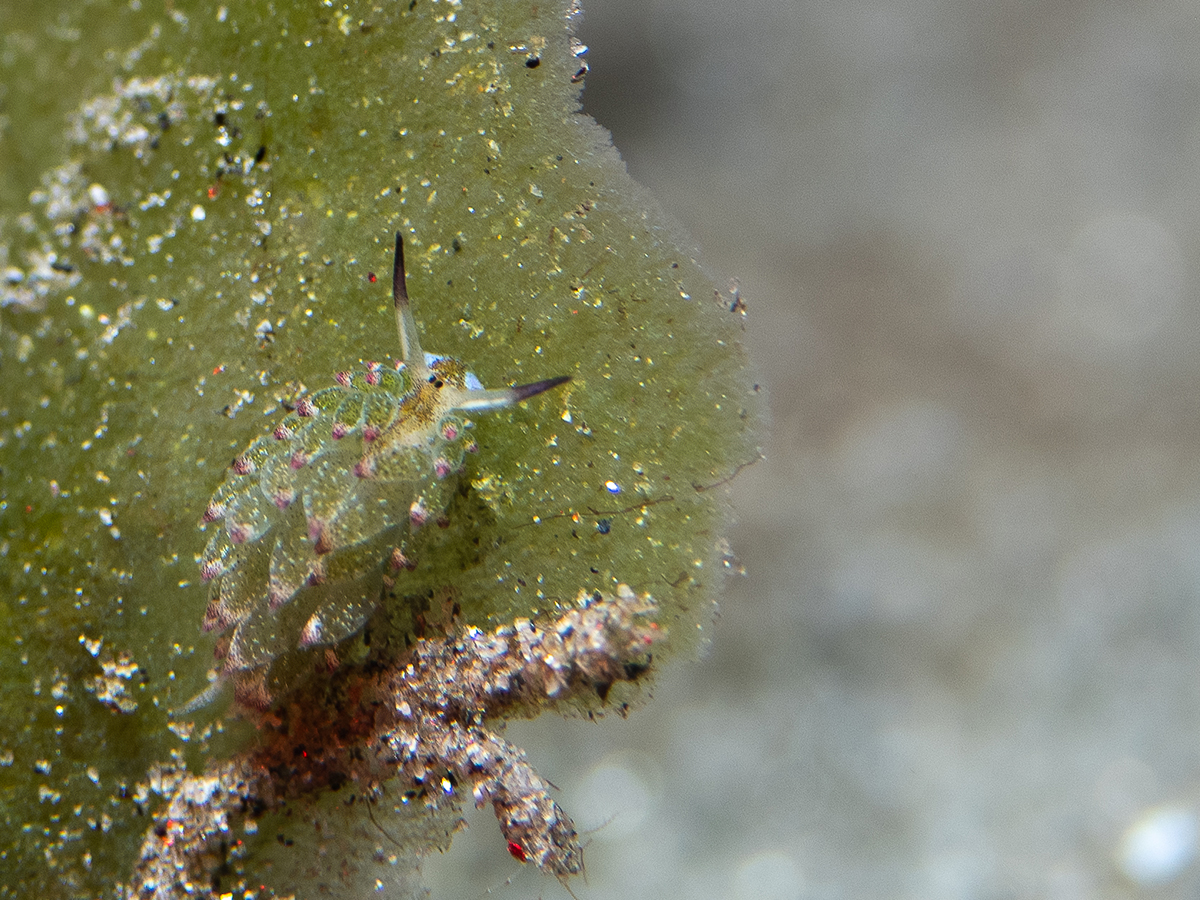
- Tanjung Manggar - this was my buddy’s 100th dive, I thought “well we won't see anything, it’s jinxed” and I was pleasantly wrong. We saw an almost entirely black oceanic manta ray in the first 10 minutes of the dive, then schooling barracuda, a wobbegong shark, several black-tip reef sharks, a hawksbill turtle and to top it off the liveliest spiny lobster.
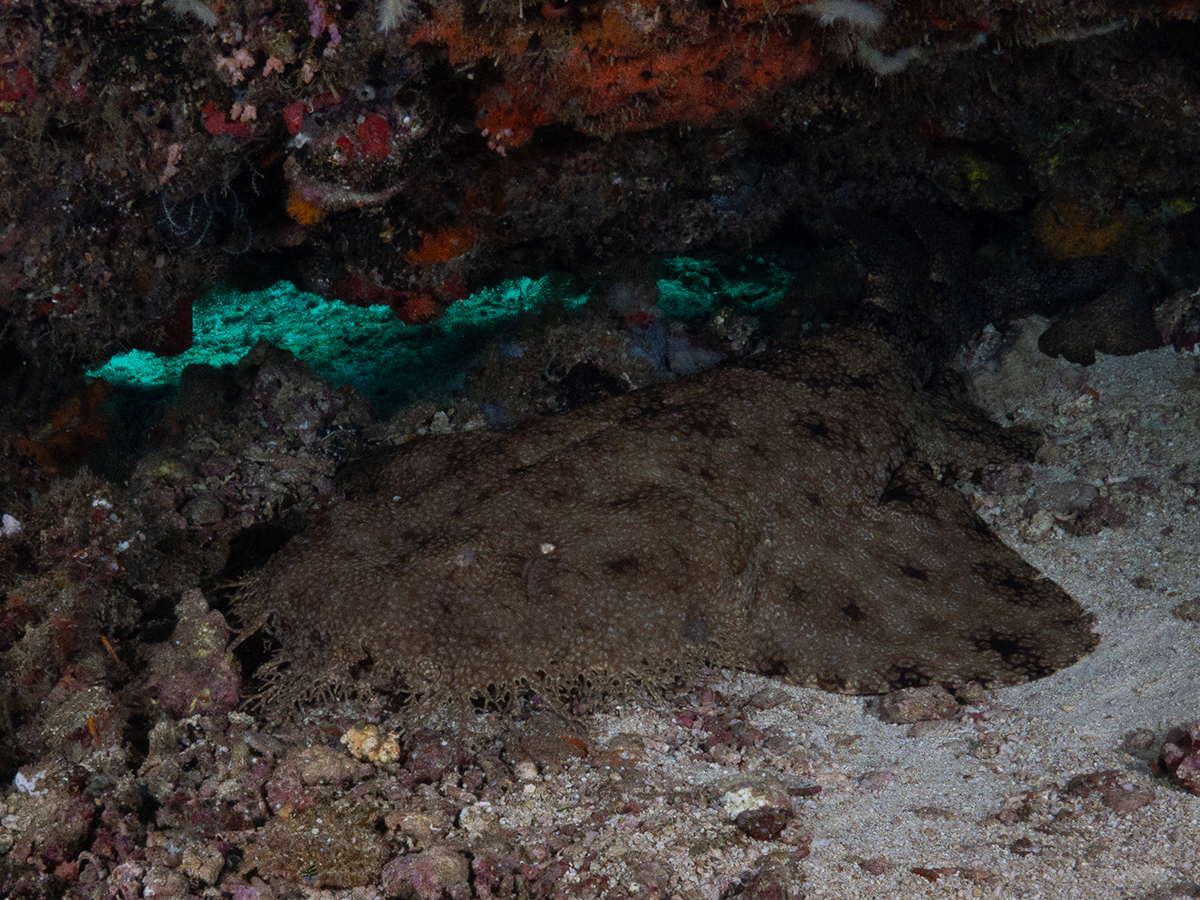
The ten nights I spent on the Dewi felt like a dream. Impeccable service, wonderful diving and world-class whale shark interactions. I’ve not even mentioned the post dive mini-massages and the hot chocolate after night dives, the generously sized cabins, or the best food I’ve ever had on a liveaboard.
I thoroughly recommend the Dewi Nusantara for anyone looking for an elevated liveaboard in Indonesia, you cannot go wrong with this crew.
If you want to see whale sharks in Cenderawasih Bay, join Dewi Nusantara on a future trip. Contact our team today to discuss your dive holiday plans.
Find a trip
- Resort
- Liveaboard
Northern vs Southern Red Sea Liveaboards
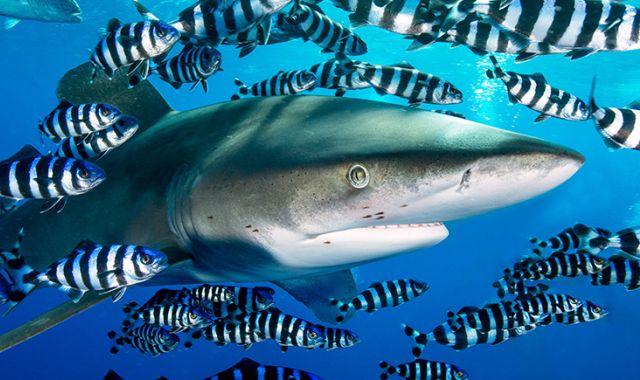
4 Aug 2025
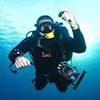 "As a technical and recreational diving instructor with years of experience in the Red Sea, I've had the privilege of guiding divers of all levels across this extraordinary region. From beginner-friendly northern liveaboard trips to advanced dives in the southern sites, the variety is unmatched. The Red Sea's ability to cater to every skill level makes it a must-visit destination for scuba enthusiasts worldwide."
"As a technical and recreational diving instructor with years of experience in the Red Sea, I've had the privilege of guiding divers of all levels across this extraordinary region. From beginner-friendly northern liveaboard trips to advanced dives in the southern sites, the variety is unmatched. The Red Sea's ability to cater to every skill level makes it a must-visit destination for scuba enthusiasts worldwide."
Shem Tarko
The Red Sea is a scuba diver's playground, offering crystal-clear waters, rich coral reefs, and an underwater world teeming with marine life that promises world-class dive sites for both beginners and advanced divers. After the magic beneath the surface, there's something truly special about evenings spent on the sun deck of a liveaboard, as the sun sets behind rugged mountains, painting the sky in breathtaking shades of gold and crimson, reflecting the name of this iconic location. Add to this the après-dive camaraderie with other divers, sharing stories and lively banter, and it's easy to see why the Red Sea is one of the world's most cherished diving destinations.
For British recreational and technical divers, Egyptian liveaboard safaris are the ultimate way to explore the best of Egypt's underwater world and its fantastic dive sites. Choosing between the Northern Red Sea and the Southern Red Sea can be challenging, as each region offers its distinct charm and allure. Whether you're drawn to the mysterious history of the north or the wild marine life of the south, the Red Sea delivers incredible vibes, an extraordinary underwater world, and unmatched diving experiences. Let's dive into the Red Sea and discover your next unforgettable adventure together.
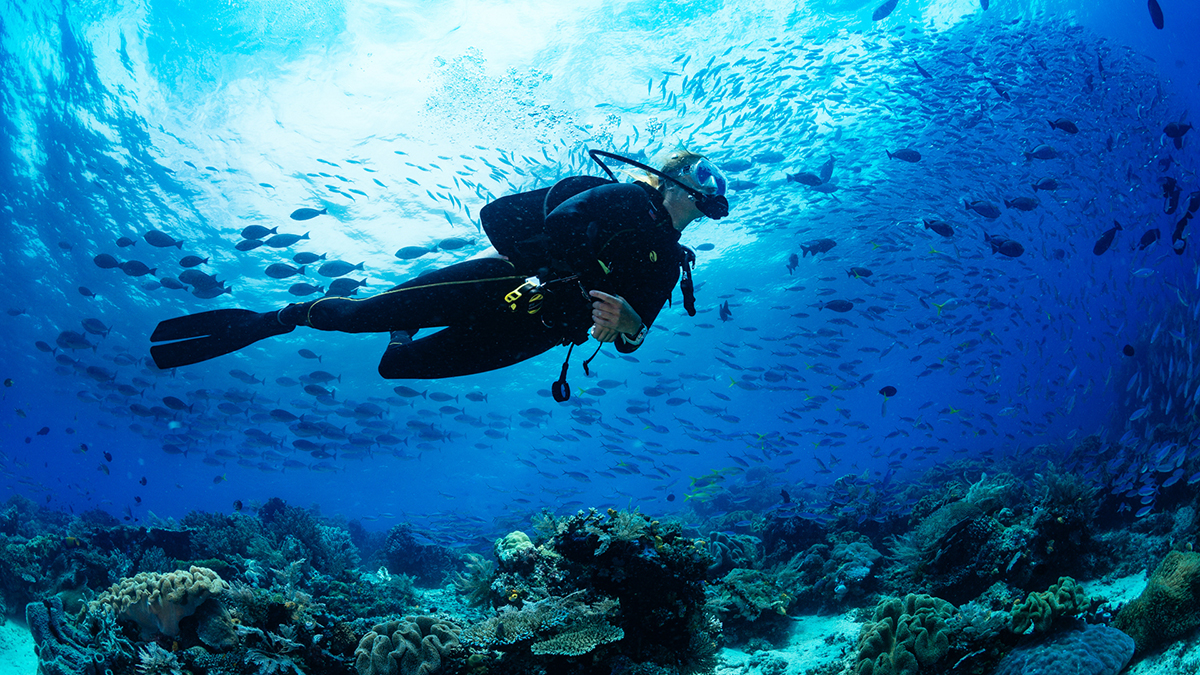
What are the key differences between northern and southern itineraries?
The Red Sea is celebrated as one of the world's finest scuba diving destinations, offering spectacular dive sites year-round. Whether you're a beginner or an experienced diver, its warm waters have something for everyone. With over 1,200 vibrant fish species—20% found nowhere else—and more than 300 stunning coral species creating a kaleidoscope of colours, it's truly an underwater paradise.
- Marine Life: Northern itineraries offer a mix of reef fish, world-class wrecks, and colourful coral gardens, while the south is more focused on pelagic life, with usual reef sharks and dolphin encounters. The best diving season to encounter sharks in the Red Sea largely depends on the specific species and location, which we investigate further below.
- Accessibility: Liveaboards in the Northern Red Sea offer shorter, more accessible routes, making them a popular choice for divers looking to explore iconic dive sites while staying close to tourist hubs like Sharm El Sheikh and Hurghada. These routes are ideal for individuals seeking to combine convenience with adventure while minimising time spent travelling between dive sites. In contrast, Southern Red Sea trips require longer travel, as they typically depart from Marsa Alam or Hurghada and cover greater distances to reach the region's most remote reefs. These itineraries are perfect for more experienced or adventurous divers eager to venture farther and discover the pristine, less-crowded reefs that make the Southern Red Sea so unique.
- Experience Level: The north is a bit more beginner-friendly, with fewer currents and offering a mix of shallow sites and intermediate wreck dives. In contrast, much of the south is better suited for advanced divers seeking more thrilling conditions and big marine life. Diving in the Southern Red Sea often involves navigating currents, making the experience more challenging and requiring a higher level of skill. The exception may be the St John’s region, which is characterised by colourful coral grottoes that make for relatively easy dives.
- Scuba Diving Style: Northern trips departing from Hurghada offer fantastic reef and wreck diving, combining fascinating wreck exploration, such as the iconic Thistlegorm, Dunraven, or the wrecks of Abu Nahas, with coral reef dives teeming with marine life. Mini safaris of three to four days are also possible from Sharm el Sheikh, focusing on similar dive sites. On the other hand, southern liveaboards from Marsa Alam focus on drift and wall diving on remote and pristine dive sites, offering the chance to encounter pelagic species such as sharks and rays, along with thrilling drop-offs and dramatic underwater landscapes.
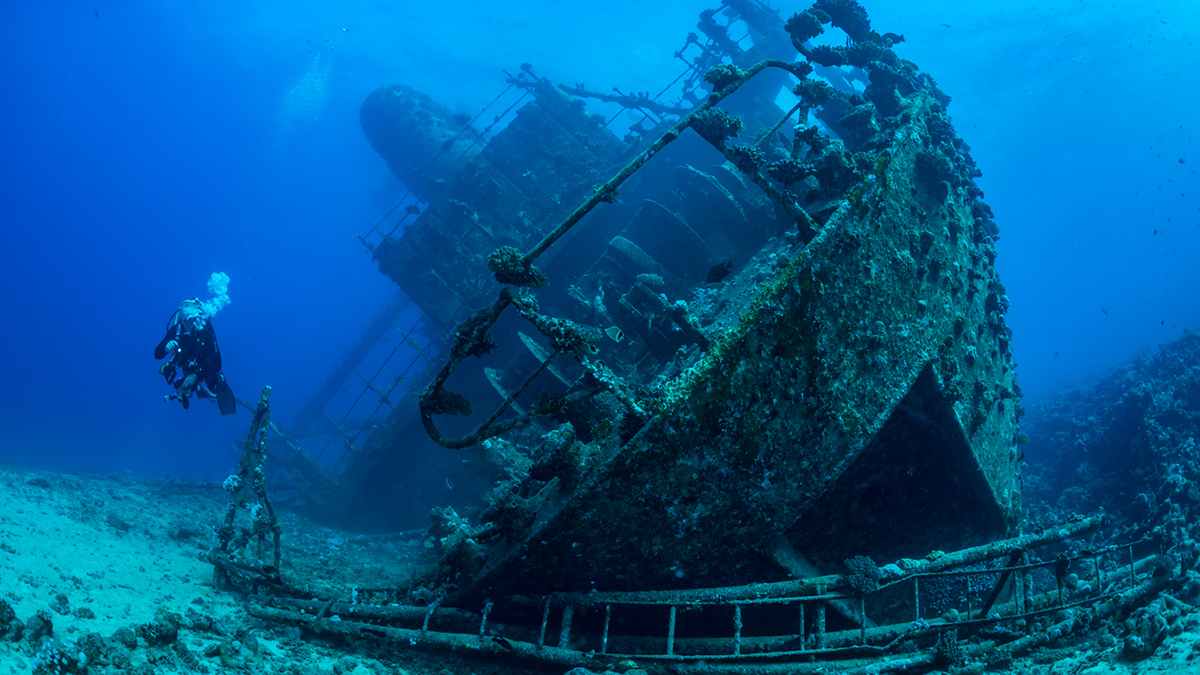
Scuba diving in the Northern Red Sea
The Northern Red Sea is an iconic destination for divers, renowned for its world-class wreck dives and deep reef systems teeming with marine life. This region features legendary dive sites like the SS Thistlegorm, often described as the "world's best wreck dive", and the Ras Mohammed National Park, a marine reserve famous for its dramatic wall dives, colourful corals, and abundant fish species. Divers can encounter schools of jacks, barracudas, and anthias at these sites, creating a magical underwater experience.
Another top dive site in the north is the Abu Nuhas Ship's Graveyard (a.k.a Sha'ab Abu Nuhas), where multiple wrecks lie close together, providing an incredible exploration opportunity for wreck enthusiasts. The most iconic shipwrecks include the SS Carnatic, Kimon M, Chrisoula K, and Ghiannis D. These sites, combined with shallow coral gardens, make the northern routes suitable for divers of all experience levels, from beginners to advanced divers.
Many dive sites near Sharm El Sheikh and Hurghada are also accessible by day boat trips. However, for the ultimate convenience, Red Sea liveaboards operating from these popular tourist hubs offer unparalleled scuba diving experiences. With shorter itineraries that combine stunning reefs and historic wrecks, this region is an ideal choice for scuba divers looking for variety without the need for long crossings.
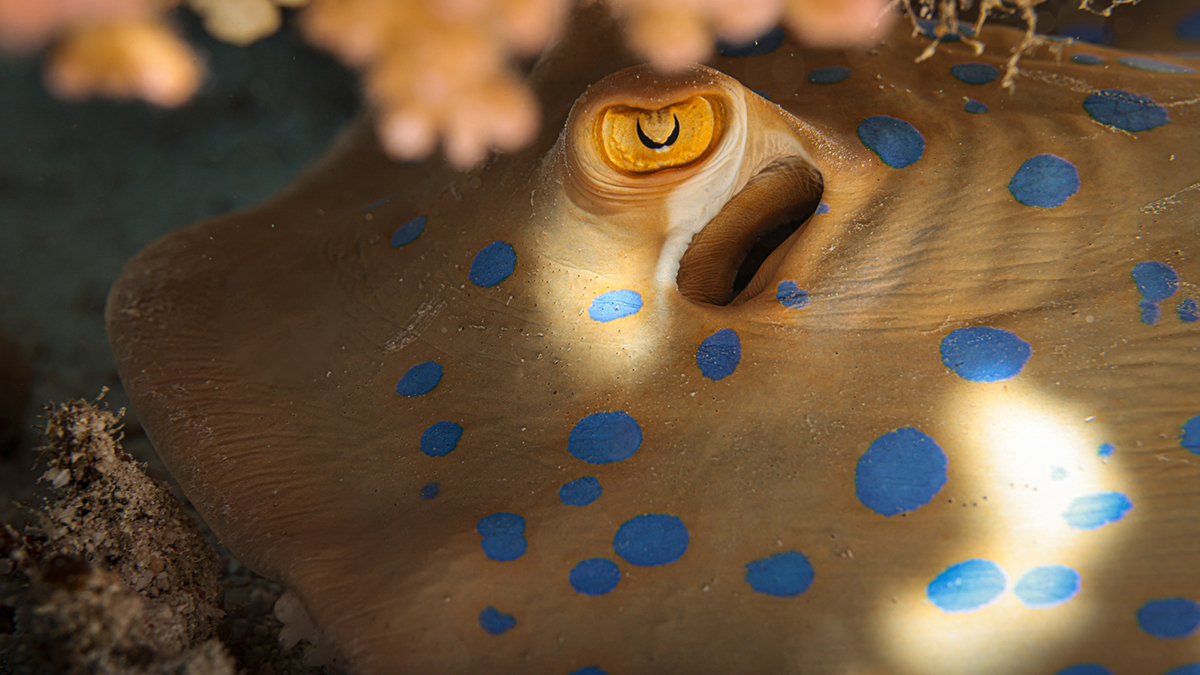
Best dive sites of the Northern Red Sea
Northern routes from Sharm El Sheikh or Hurghada guarantee access to the most fantastic dive sites. From shallow reefs and soft corals to wall dives teeming with marine life, drift dives, and iconic wrecks, this region offers the best scuba diving experiences in Egypt. Here are some of the most famous dive sites in the Northern Red Sea:
- Strait of Tiran: Home to renowned dive sites like Jackson Reef, Woodhouse Reef, Gordon Reef, and Thomas Reef. A must-visit for breathtaking wall diving, stunning coral reefs, and abundant marine life. With a bit of luck, you may encounter reef sharks or even hammerhead sharks.
- Jackfish Alley: Renowned for its vibrant underwater ecosystem, this site offers exhilarating swim-throughs, deep caves, and colourful reef fish species. Shark Reef is an added highlight for thrill-seekers.
- Ras Mohammed National Park: A pearl of the Red Sea, a world-famous diving location with stunning coral reefs and diverse marine life. It remains one of the top scuba diving destinations in Egypt.
- Ras Um Sid: Ideal for night dives and colourful reef exploration. Known for its beautiful sea fan corals, this site is accessible as a shore dive or through day trips.
- Panorama Reef: Offers incredible steep walls, vibrant soft corals, and an abundance of marine life. It's also accessible via day trips from Hurghada.
- Shark Observatory: A hotspot for spotting sharks and marine giants like whale sharks, offering a unique scuba diving experience.
- Shark and Yolanda Reef: Located in Ras Mohammed National Park, this site features stunning coral gardens and a wreck. It's popular with all divers, with shallow coral pinnacles for beginners and cascading reef walls of Yolanda Reef.
- Yolanda shipwreck - Also known as Jolanda, this Cypriot ship ran aground at Ras Mohammed. The wreck is split between a shallow reef and a deeper section 160 metres below the surface. Divers often joke that if you've reached the deeper part, you've gone too far!
- Wrecks of Abu Nuhas: Known as the "Ship Graveyard", this site is home to several historic shipwrecks waiting to be explored.
- SS Thistlegorm shipwreck: One of the world's most famous wreck dives. This British cargo ship, rediscovered by Jacques Cousteau in the 1960s, is rich in history and marine life. Loved by underwater photographers.
- Dunraven shipwreck: Dive into the history of the Dunraven, a fascinating shipwreck loved by many divers.
- Rosalie Moller shipwreck: A stunning World War II shipwreck offering an unforgettable experience for many divers. It's also a popular technical dive starting at 20 metres and going all the way to 55 metres.
- Salem Express shipwreck: One of the recent tragic shipwrecks, considered one of the best wreck dive sites in the Red Sea.
- Wreck of the Lara: A 120m supply ship that sank in the 1980s. The wreck is broken into two parts—one resting on a shallow reef, while the other has formed coral gardens at a depth of 60 metres. One of our fave technical dives where you can dive deep!
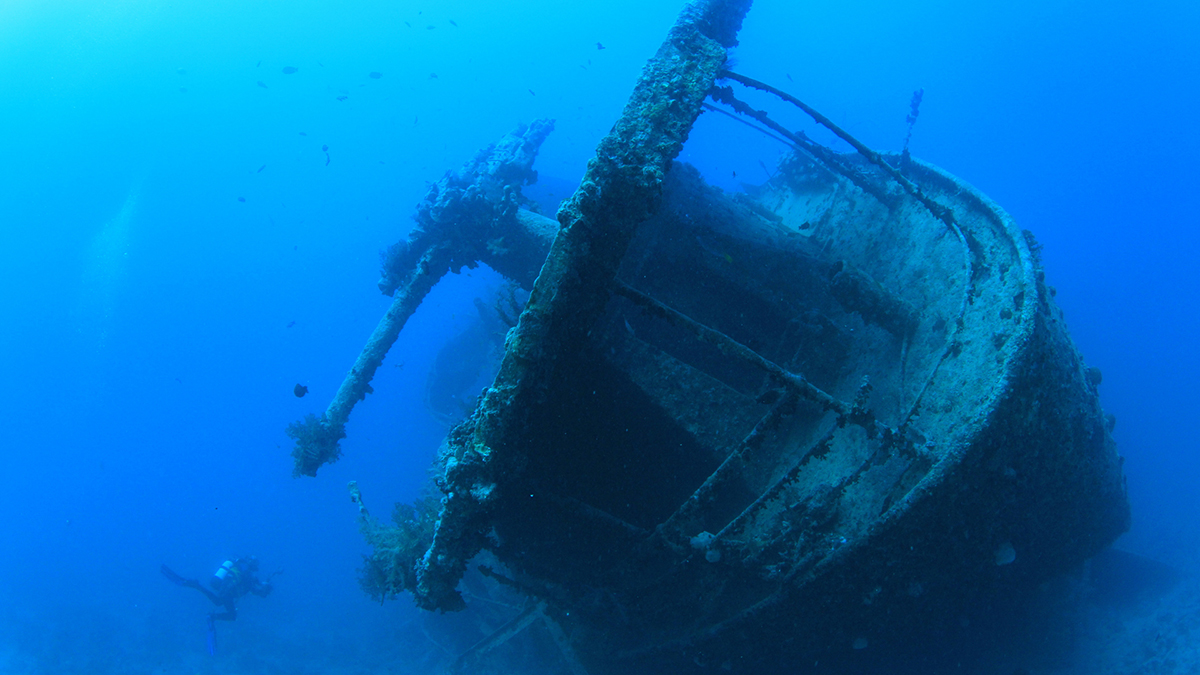
Best Northern Red Sea liveaboard itineraries
If you're starting your scuba diving journey in Egypt, two of the most popular dive trips to consider are the "Wrecks and Reefs", ideal for divers of all levels, and "Get Wrecked". Departing from Hurghada, these trips offer a stunning mix of colourful reefs, vertical walls, and world-class wreck dives. For advanced divers seeking adventure, there are itineraries that combine Northern Red Sea dive sites with the iconic Brothers Islands. Here are some of the most sought-after northern safaris:
- Reefs & Wrecks: Explore vibrant coral reefs and historic wrecks, including the Thistlegorm, Abu Nuhas, and Ras Mohammed.
- Get Wrecked: A dream for wreck enthusiasts, featuring dives at the Thistlegorm, Giannis D, Carnatic, and the Rosalie Moller.
- Famous Five: Discover iconic dive sites like the Brothers, Daedalus Reef, Elphinstone, and more, known for their stunning marine life and dramatic drop-offs.
Top fish species found in the Northern Red Sea
The Northern Red Sea is an underwater arcadia, teeming with an incredible array of marine life. This vibrant ecosystem is home to stunning soft and hard corals and iconic shark species such as hammerheads, grey reef sharks, and oceanic whitetip sharks. Its crystal-clear waters shimmer with myriad colourful reef fish, such as lionfish, stonefish, elegant butterflyfish, striking Picasso triggerfish, and blue-spotted stingrays. You'll also encounter coral groupers, parrotfish, moray eels, crocodile fish, silver sweepers, Napoleon wrasse, squirrelfish, and vibrant anthias, all weaving together a mesmerising tapestry of underwater life. On rare occasions, majestic visitors like mako sharks, manta rays and whale sharks pass through, adding to the wonder of this extraordinary seascape.
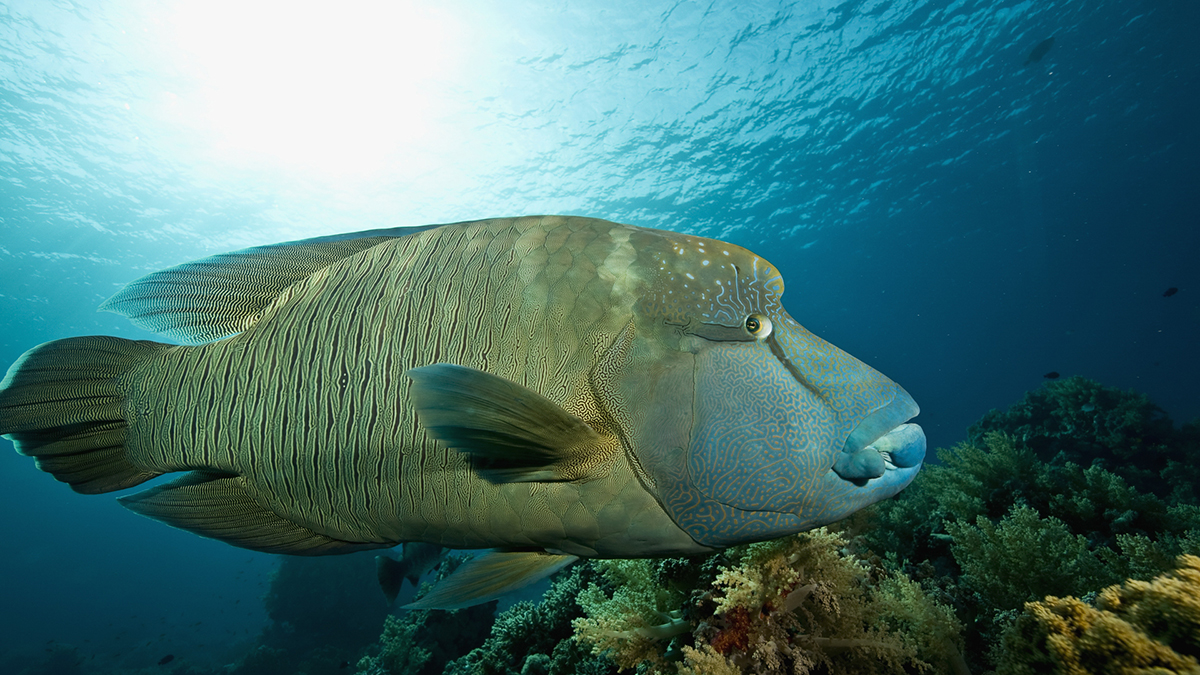
Best time to see sharks in the northern Red Sea
While the Northern Red Sea is a haven for wreck enthusiasts, it also offers thrilling opportunities for shark sightings, particularly around the Strait of Tiran. The north side of Jackson Reef at Tiran is renowned for schooling hammerhead sharks, making it a popular site for shark lovers. At Tiran, the best time to witness these incredible sharks is during the summer months, when their presence becomes more frequent.
What makes the Southern Red Sea special?
The Southern Red Sea offers some of Egypt's best scuba diving, with untouched reefs and incredible pelagic encounters. This remote destination is perfect for divers seeking adventure. Sites like Brothers Islands, Daedalus Reef, and Elphinstone Reef are famous for their dramatic walls and rich marine life. Southern Red Sea liveaboards, departing from Marsa Alam or Port Ghalib, offer longer trips to these remote areas. With fewer crowds and unparalleled marine encounters, diving in the south is a truly wild and exciting experience.
One of the south's biggest draws is its rich marine life. Divers can encounter pelagic species such as dolphins, hammerhead sharks, oceanic whitetips, thresher sharks, and, occasionally, even a tiger shark. Stunning coral gardens and steep drop-offs only add to its appeal. The Southern Red Sea feels raw and untamed, making it a must-visit for adventurous divers looking for the ultimate Egyptian marine wildlife diving experience.
The Southern Egyptian Red Sea appeals to more experienced divers with its more challenging sites, but it also offers some options for beginners. Some dive spots around St. John's Reef and Fury Shoals feature easier conditions, stunning coral formations, and an abundance of marine life, making them perfect for less experienced divers. For those looking for the best diving in Egypt, the Southern Red Sea is an unforgettable destination!
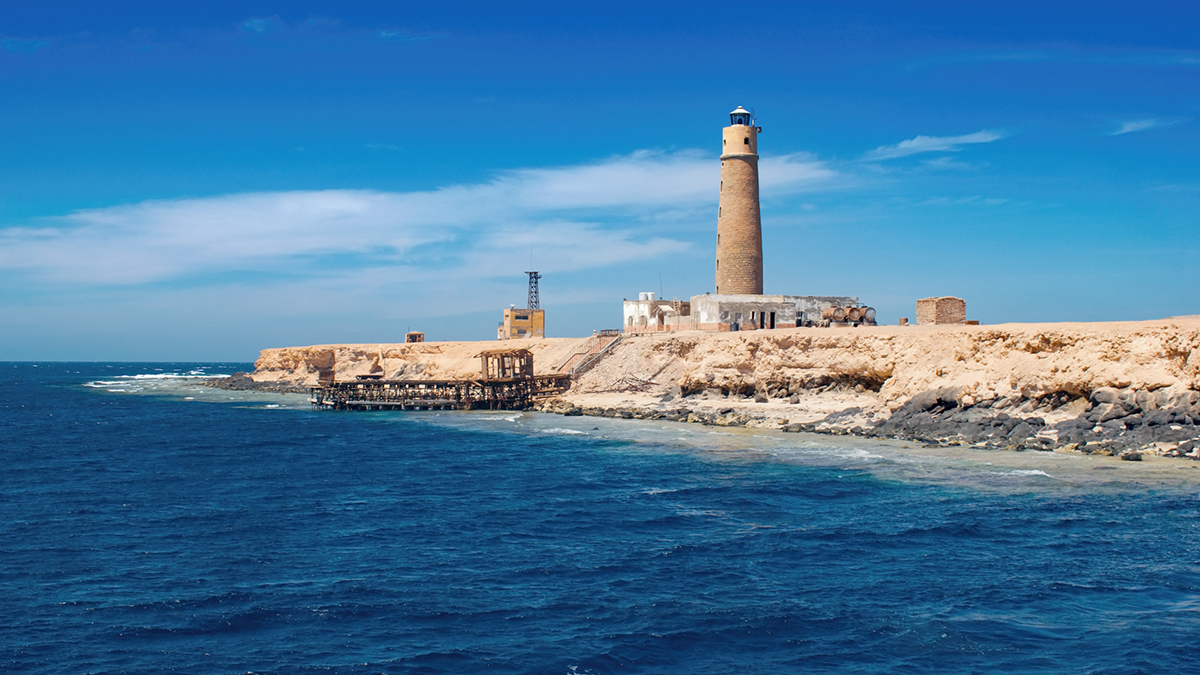
Best dive sites in the Southern Egyptian Red Sea
The Southern Red Sea is home to some of the world's best dive sites and most pristine reefs. Here are a few must-visit dive spots for your next underwater adventure:
- Daedalus Reef – A top choice for experienced divers and drift diving enthusiasts, known for stunning coral-covered steep walls and pelagic marine life like grey reef sharks, hammerhead sharks, and thresher sharks. Keep an eye out in the blue for manta rays.
- Elphinstone Reef – Famous for its dramatic drop-offs and frequent encounters with oceanic whitetip sharks and grey reef sharks, this site offers excellent drift diving opportunities. For technical divers, the world-famous Elphinstone Arch at 55 metres is an unforgettable experience.
- Brothers Islands (Big Brother & Little Brother) – Known for shark encounters, vibrant coral reefs, wrecks, and diverse marine species. With luck, you might spot oceanic whitetip sharks, hammerhead sharks or even a thresher shark cruising above the wreck of the Aida—the Brothers Islands rank among the best scuba diving spots in Egypt.
- Wreck of Numidia – Located on Big Brother Island, this iconic shipwreck rests in an almost vertical position on a steep wall, making it one of Egypt's premier dive sites. It's a top destination for recreational and technical divers, offering a unique underwater experience.
- Fury Shoals – A collection of dive sites perfect for all levels of scuba diving. The area features colourful hard and soft coral gardens teeming with marine life. Fury Shoal Garden and Dolphin Reef are not the only two main attractions here waiting to be explored.
- St. John's Reef – Includes iconic dive spots like Dolphin House, Claudia Reef, Paradise Reef, and St. John's Caves. Known for its stunning underwater caves, intricate tunnels, and pristine coral formations, it's a top destination for beginners, with plenty of easy and shallow dives.
- Elba Reef – Located in Egypt's far south, this hidden gem boasts unique biodiversity and stunning coral landscapes. Plus, the wreck of SS Isola di Levanzo for keen wreck explorers.
- Rocky Island – Small in size but big on adventure, this site offers dramatic steep walls, thriving coral growth, pelagic marine life, and the hidden deep wreck of the SS Maidan, considered a holy grail for many technical divers.
- Zabargad Island – Also known as St. John's Island, this hidden gem features vibrant, healthy reefs and exceptional opportunities for recreational scuba diving. It's a top spot for shark enthusiasts and those who love the thrill of drift diving.
- Abu Dabbab - a renowned site featuring resident dugongs (a.k.a sea cows), a well known Red Sea shore dive and a frequent stop for some safari boats.
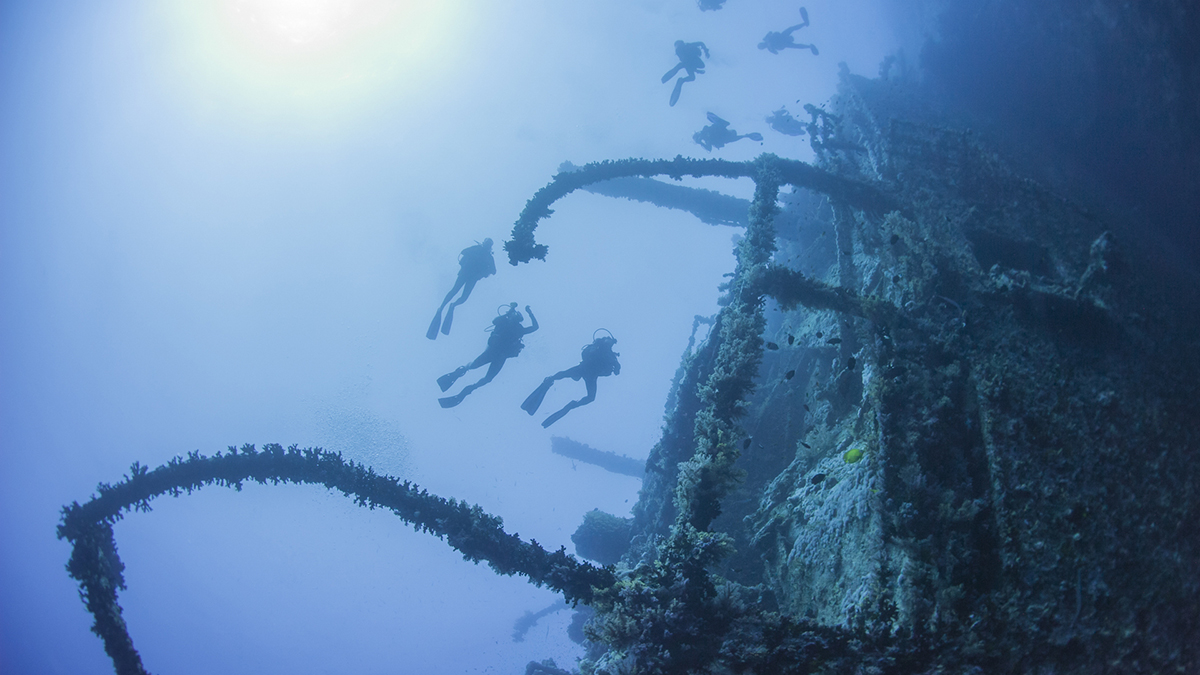
Best southern Red Sea liveaboard itineraries
The Southern Red Sea offers endless opportunities for adventure, making it a dream destination for divers of all levels. With stunning shipwrecks, dramatic drop-offs, vertical walls, and beautiful reefs, the southern routes are something special. Here are some of the top southern route dive sites you don't want to miss:
Liveaboard trips departing from Marsa Alam or Hurghada:
- Simply the Best: Explore Egypt's top dive sites, including the Brothers, Daedalus Reef, and Elphinstone, known for stunning coral reefs and encounters with pelagic species like sharks and manta rays.
- Daedalus & St. John's: Discover the breathtaking walls of Daedalus and the vibrant coral gardens of St. John's, with opportunities to spot hammerheads, dolphins, and reef sharks.
- Daedalus & Fury Shoals: Dive into the remote Daedalus Reef and Fury Shoals, home to pristine coral formations, colourful marine life, and occasional shark sightings.
- Deep South: Venture to the Southern Red Sea, exploring sites like St. John's and Zabargad, featuring dramatic drop-offs, caves, and incredible biodiversity.
- Brothers & Elphinstone: Visit two iconic dive destinations, the Brothers Islands and Elphinstone Reef, renowned for their vibrant reefs, Numidia and Aida wrecks, and frequent thresher shark encounters.
- Red Sea Sharks: Perfect for shark enthusiasts, this itinerary focuses on spots like Brothers, Daedalus, and Elphinstone, offering excellent chances to see hammerheads, thresher sharks, and oceanic whitetips.
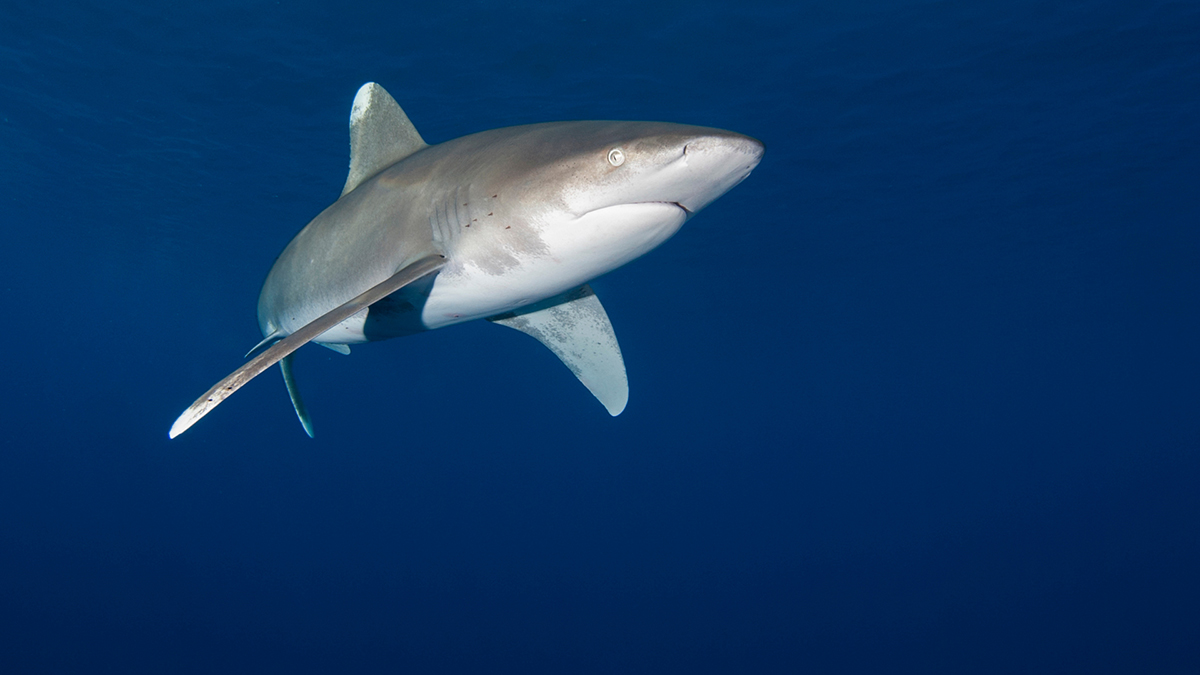
Top fish species found in the southern Red Sea
The Southern Red Sea offers an incredible diversity of marine life, making it a haven for divers and snorkellers alike. Among the top small and medium-sized fish species, you can find ever present anthias, butterflyfish, and angelfish, which add bursts of colour to the coral reefs. Parrotfish, moray eels, wrasses, and triggerfish are also commonly encountered, contributing to the health of the reef ecosystems. Beyond these smaller reef dwellers, the region is famed for encounters with various shark species, such as oceanic whitetip reef sharks, thresher, hammerheads, and silky sharks. Several renowned locations, such as Abu Dabbab, are known for spotting dolphins and dugongs. Manta rays also grace the waters with their elegant movements, providing unforgettable moments for those lucky enough to spot them.
Best time to see sharks in the Southern Red Sea
The Red Sea offers incredible diving throughout the year, but timing plays a role in witnessing specific shark species. From May to June, lucky visitors can observe groups of schooling hammerhead sharks at Daedalus, creating unforgettable memories for scuba divers. Meanwhile, October to April is the prime time for spotting oceanic whitetip sharks (Longimanus), particularly around the most remote reefs. While oceanic whitetips are present year-round, sightings are most frequent and thrilling during the cooler months, making this period ideal for shark enthusiasts.
Which Red Sea liveaboard should you choose?
Your choice between Northern and Southern Red Sea dive trips depends on your diving interests, experience level, and the type of underwater adventure you're seeking. Widely considered one the best scuba diving in the world, the Red Sea offers something for everyone.
The Northern Red Sea is perfect for wreck lovers, coral reef enthusiasts, and beginners alike. It features a fantastic variety of easily accessible sites, from vibrant coral gardens to iconic shipwrecks. One of the highlights is the legendary SS Thistlegorm, a WWII-era wreck brimming with history and marine life. The north also boasts stunning locations like the Straits of Tiran, Ras Mohammed National Park, and Abu Nuhas, offering wrecks, coral formations, and colourful reef fish species in calm, clear waters, making it ideal for divers of all levels.
If you're an experienced diver looking for a thrill, drift dives on vertical walls, and pelagic life, the Southern Red Sea is your ultimate destination. Known for its remote and unspoiled reefs, the south delivers adrenaline-pumping dives and close encounters with apex predators like hammerhead sharks, oceanic whitetips, and even tiger sharks. Sites like Elphinstone, Daedalus, and the Brothers Islands feature dramatic drop-offs, incredible coral walls, and abundant pelagic life, providing unforgettable experiences for the bold and adventurous.
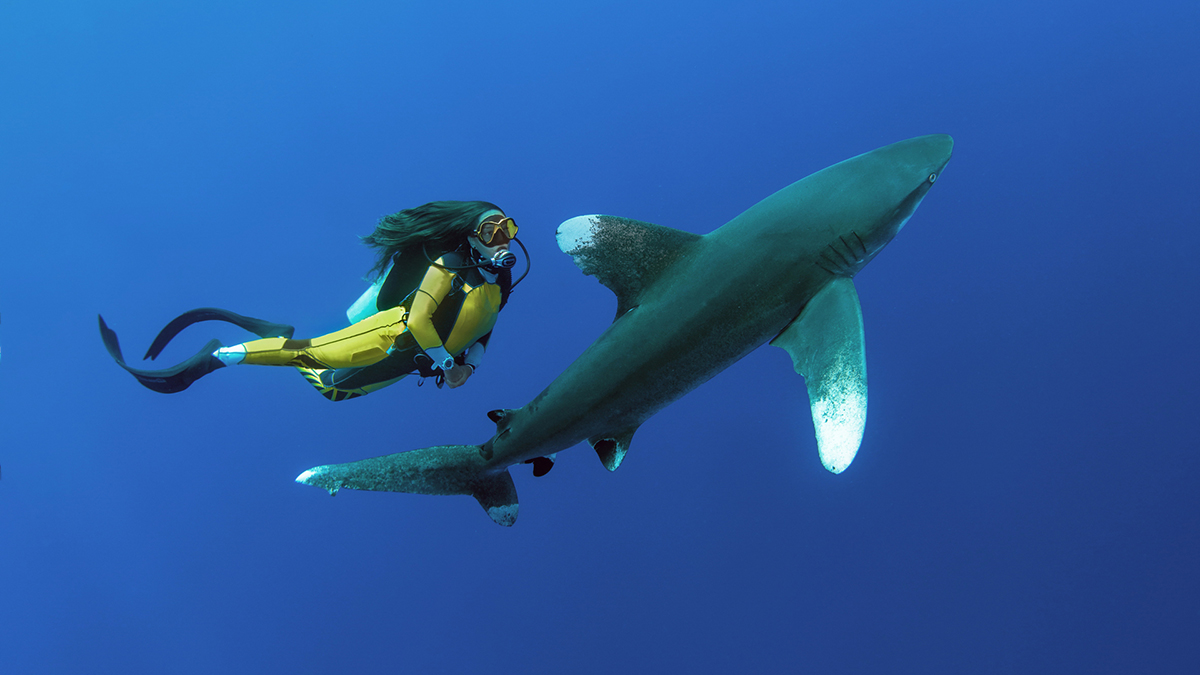
Our best Red Sea liveaboard fleets:
With over 30 years of experience, Regaldive ensures the best diving in Egypt with world-class safety and quality standards. By exclusively partnering with only the best liveaboard operators in the region, we guarantee best in class safety procedures, superb service, and highly professional operations. Our partners include Master Fleet, Blue Planet, Sea Serpent and Emperor Liveaboards among others.
Browse our portfolio of Red Sea liveaboards, or contact the friendly Regaldive team today to plan your Egypt diving holiday.
Find a trip
- Resort
- Liveaboard
Top 10 Places to Learn to Dive
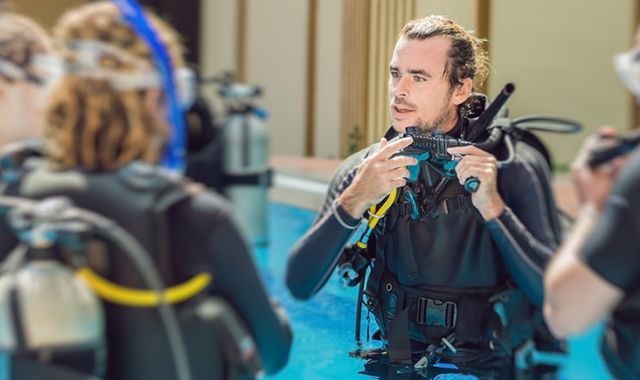
2 Jun 2025
Choosing the right destination to learn to dive is crucial and there are many factors to consider. The professionalism of the dive centre, safety, access to suitable dive sites for student divers and consistent underwater conditions are just some of the factors to consider.
Here, we give our tips on the top ten diving destinations for beginners.
Sharm el Sheikh, Red Sea
Sharm el Sheikh has all the ingredients for the perfect learn to dive holiday. Just 5 hours from the UK and Europe this area boasts a range of sites that are perfect for beginner divers with safe, shallow coral reefs on which to get comfortable with being underwater. Add in professional dive centres, year round sunshine and great marine life and it is not hard to see why Sharm kicks off our list.
Learn more about our 8-day Learn to Dive Sharm el Sheikh holiday.
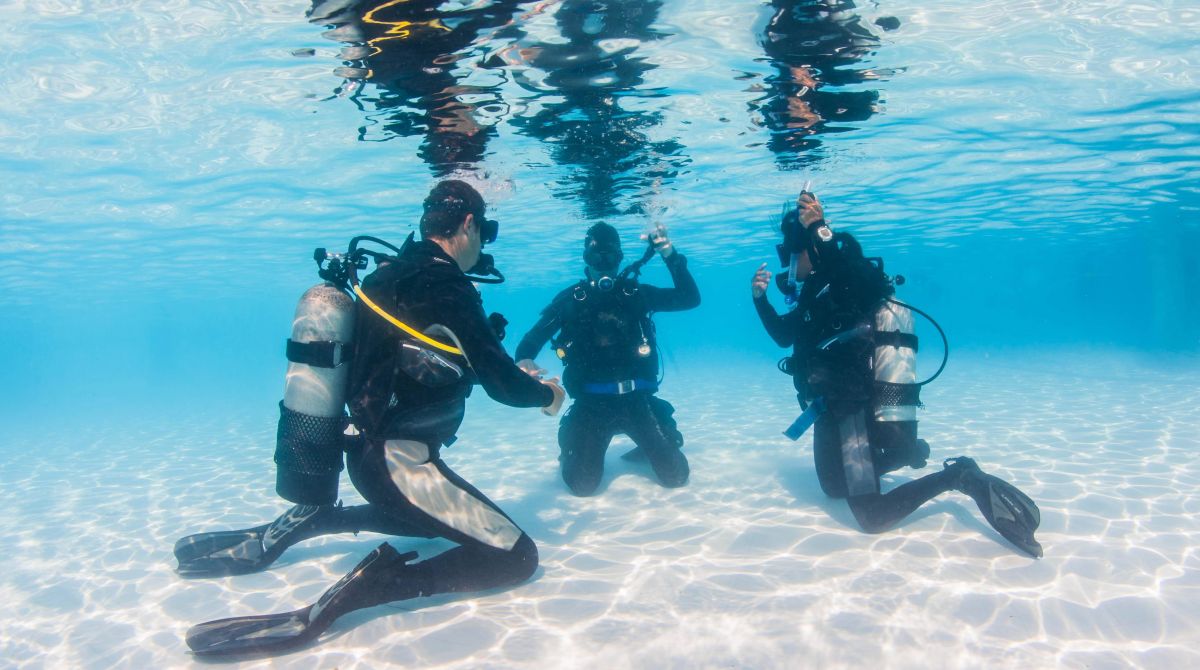
Malta & Gozo
Possibly Europe's premier dive destination, the Mediterranean islands of Malta & Gozo feature excellent dive centres and a range of shore diving sites well suited to those looking to learn to scuba dive. Spend your time on one island only, or extend your holiday to combine both. A great choice for those on a tighter budget.
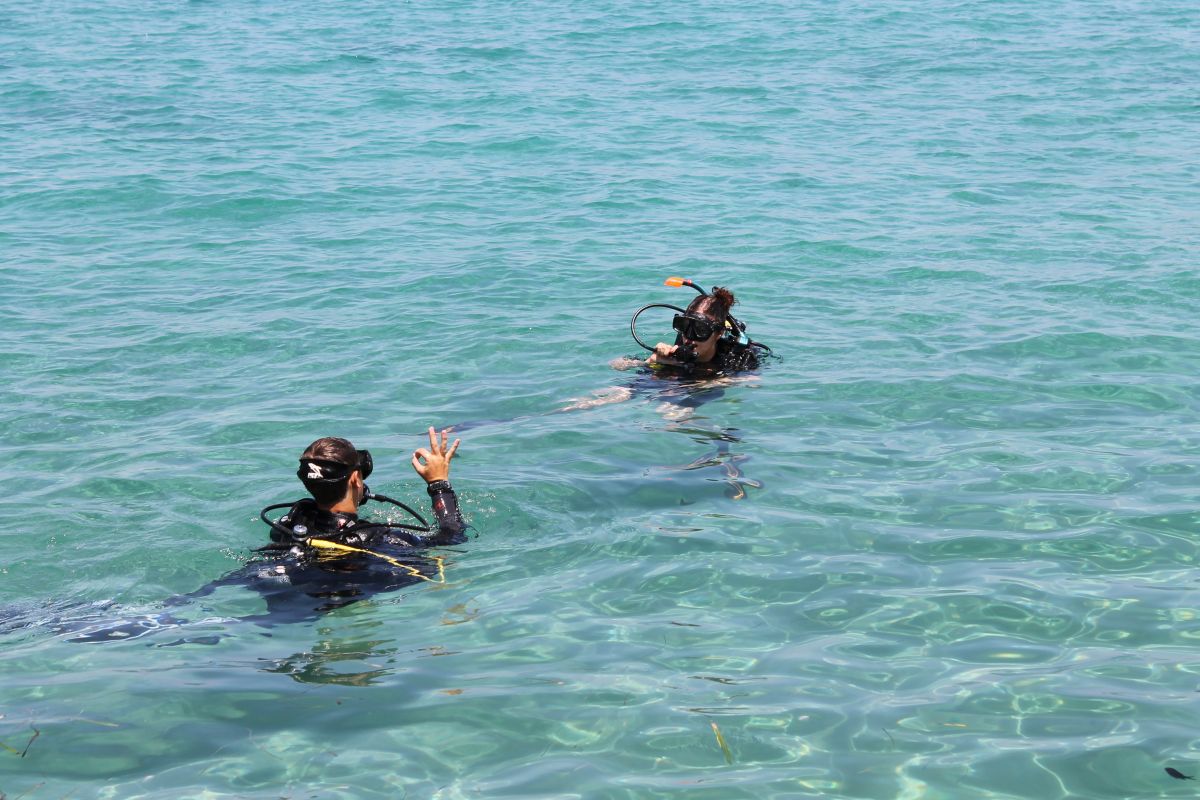
Soma Bay, Red Sea
Conveniently located less than an hour south of Hurghada and with a range of convenient and cost effective flight options, Soma Bay is another winning option. Boasting an award winning dive resort and excellent facilities, the house reef provides ideal conditions for training dives. As your get your confidence, a range of suitable dive sites are also available a short boat ride away.
Find out more about our 8-day holiday to Learn to Dive in Soma Bay.
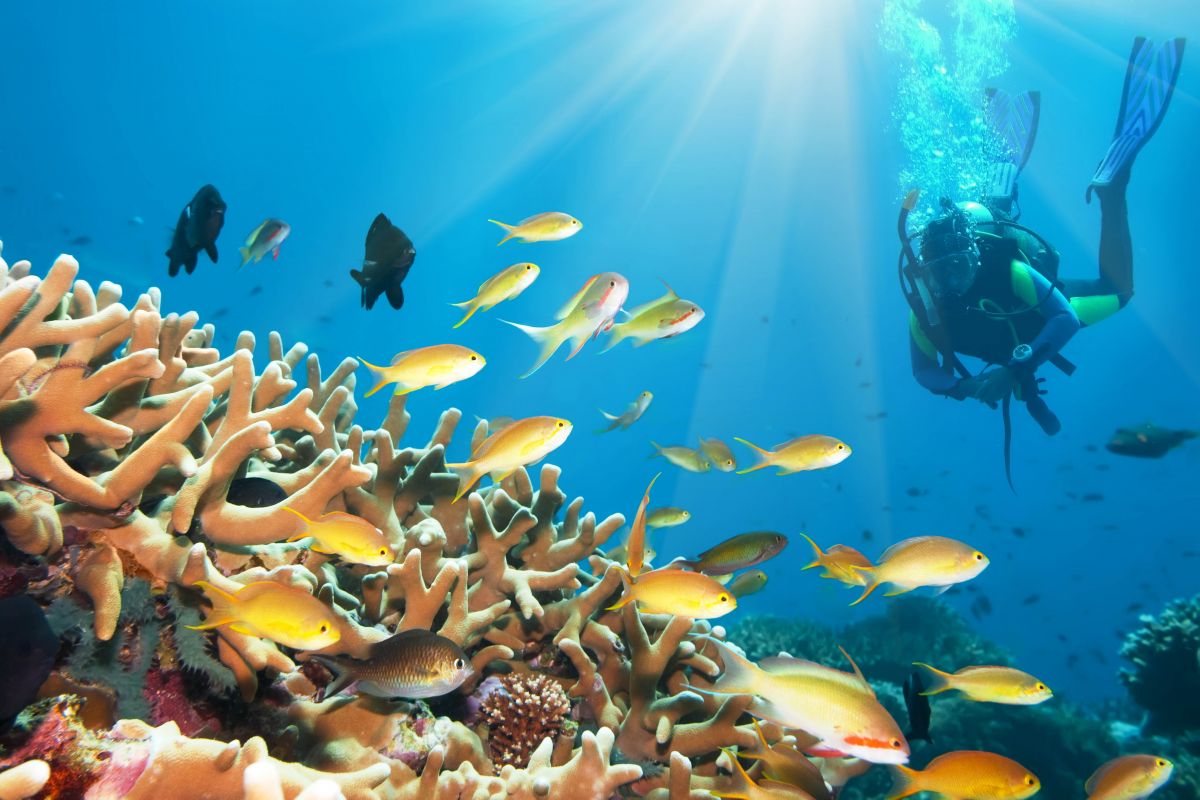
Lanzarote
Another excellent value option with many direct flights, Lanzarote arguably offers the best diving in the Canary Islands and is well suited to those looking to take their Open Water course. Based on a family friendly sandy beach, our award-winning partner dive centre is blessed with suitable dive sites starting right from the shore.
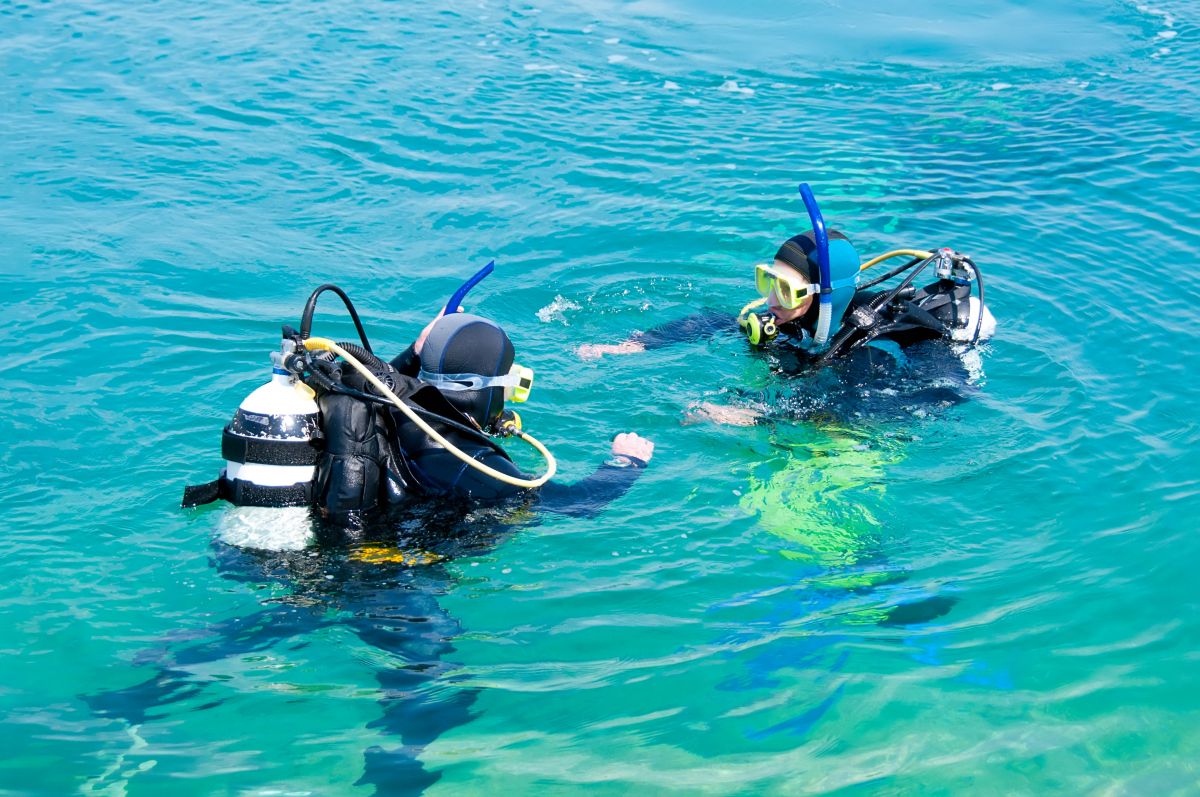
Grenada
Dubbed the Spice Island of the Caribbean, Grenada is blessed with year-round sunshine and ideal conditions for learning to dive. Oozing charm, Grenada has extremely professional dive centres and plenty of dive sites suitable for the beginner. More adventurous souls should stay longer to check out Grenada's lesser known twin Carriacou, known as the land of reefs.
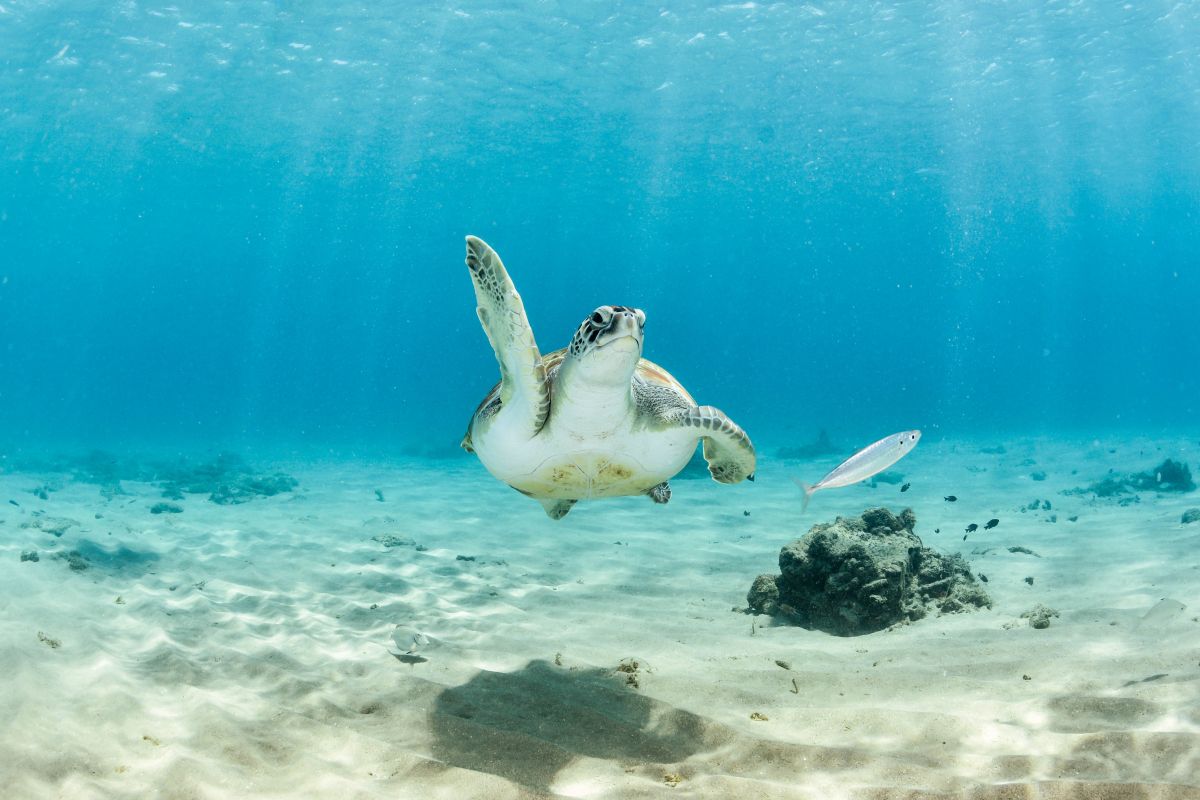
North & South Malé Atolls, Maldives
World-famous for its picture perfect atolls and azure blue waters, the Maldives has been a diving mecca for years. Learning to dive here is more expensive than other destinations, but the rewards are plentiful. Well established, professional dive centres offer very high levels of tuition, with excellent shore diving available from the best dive resorts. Providing diving opportunities on a par with many more remote spots in the Maldives, we recommend using the North or South Malé atolls as a base to learn, leaving some of the outer atolls to explore once you are qualified divers.

Jebel Sifah, Oman
Possibly less well known for its diving than some of the other destinations on this list, Oman never-the-less has much to shout about. Year-round sunshine and good flight options combine with excellent diving just a short distance from the country's capital, Muscat. European dive centres provide a high standard of tuition, with a good choice of dive sites available to suit those new to the sport.
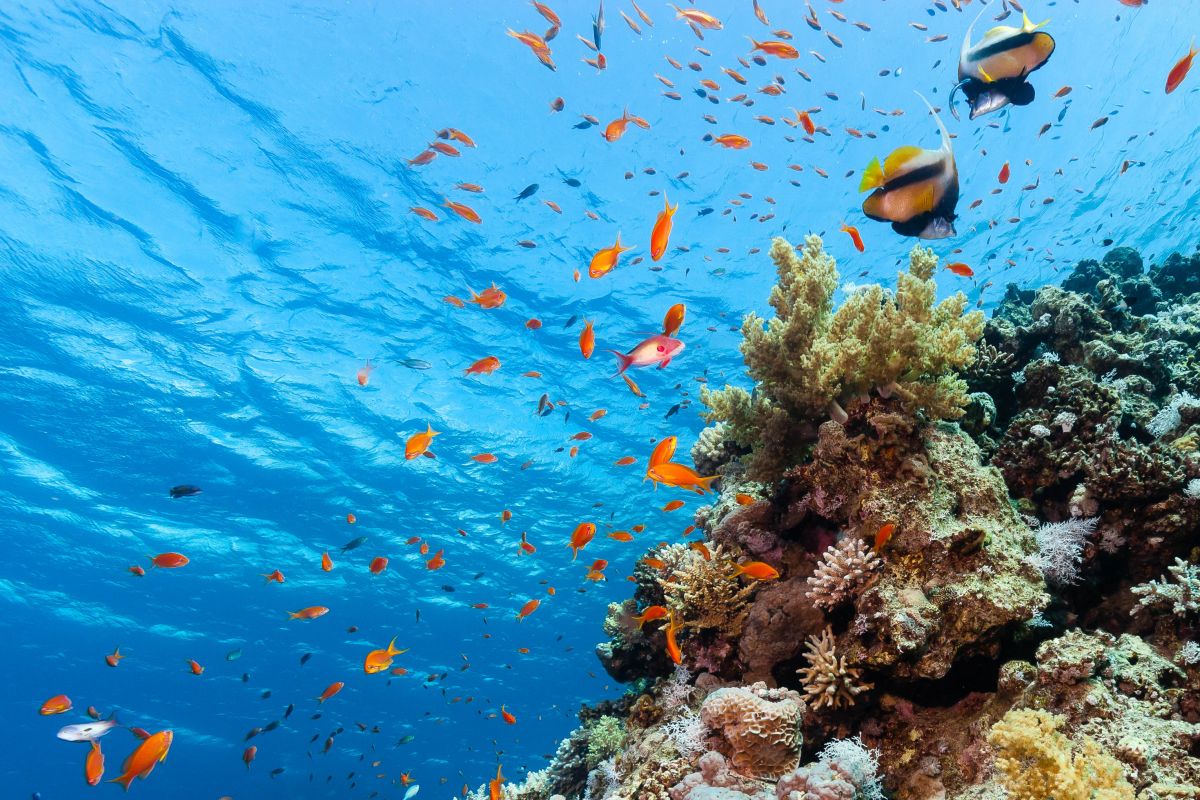
The Visayas Islands, Philippines
This group of islands in the central Philippines offers a range of great options, many of which can be combined to make a longer holiday. One could head to the vibrant reefs of Bohol to learn to dive with highly professional European-run dive centres, before exploring the delights of Moalboal, Malapascua or beyond. The choice is yours! Warm, tropical waters, wonderful marine life and a friendly welcome add to the appeal for new divers.
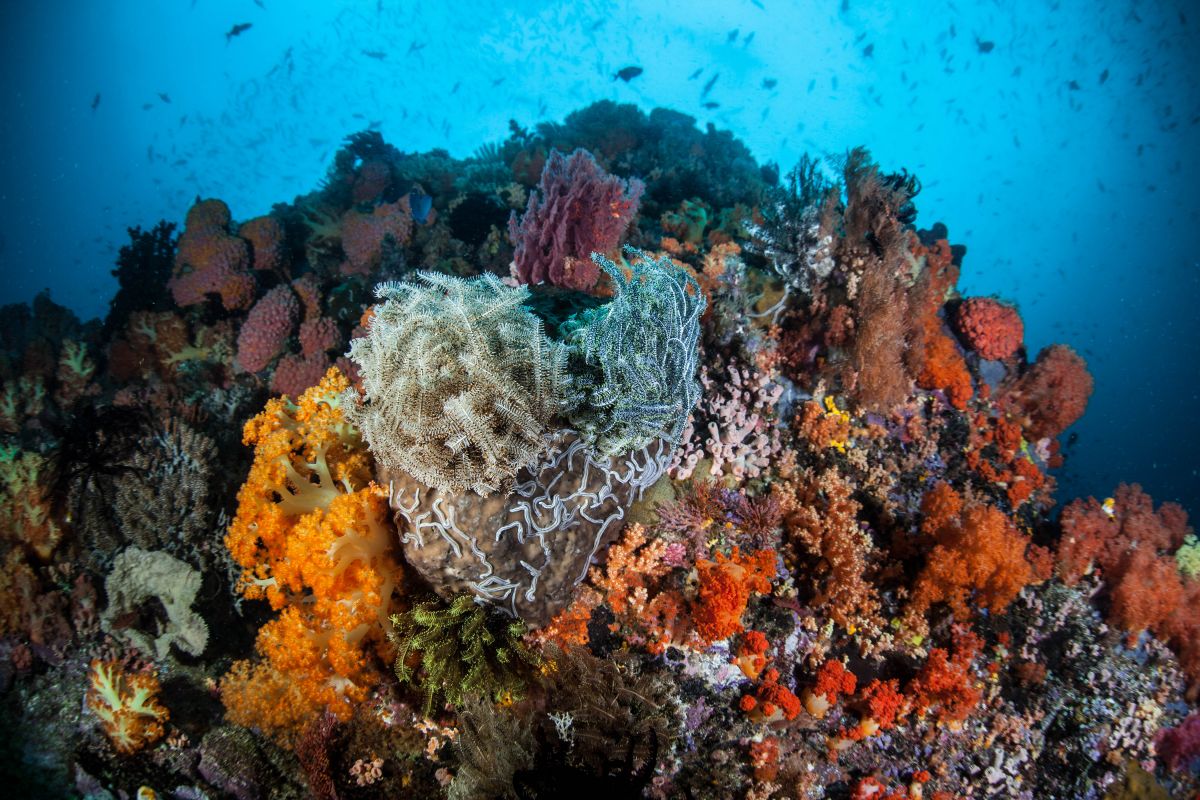
Yucatan Peninsula, Mexico
With outstanding Caribbean beaches and fascinating archaeological sites, Mexico's Yucatan Peninsula has plenty to enjoy and inspire topside, but that's not where the appeal ends. The coastline around Puerto Aventuras and the island of Cozumel offer wonderful reefs and great conditions for beginners. You'll be looked after every step of the way by an experienced, professional dive team to get your diving odyssey off to a flying start.
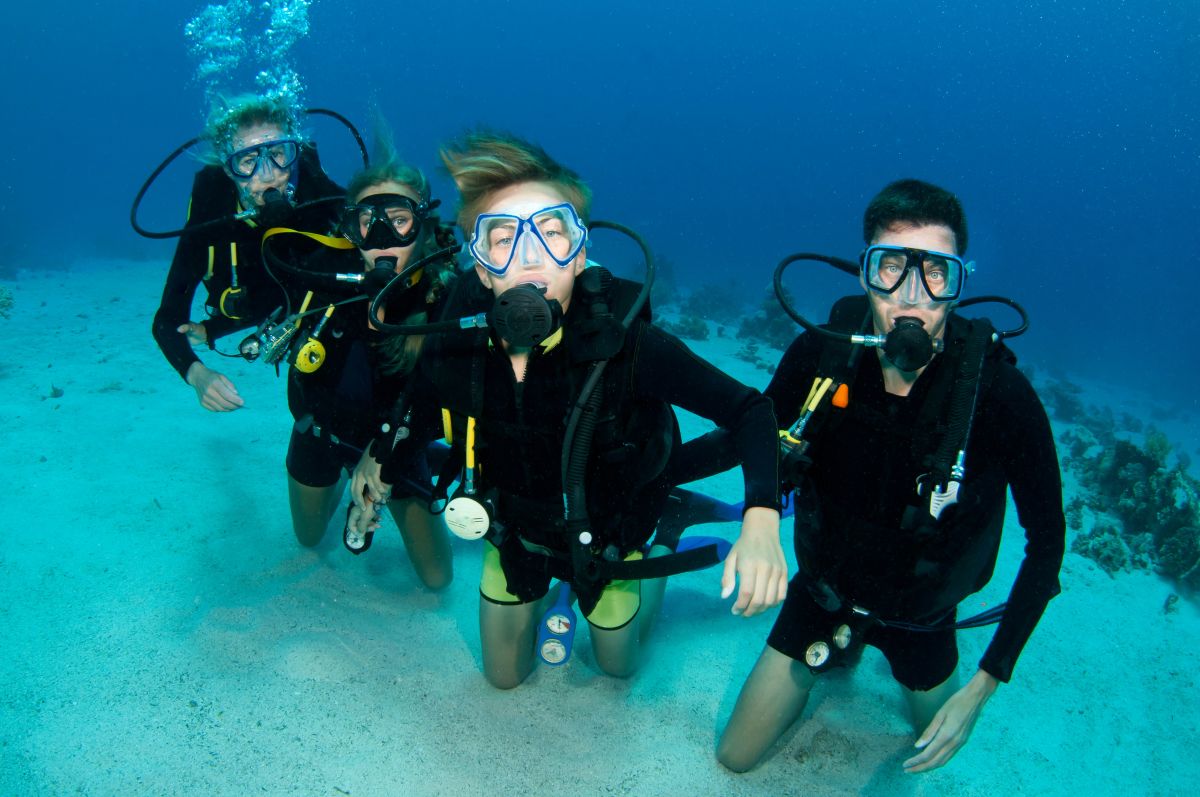
Bunaken National Marine Park, Indonesia
Located just off the coast from Manado and easily reached from the UK and Europe, Bunaken National Marine Park offers everything a beginner diver could possibly wish for. This region boasts a wonderful climate, while the warm tropical waters are famed for their colourful coral corals and marine life. One of Indonesia's most famous diving areas, Bunaken has a range of outstanding dive resorts offering professional instruction and excellent facilities. Oh, and don’t forget to look out for turtles!
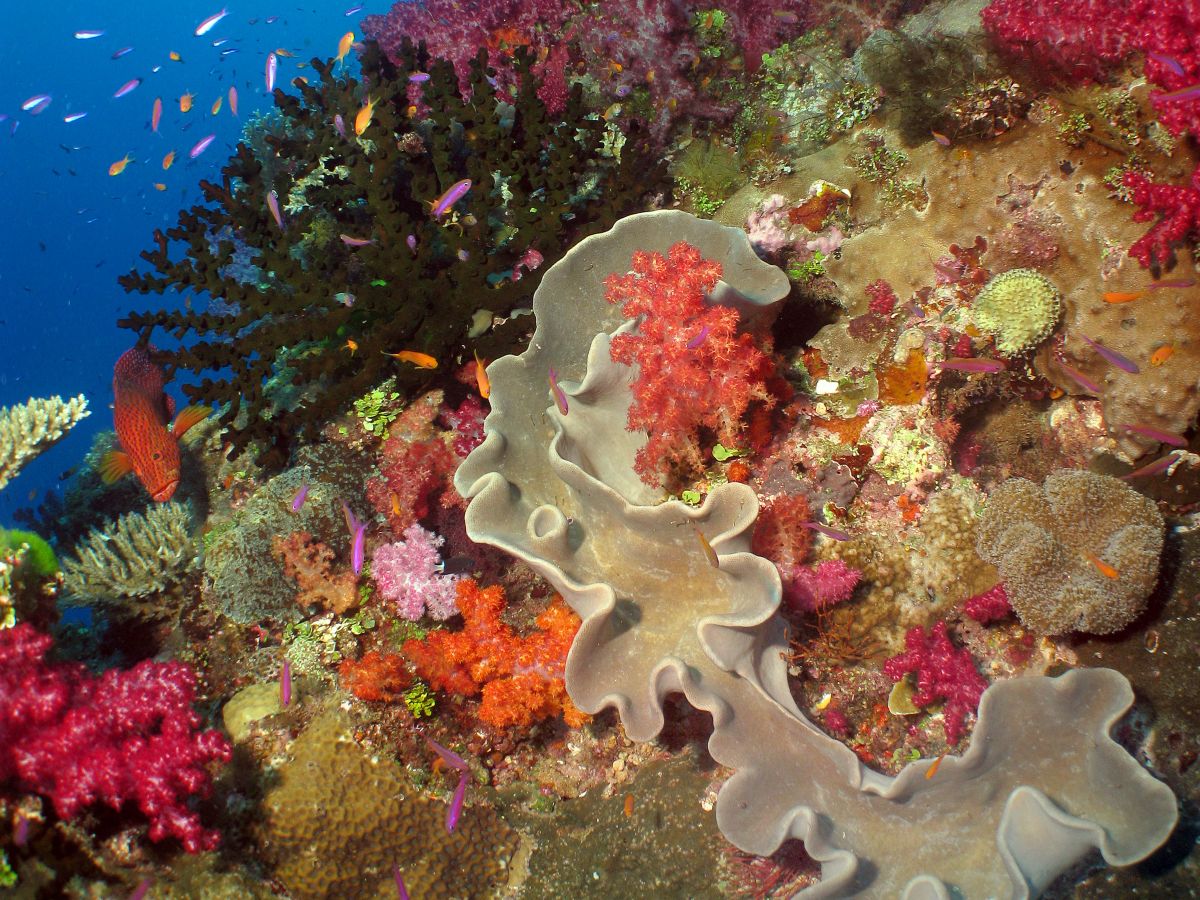
If you are considering learning to dive, get in touch with our friendly team of dive professionals today on 01353 659999. We'll be happy to answer any questions you may have and advise on the best options for you.
With over 30 years' experience, we tailor our holidays to suit your precise needs. Our small, dedicated team offer a personal and attentive service to ensure every detail of your holiday is covered.
Find a trip
- Resort
- Liveaboard
Learn to Dive & Family Weeks

28 May 2025
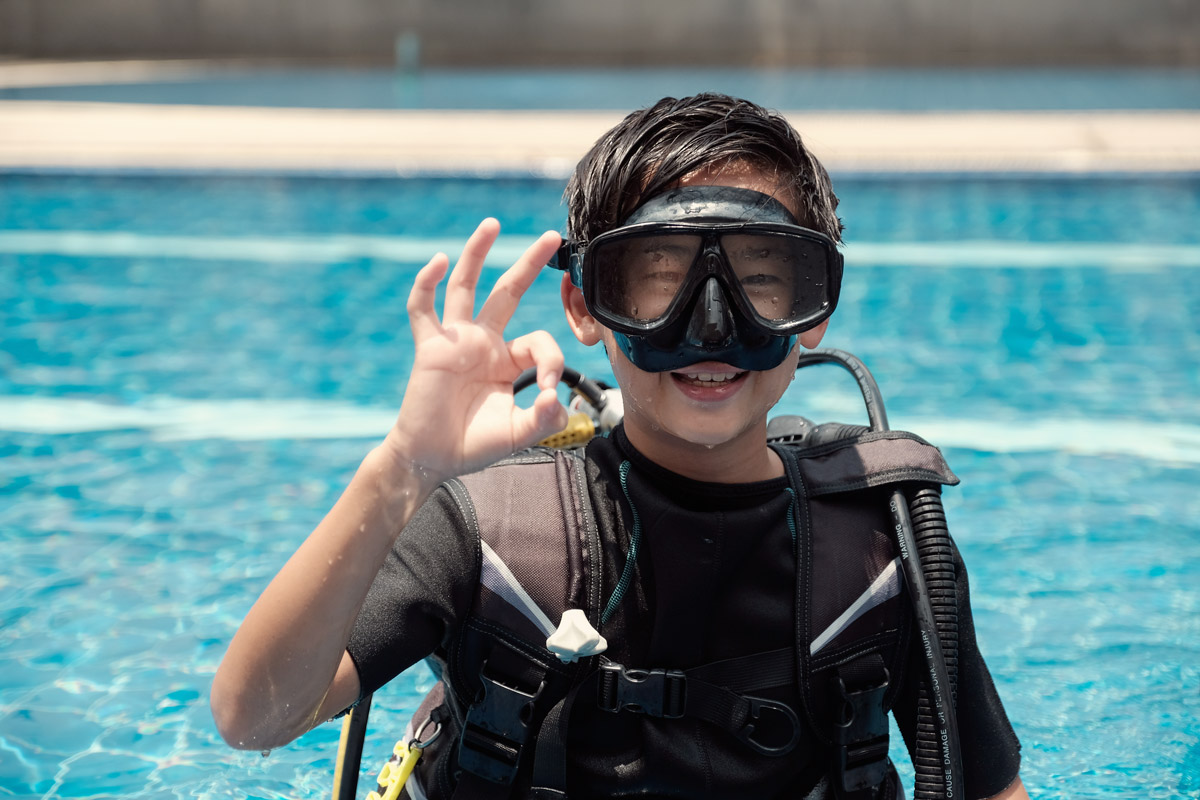
How does it work?
Family or Learn to Dive weeks allow divers and non-divers to spend time together while focusing on the activities they enjoy and developing diving skills.
Many itineraries feature affordable diving certification training, so your travel companions can learn to dive and prepare to join you on diving adventures. As these liveaboard departures are designed to be inclusive, they offer a range of snorkelling and fun dive activities for those who don’t wish to certify.
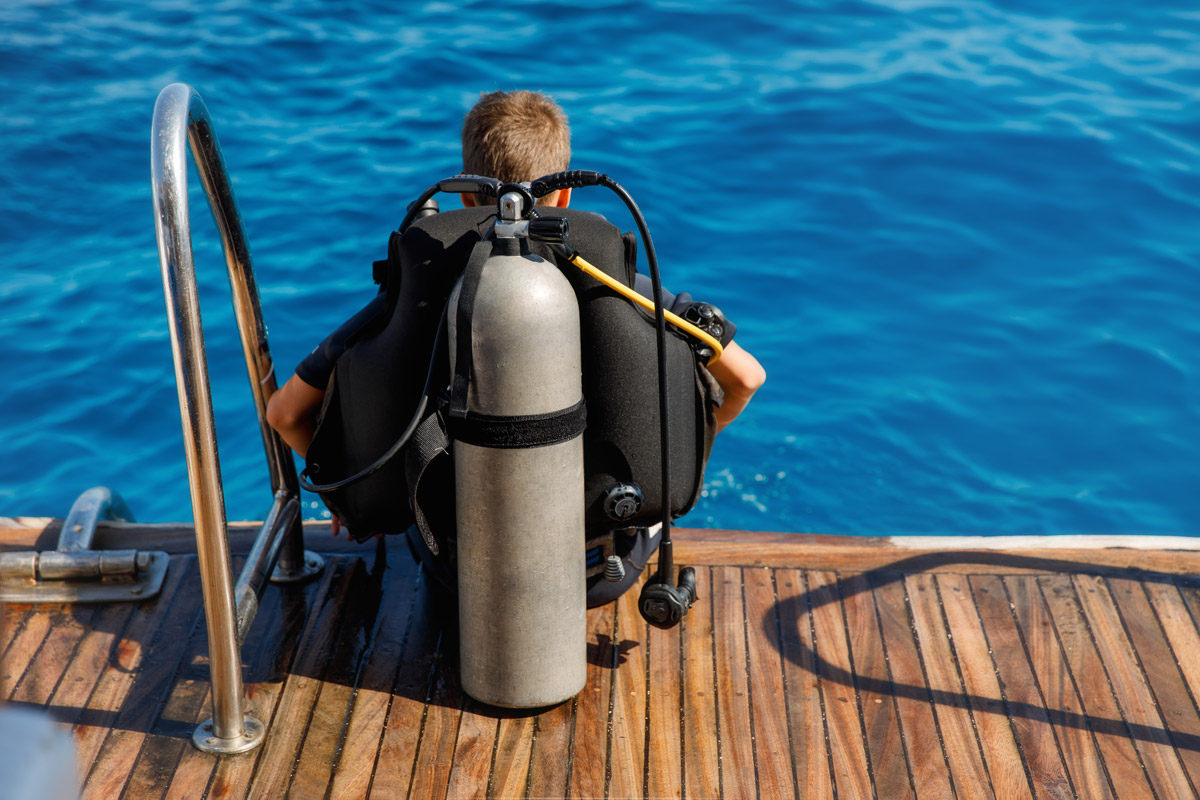
These holidays are an excellent way for beginner divers to try out a Maldivian liveaboard experience or develop their diving skills by taking courses. Socialising with others who share similar interests is just a bonus.
If you prefer to be resort-based, you can opt for Family Weeks at one of the spectacular Atlantis Resorts in the Philippines and take advantage of their excellent family deals.
Summer travel options in 2025
The Maldives
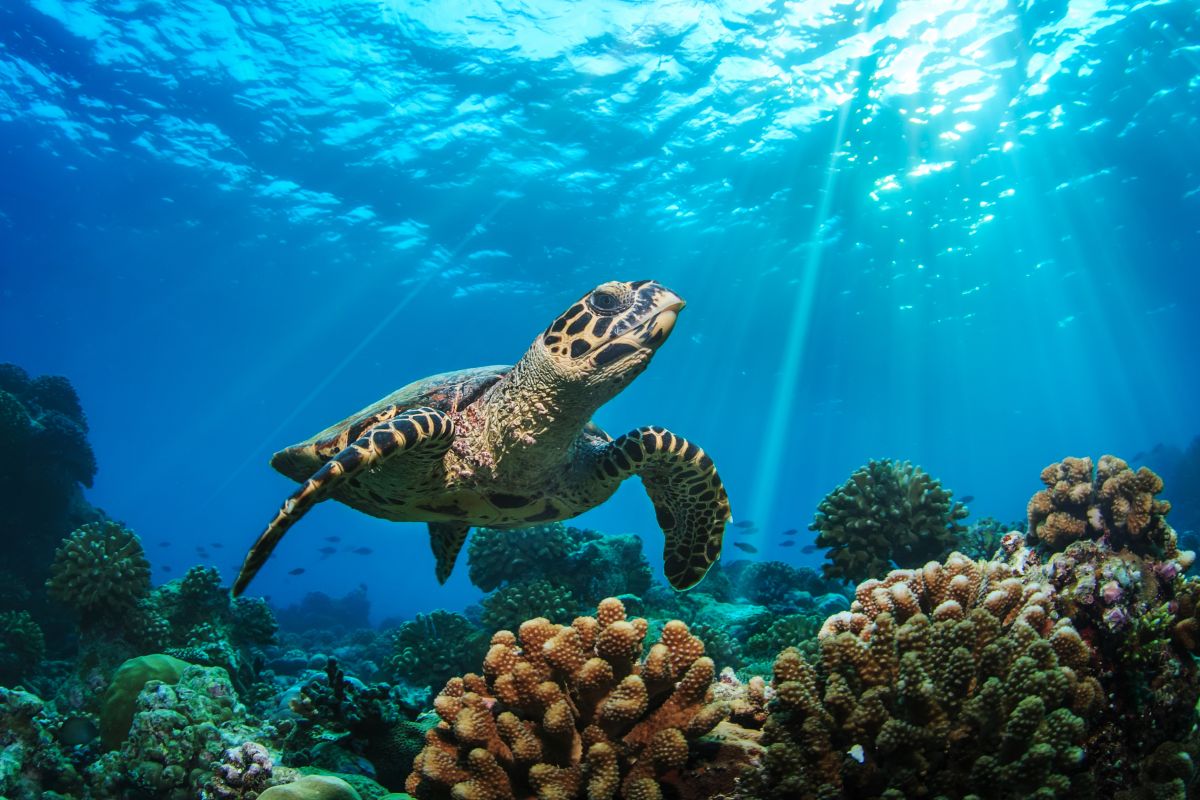
MV Keana
Family Week: Perfect for snorkellers, beginners and children
Spend 10 nights in a Maldivian paradise exploring warm turquoise waters for exciting marine life and beautiful corals with a highly experienced diving team at your disposal. Beginning at Hulhumalé Lagoon in the North Malé Atoll, Keana takes you on an ocean adventure around the remote atolls during which you may enjoy encounters with manta rays, sharks, turtles, dolphins and friendly whale sharks. The vessel accommodates up to 18 guests in comfortable upper-deck cabins and features an outdoor bar and dining area, along with a lovely sundeck with spectacular views of the sparkling ocean and the pristine white sand beaches of the tropical islands. Both divers and snorkellers will have opportunities to discover incredible reefs teeming with colourful fish.
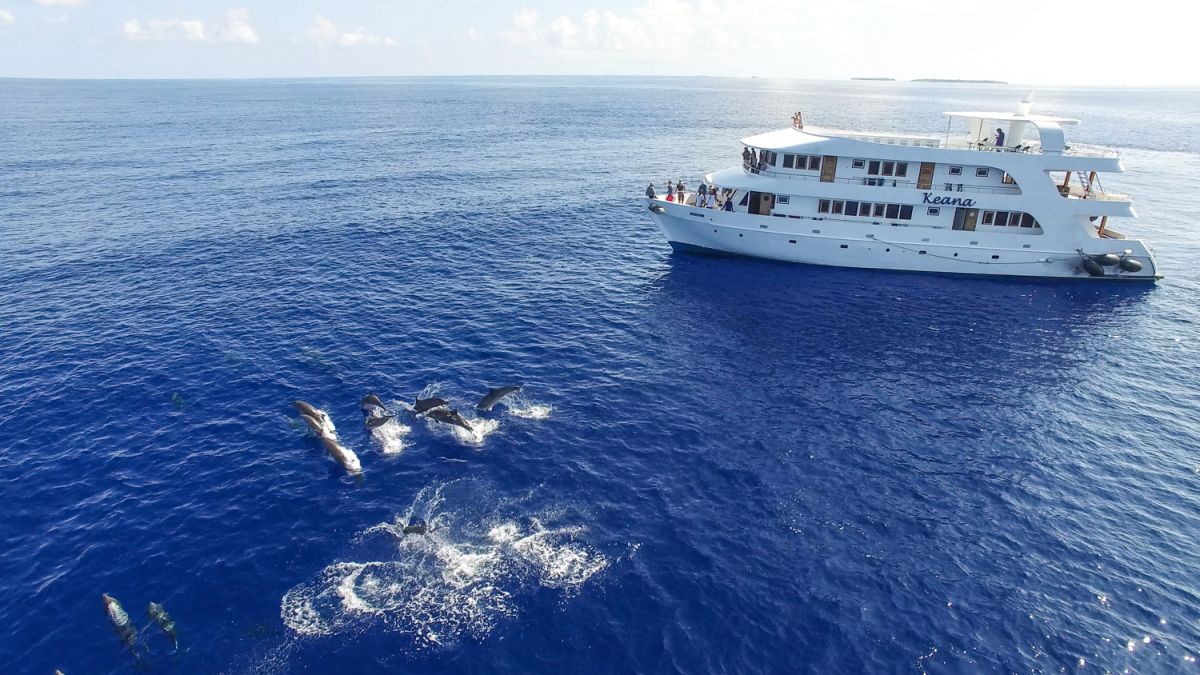
Departs 24 Jul 2025, 10 nights from £2330 (boat only)
Seascape
Family Tour: Child and eco-friendly adventures
Seascape is a trailblazer for responsible diving practices. From its award-winning reef protection measures to its sustainability focus onboard, this is the perfect choice for eco-conscious travellers. The luxurious 41-metre-long vessel can host up to 28 guests in spacious and well-appointed cabins, and it's possible to dive up to three times per day. They operate programmes aimed at children and family groups, focusing on beginner-friendly sites that are also excellent for snorkelling. More experienced divers will be interested to know that Seascape is renowned for thrilling dive safaris.
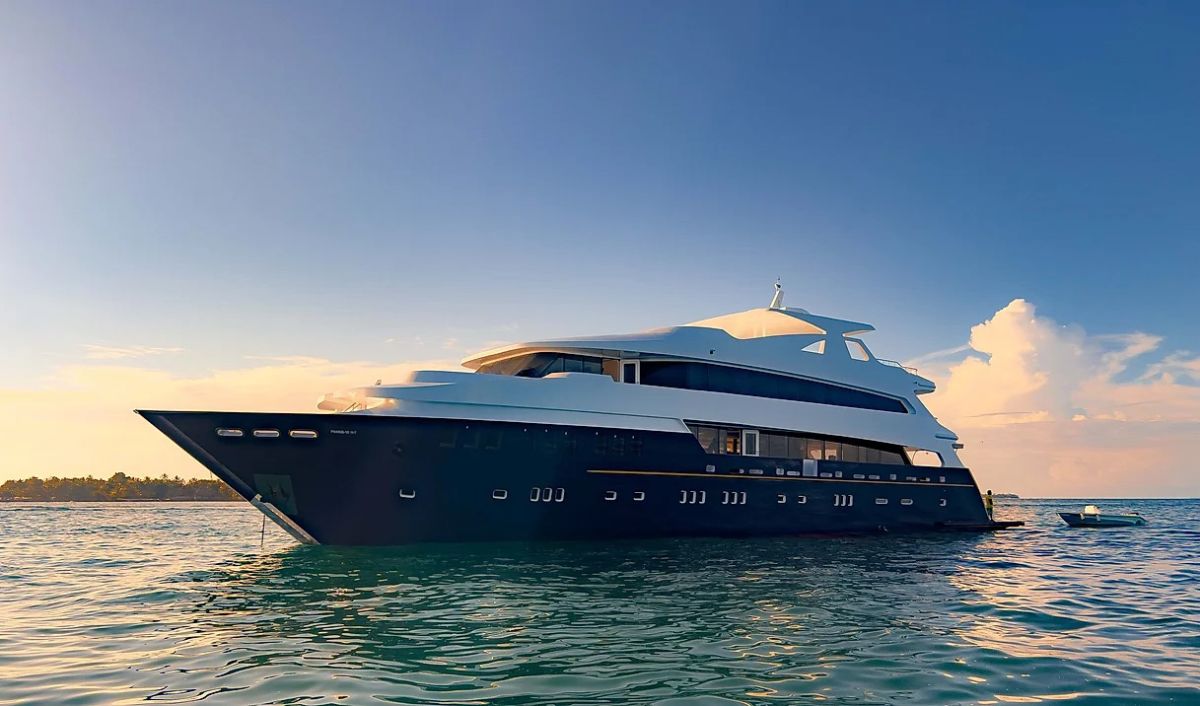
Departs 27 Jul & 3 Aug 2025, 7 nights from £1580 (boat only) - SAVE 30% until 30th June
AMBA
Liveaboard Diving Beginner’s Tour: Family fun between Male and Vaavu Atoll
Take advantage of a variety of affordable courses and family rates on this week-long Beginners Tour itinerary. Having completed diving theory in advance, learners can train under perfect conditions and complete up to four courses including their Open Water certification. Once certified, divers can explore Vaavu Atoll which has the thrilling possibility of shark encounters, along with other highlights. More experienced divers can hop aboard the dhoni (a traditional boat) to access some of the area’s more challenging dive sites, while newer divers can go on their first dive safari with expert supervision from an experienced dive team.
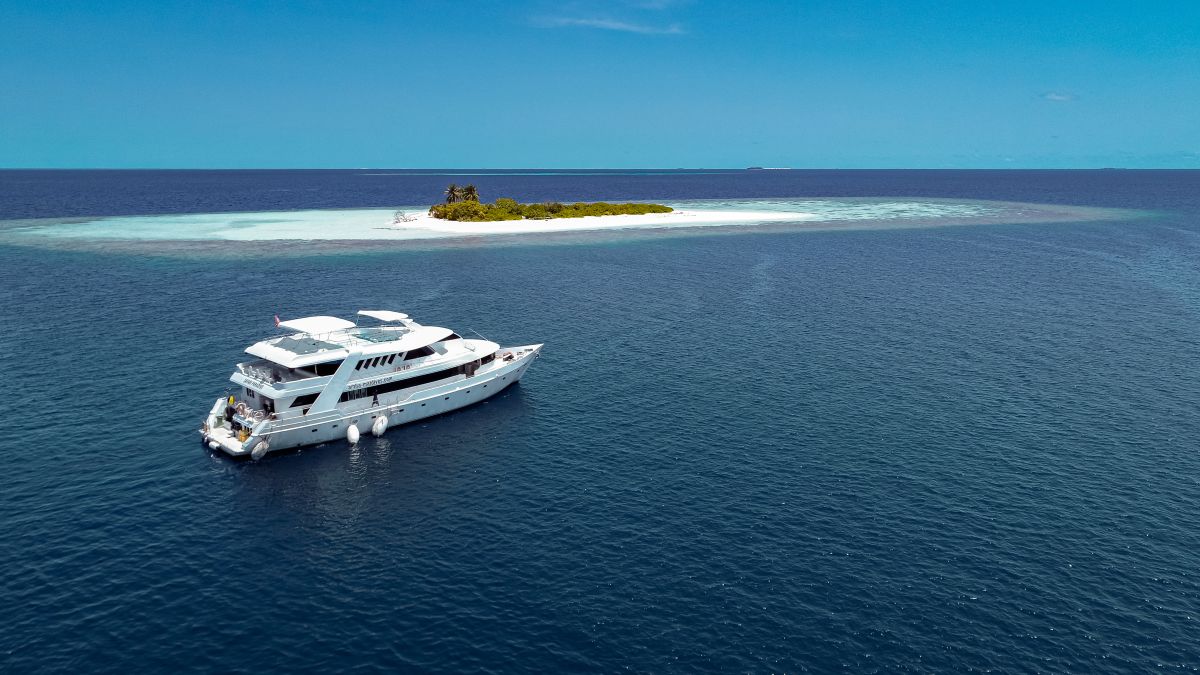
Contact us for departures.
The Philippines
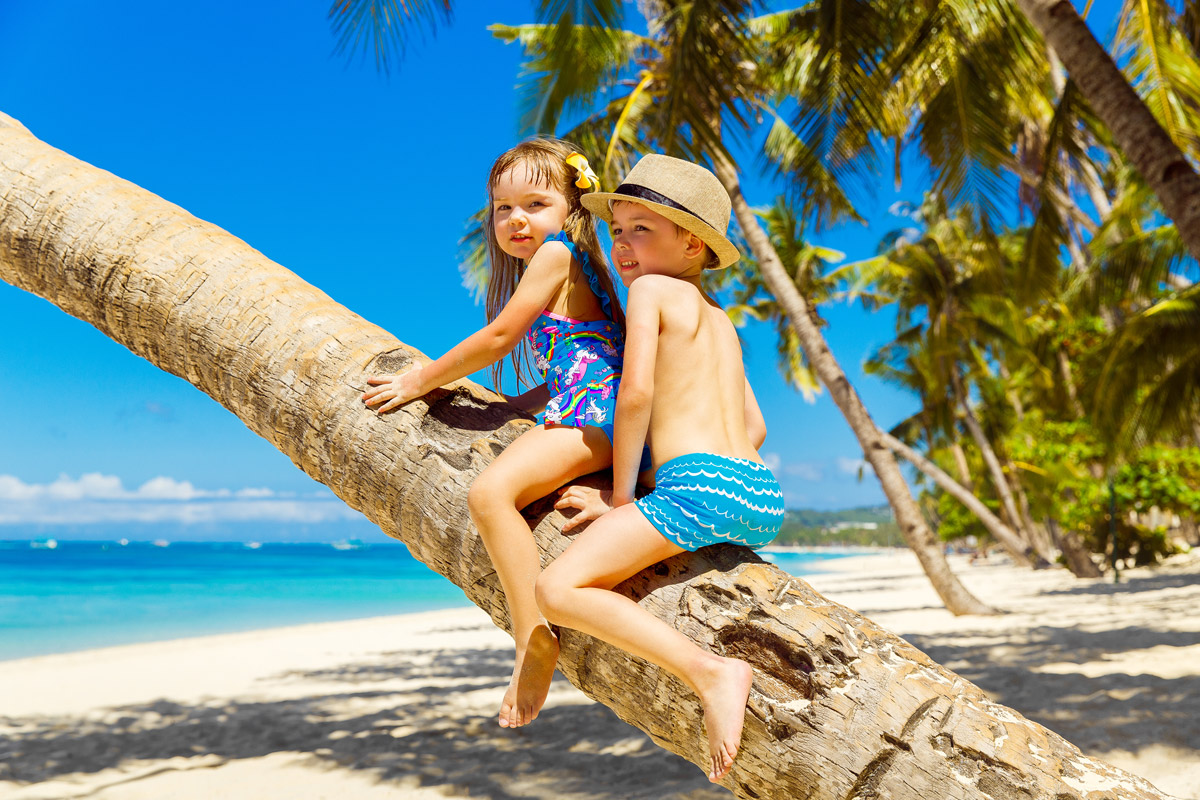
Atlantis Puerto Galera & Atlantis Dumaguete: Family Weeks
Atlantis Dive Resorts are offering a range of exceptional deals for family groups this summer. The Family Week special offers include free stays, free meals, and free diving places for kids (one free child per paying adult), plus further discounts for young adults aged 18-30 when travelling with parents. Non-divers can also enjoy a ‘Try Scuba’ session for free!
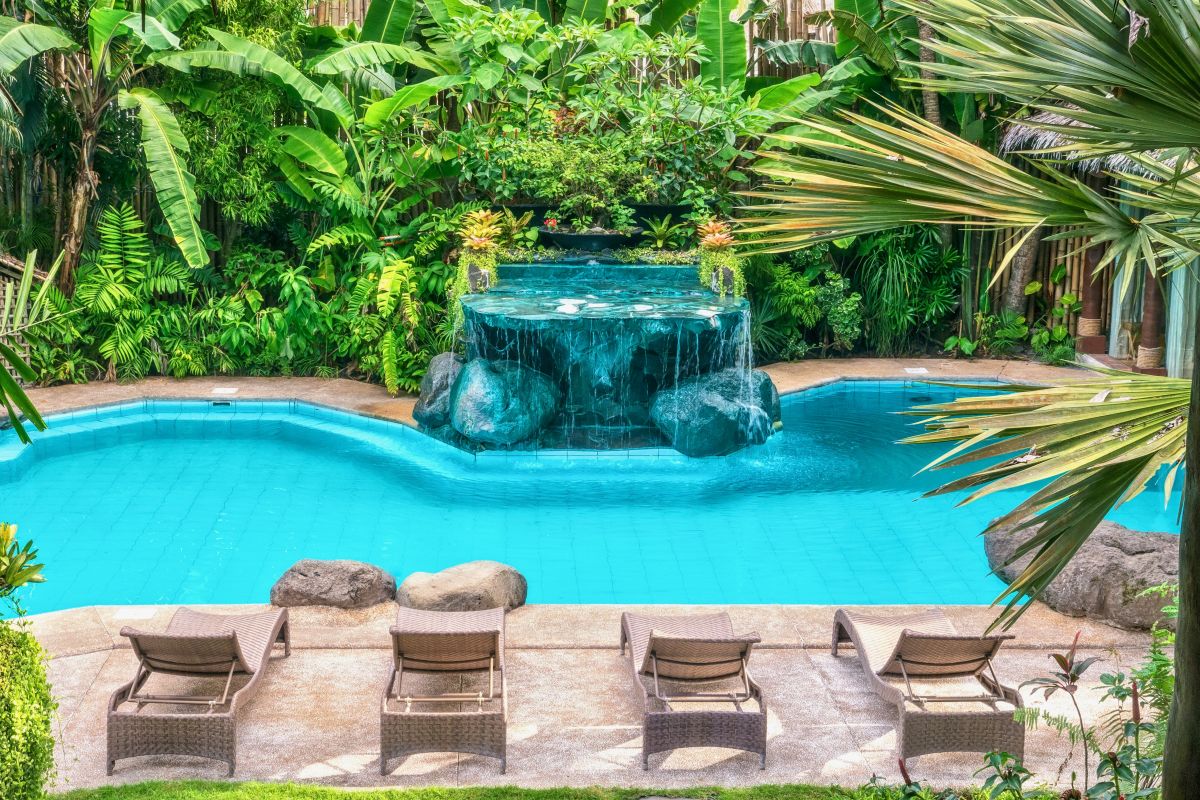
You and your family can explore the diverse dive sites in the famed Coral Triangle, including UNESCO World Heritage Sites, wrecks, black volcanic sands and critter hotspots. Puerto Galera is a beautiful Man and Biosphere Reserve of UNESCO with accessible diving, diverse coral reefs and exotic marine life. Dumaguete, in the Visayas region, hosts a diverse range of macro species, including ghost pipefish, flamboyant cuttlefish, and various seahorses and octopuses. It also grants easy access to the Dauin Marine Sanctuaries and Apo Island - one of the finest diving destinations in the Philippines.
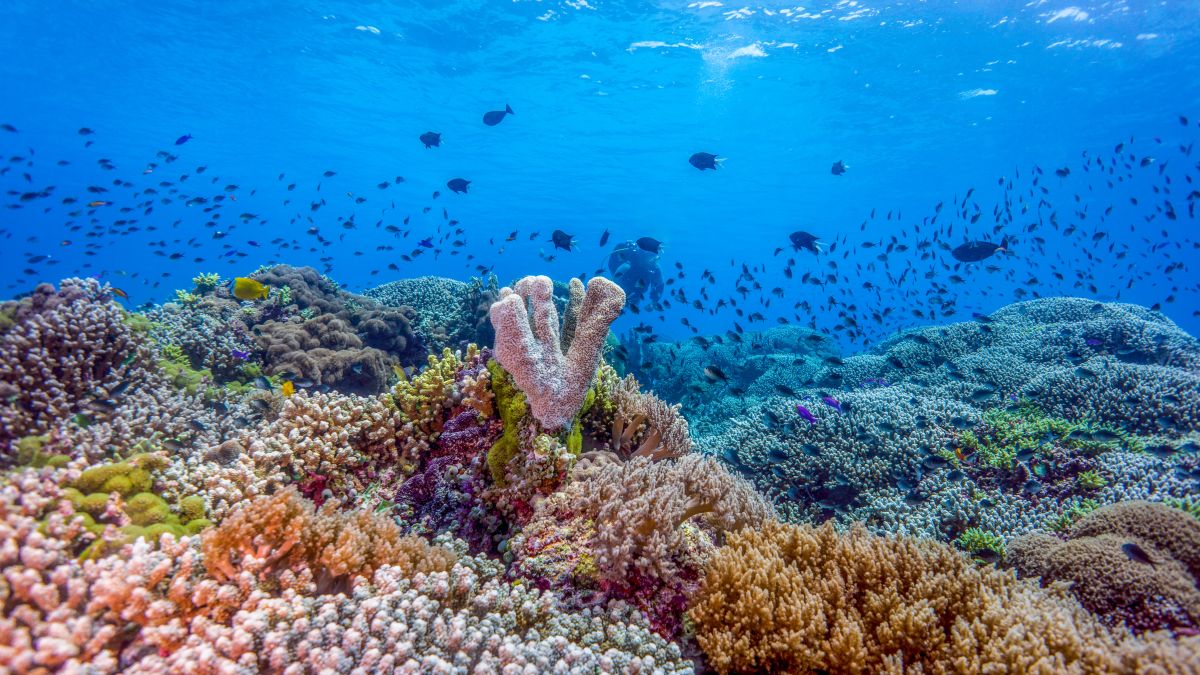
Both of the resorts are situated in stunning beach-front locations. Atlantis Puerto Galera is famed for its unique ‘Flintstones’ resort design, while Atlantis Dumaguete has tropical landscaped gardens, thatched-roof bungalows and a stunning waterfront restaurant.
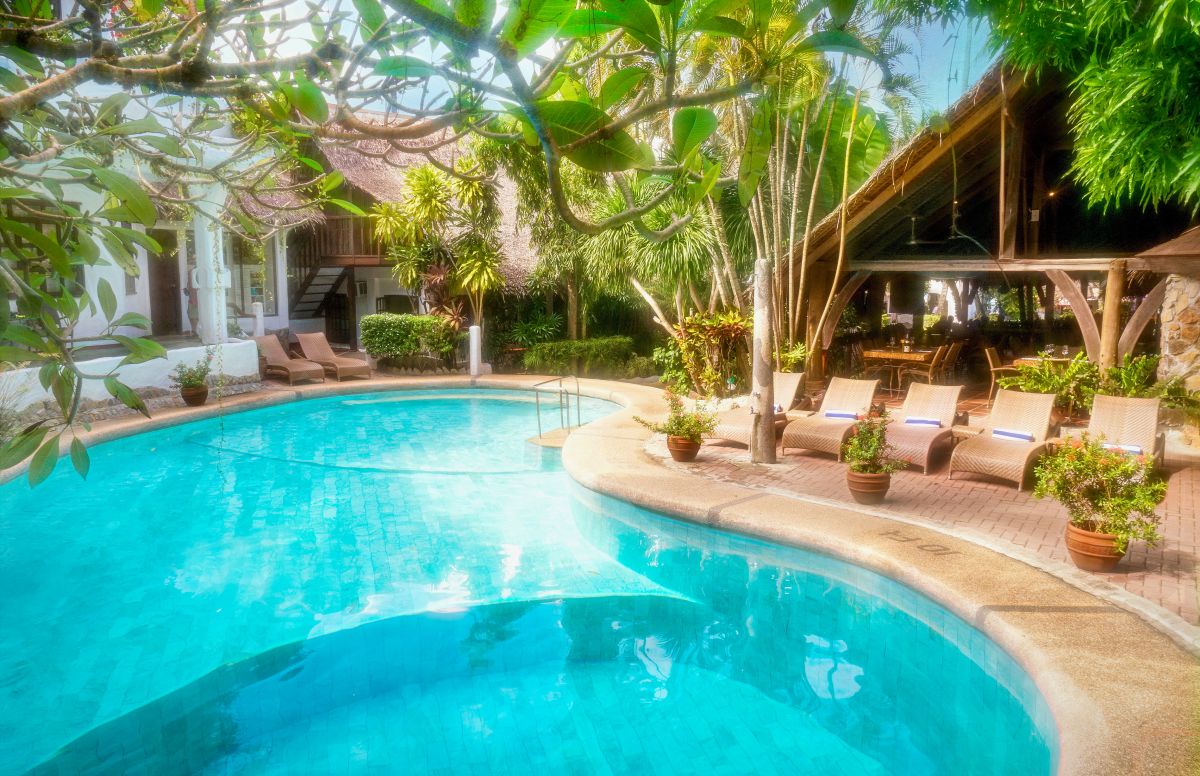
Atlantis Puerto Galera: 7 nights from £2895 (flight inclusive)
Atlantis Dumaguete: 7 nights from £2995 (flight inclusive)
Family Week deals at the Atlantis Dive Resorts are available on selected dates in July, August & September 2025.
Please contact our dive team for more details about Atlantis resorts, liveaboard adventures in the Maldives or the full range of Family Weeks available.
Find a trip
- Resort
- Liveaboard
Top 10 Summer Diving Destinations
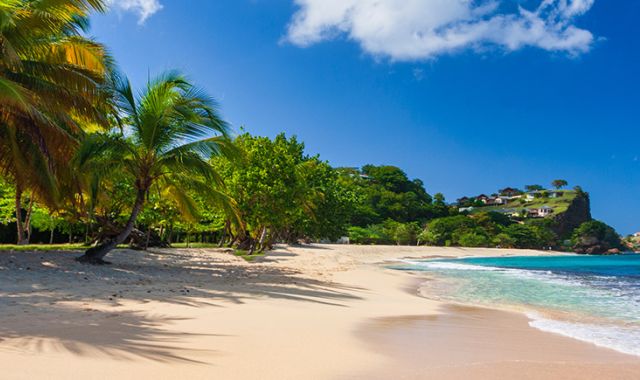
21 Mar 2025
1. Bunaken, Indonesia
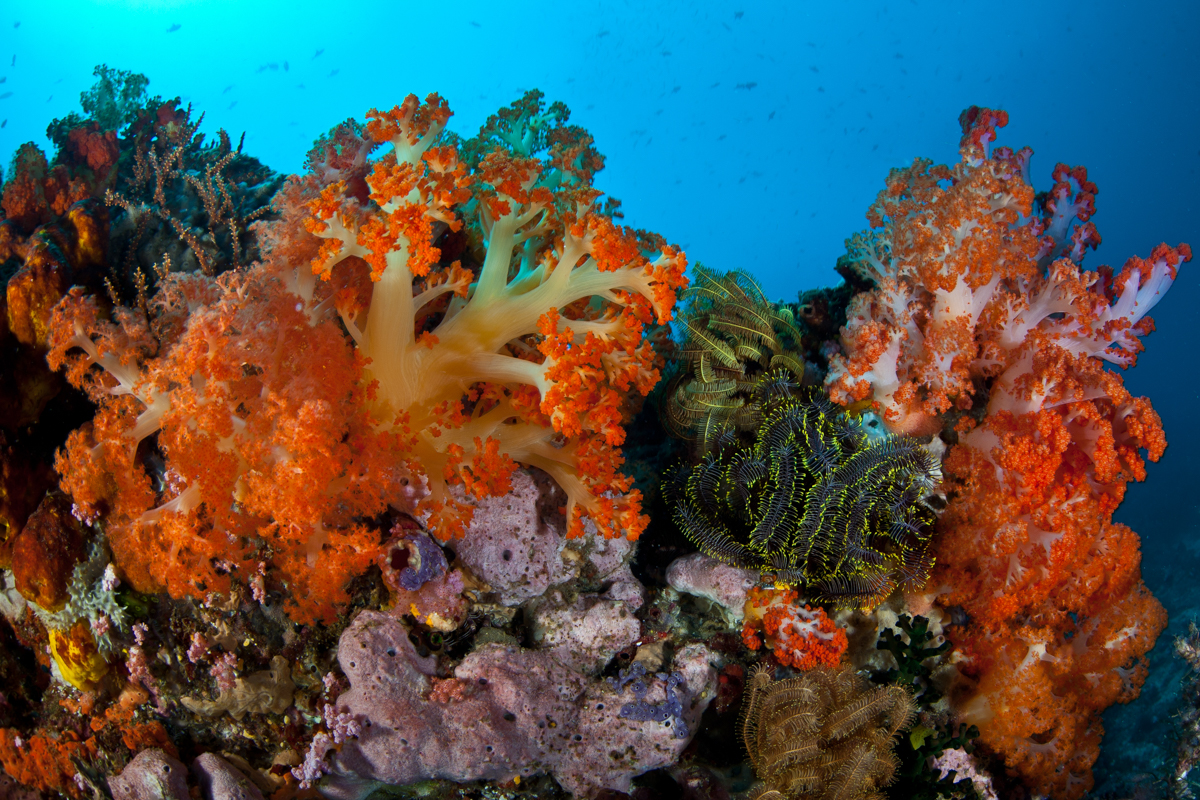
The crystal-clear waters and staggering marine biodiversity of Bunaken Marine Park make this a popular diving destination. In summer, the seas are calm and you can take in the full majesty of the vibrant coral walls which are teeming with colourful fish. The waters are also home to barracuda, Napoleon wrasse and green turtles.
2. Bali, Indonesia
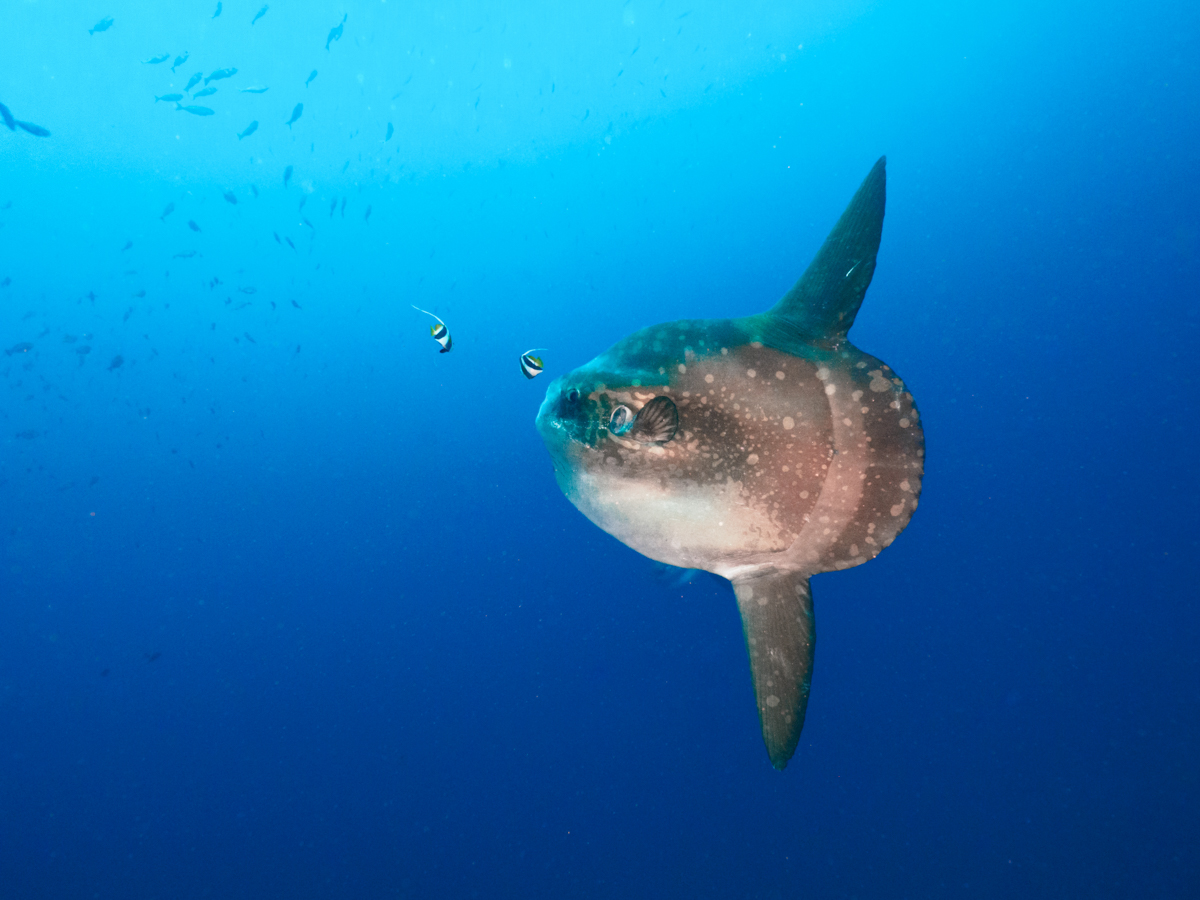
The chance to dive with seasonal Mola Mola, also known as ocean sunfish is an excellent reason to visit Bali in the summer. These gigantic and unusual-looking fish are most commonly sighted in August and September around Crystal Bay (though you might get lucky in July or October). The summer months are also a great time to spot manta rays and other underwater highlights such as turtles, shipwrecks and fascinating macro species.
3. Komodo, Indonesia
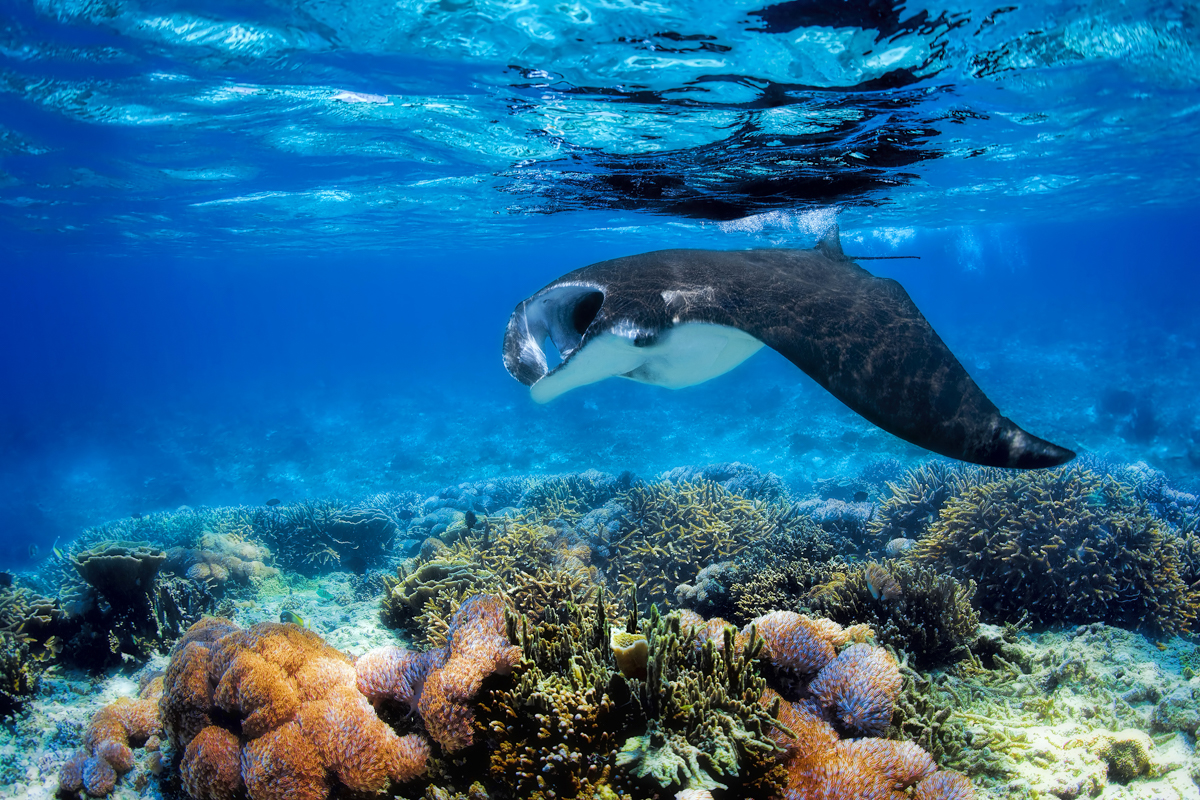
A bucket list destination for most divers, Komodo is particularly special in the dry season, April to November, when divers can enjoy lovely weather and excellent water visibility which sometimes exceeds 30 metres. There’s a dazzling array of marine species to discover around the UNESCO World Heritage Site, including manta rays, sharks and an abundance of critters. Underwater, you’ll find steep walls and coral-encrusted canyons, while topside you can search for Komodo dragons!
4. Azores
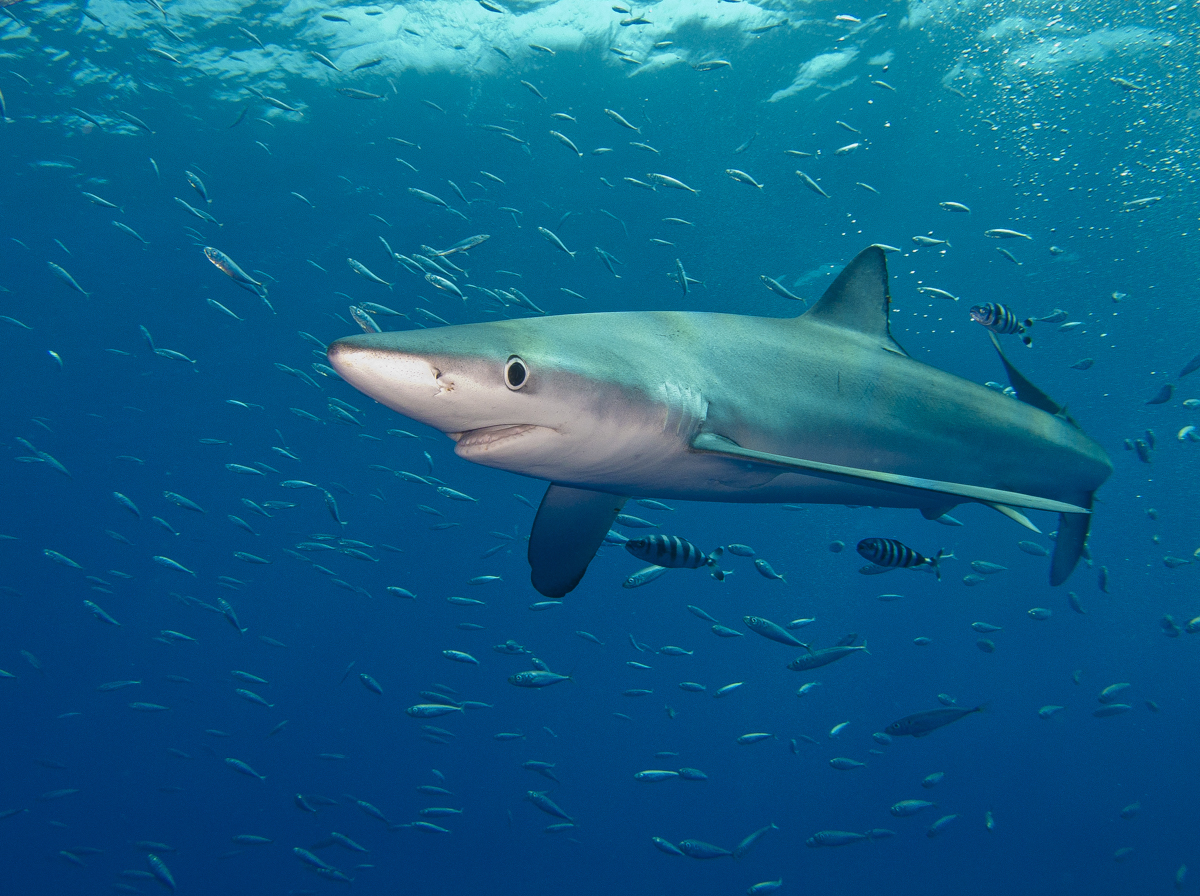
Diving in the azure waters around the breathtaking Azores archipelago is only possible for a few months each year. We recommend diving there between June and October when average water temperatures are in the low 20s, visibility peaks and mobula rays gather around seamounts. The rewards are endless, from exploring the volcanic islands, arches and caves to encounters with some of the world’s largest pelagics and marine mammals. Playful dolphins, grouper, mobula rays and whale sharks (August) are all frequently seen here, with sightings of blue and mako shark possible. Whales also gather here, and you may even hear their song underwater if you're very lucky!
5. Bonaire
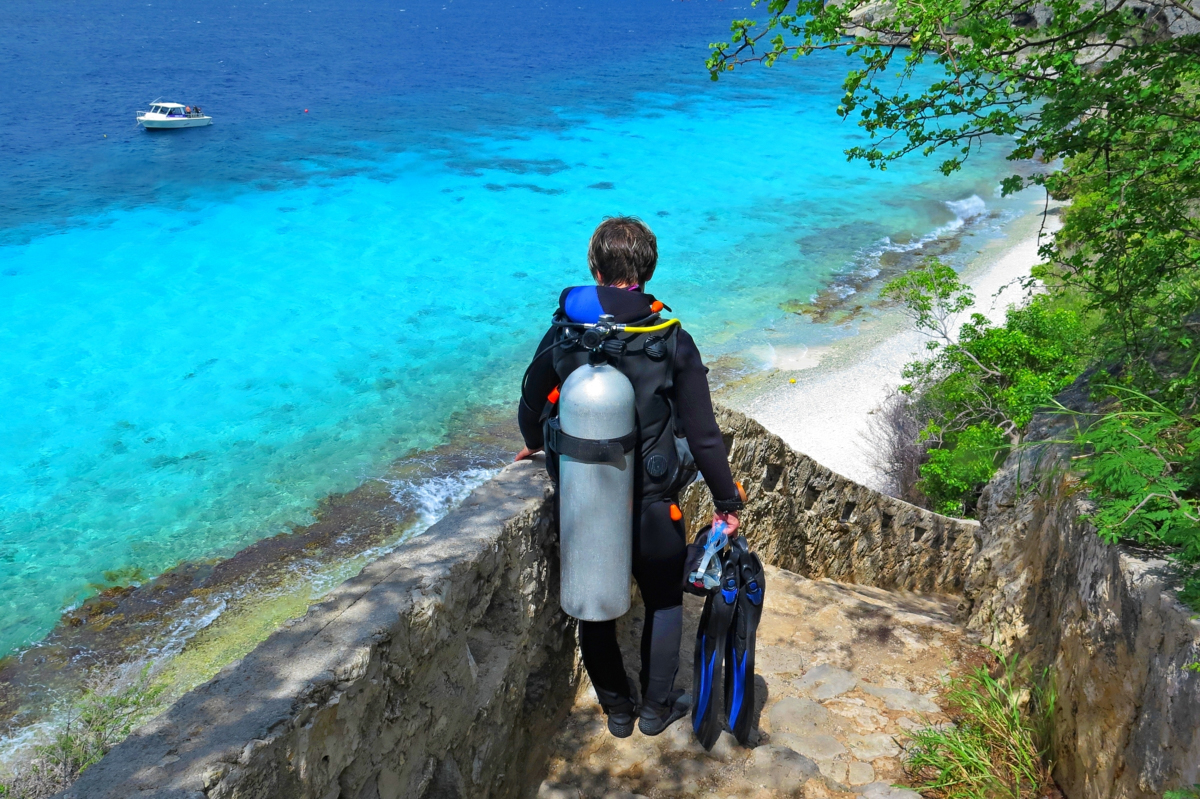
Known as one of the finest Caribbean diving destinations, Bonaire is widely renowned for offering exceptional shore diving and snorkelling experiences. The shallow reefs host hundreds of species of colourful fish and critters amid amazing coral gardens. The marine life is spectacular whenever you visit, but during the summer, the weather and diving conditions are superb and there are fewer tourists. Bonaire is also located outside of the Caribbean’s hurricane zone.
6. Lanzarote
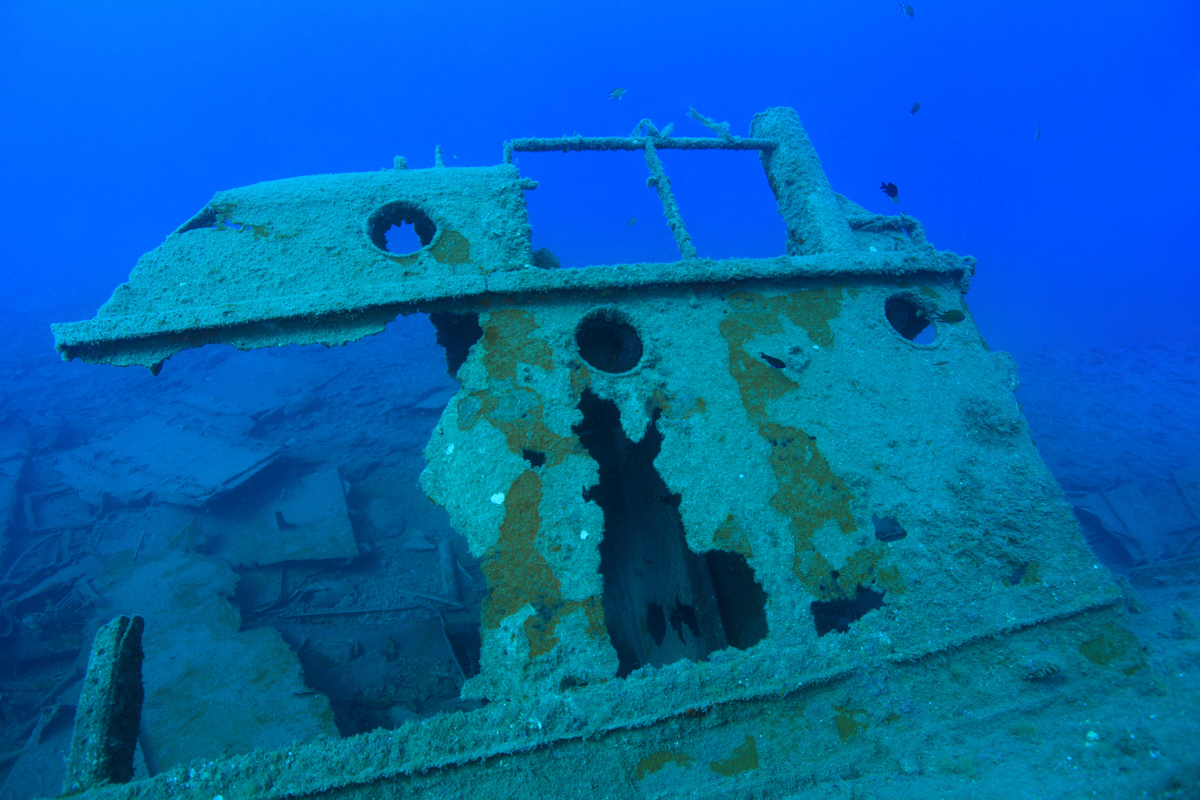
If you’re travelling from the UK or Western Europe, Lanzarote is the perfect short-haul option. As the Canary Islands are less than 100 miles from the North African coastline, you’ll get plenty of sunshine and low rainfall all year round; Lanzarote is also known as the ‘Island of Eternal Spring’. From June to October, air temperatures are in the mid-20s, the seas are pleasantly calm and the water temperatures are comfortable. Whilst diving, you can explore dramatic lava formations, caves, drop-offs and shipwrecks. If you’re lucky, you could encounter various cetaceans, but other marine species may include angel sharks, octopus, seahorses and rays.
7. Galapagos
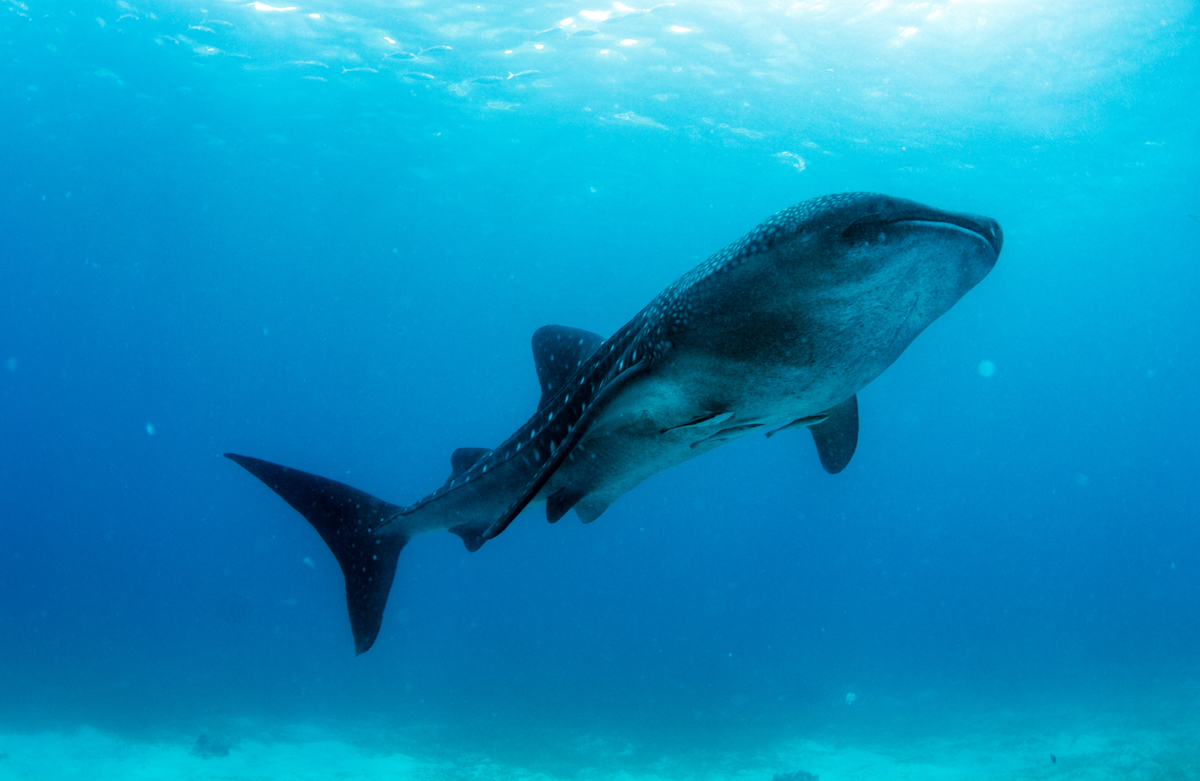
The unique ecosystems on the Galapagos Islands are nothing short of awe-inspiring and that certainly includes the marine life. Wolf and Darwin Islands regularly top ‘best diving’ lists, and in July whale shark activity is peaking. Whale sharks are just the start though, because as you explore the archipelago’s pristine waters you could encounter hammerhead and Galapagos sharks, eagle and giant oceanic manta rays, endemic Galapagos penguins, marine iguanas and playful sea lions.
8. Cocos Island
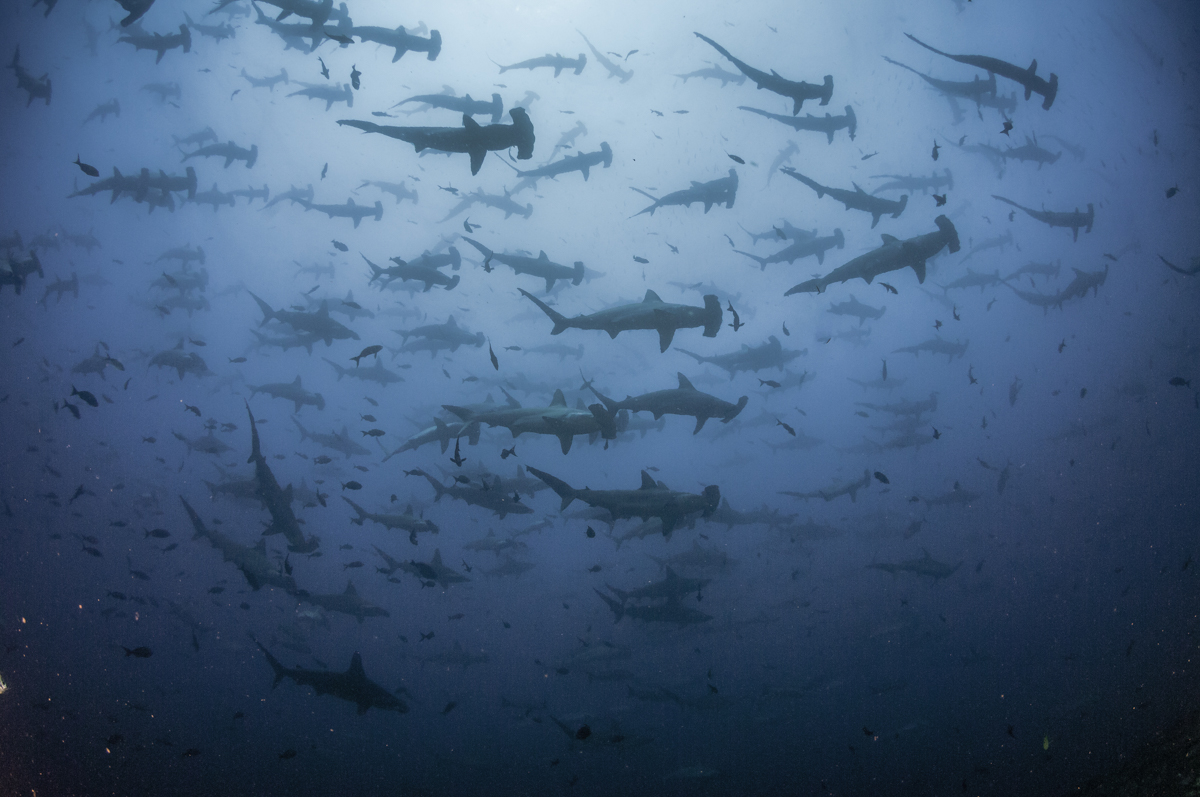
The seamount ‘Bajo Alcyone’, near Cocos Island, is widely regarded as the world’s top destination for hammerhead encounters. Vast shoals are attracted to the nutrient-rich waters, creating a heart-stopping spectacle for divers. After descending to the rocks, you can look up and witness hundreds of hammerheads passing directly overhead. To reach this site, you’ll need to take a liveaboard from Costa Rica. Summer is generally best for marine life encounters, which may also include whitetip and blacktip reef sharks, whale sharks, hawksbill turtle, eagle and manta ray.
9. Sardinia
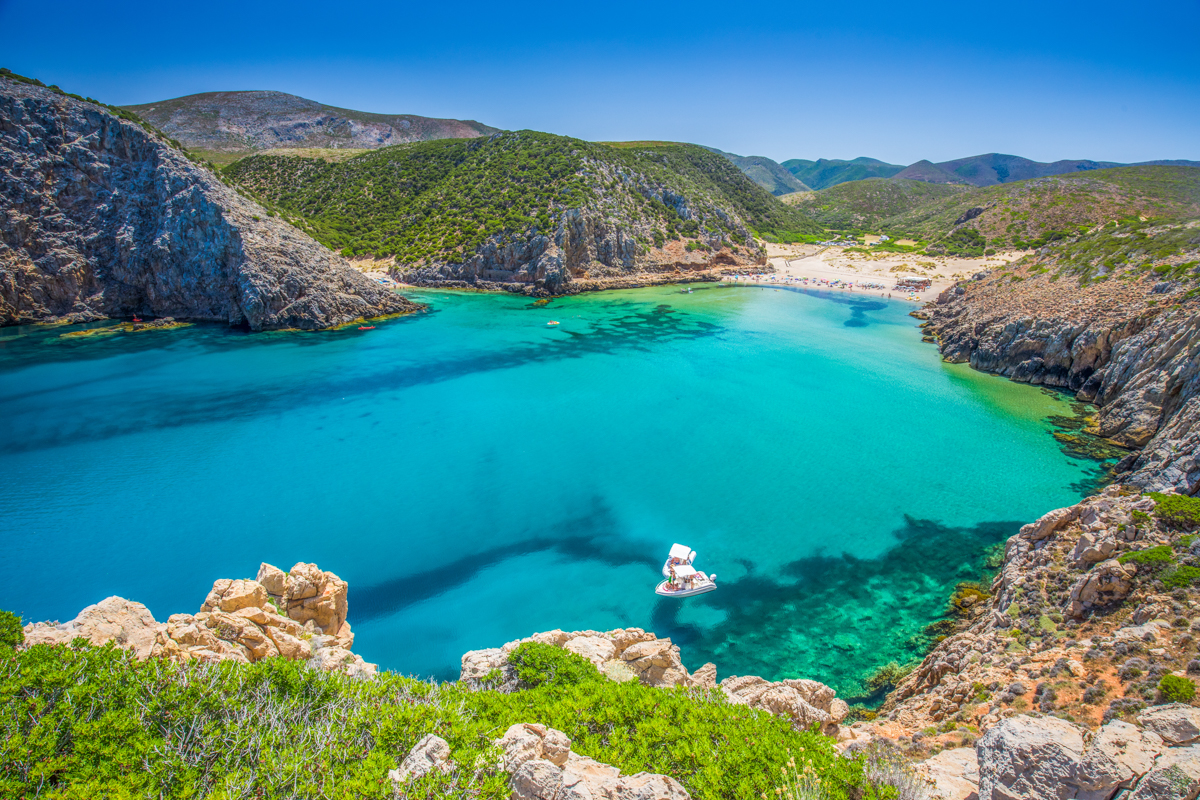
Hailed as the Caribbean of Europe, Sardinia’s sparkling and rugged coastline is known for exceptional scuba diving. Beneath the waves, you’ll find an intriguing landscape of caves, corals, sea fans and historic wrecks. During the balmy summer days, the Mediterranean waters are warm and thriving with octopus, pipefish, eels and groupers, but you also have the chance to encounter dolphins, barracudas, Mediterranean bamboo shark and perhaps even sun fish. The best diving opportunities are found at La Maddalena archipelago - a protected national park - and Lavezzi (a marine reserve in southern Corsica which can be reached from Sardinia).
10. Grenada & Carriacou
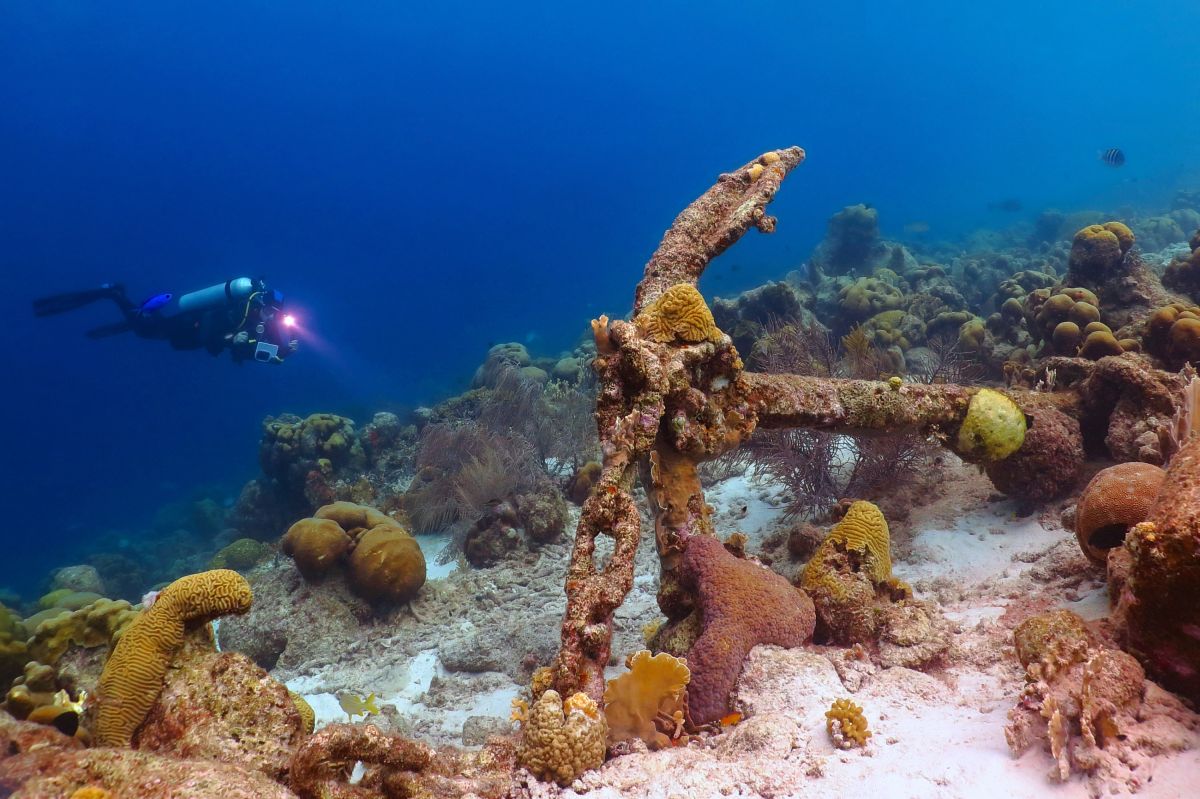
Known for exciting drift dives, wrecks, human sculptures and fabulous reefs, this Caribbean treasure offers idyllic diving experiences. Being the Caribbean, this is a fabulous destination to visit at any time of year. However, by travelling in early summer (May or June) you can avoid the peak hurricane season (July to November) and the peak tourist season (December to April). You’ll be able to enjoy gentle currents, warm water, beautiful weather and diverse marine ecosystems, and get great value for money on flights and accommodation.
To book any of our diving holidays, speak to our expert dive team, browse our special offers or search our liveaboard departures.
Find a trip
- Resort
- Liveaboard
Regaldive’s Top 5 Snorkelling Spots
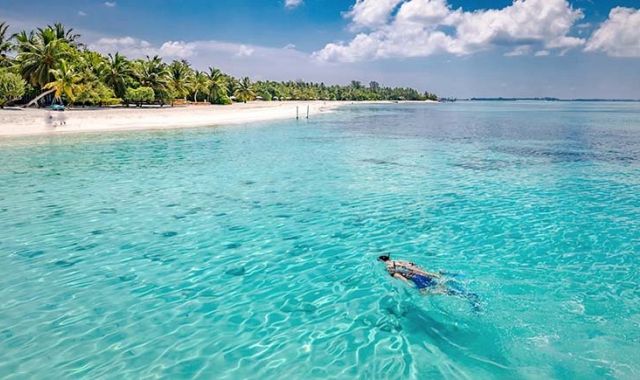
12 Mar 2025
Contrary to what scuba divers might think, a lot of action underwater happens close to the surface, so snorkellers aren't missing out by not diving, in fact, a whole different underwater world opens up. Reef sharks, dolphins, turtles and colourful reef fish can be seen just as easily when snorkelling and even divers wanting to see whale sharks and dugongs turn to their trusty snorkel for these incredible encounters.
Snorkelling is also a great way to build confidence in the water, which makes it a perfect accessible and affordable activity for all the family, young and old, to enjoy on holiday. So whether you're an avid longtime snorkeller, interested in trying it out as a first step to diving, or want to give snorkelling a go because you love the ocean, dip into Regaldive's guide to our five best places for snorkeling around the world. Embark on your underwater adventure today!
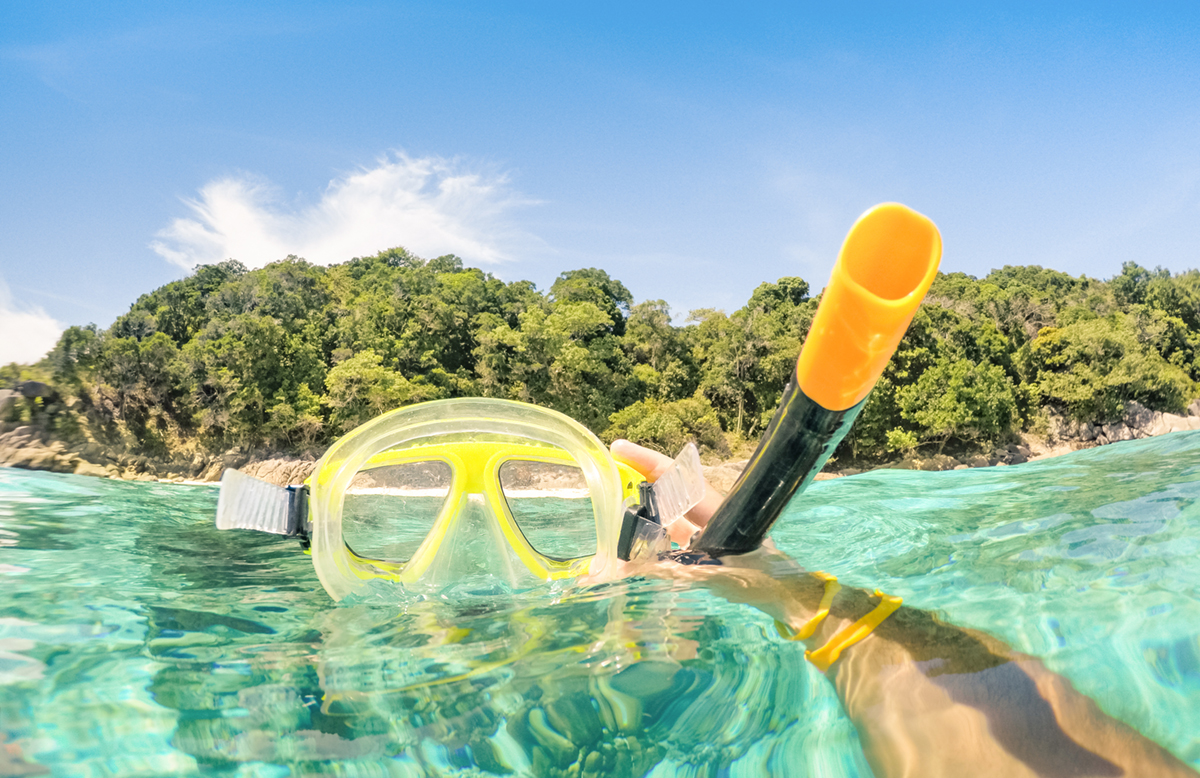
Indonesia
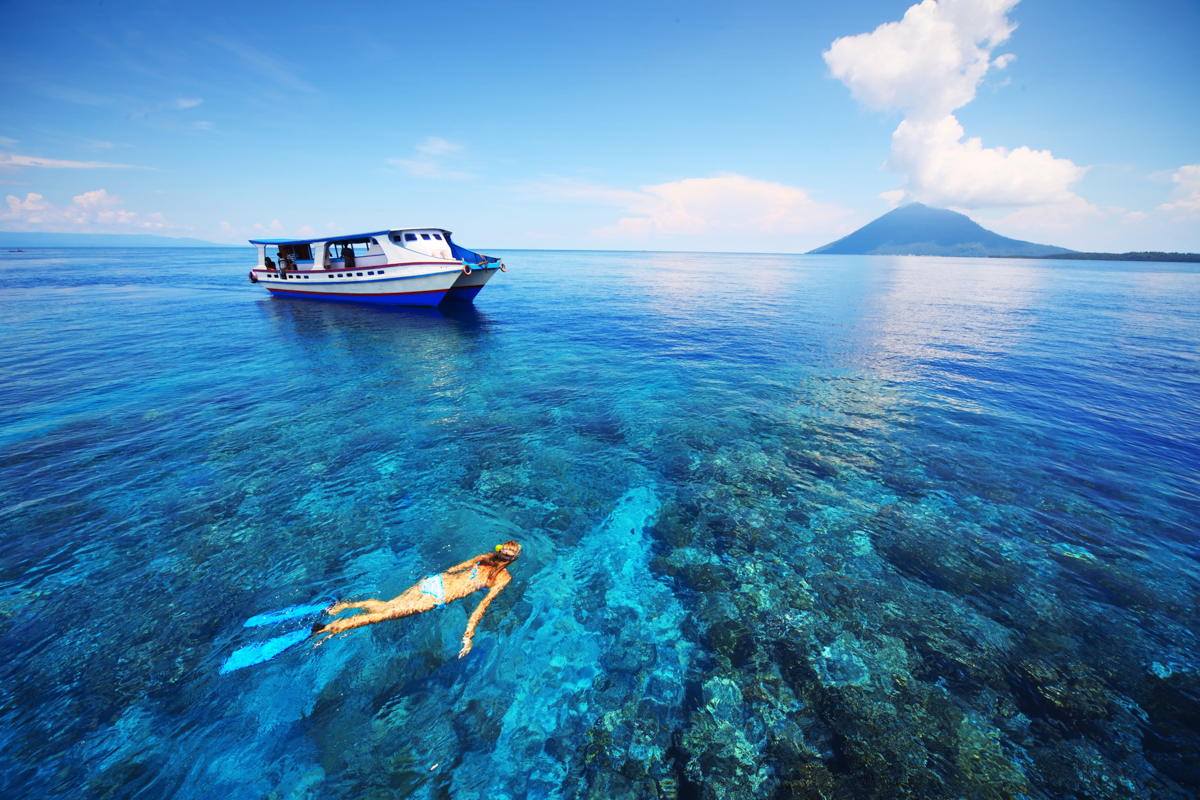
At the heart of the Coral Triangle lies Indonesia, with arguably the richest marine biodiversity in the world and warm waters. Snorkellers are treated in this area with fringing reefs stretching for kilometres right on many resorts' door steps. In Raja Ampat green sea turtles, giant clams, and giant manta rays are commonly spotted in season. The shallow waters provide an excellent home for the reef fish, and hours can be spent in the water over various snorkeling spots. Further south in Komodo National Park, a UNESCO World Heritage Site, resorts such as Kalimaya Dive Resort have extensive house reefs with stronger currents allow the coral reefs to thrive and boat trips are available to swim with majestic manta rays.
Ideal for island hopping Bali is a great addition to any itinerary, the northern coast of Tulamben offers Balinese style accommodation and reefs that bustle with tropical fish, macro and marine critters. The wreck of the USAT Liberty is in surprisingly shallow waters, coming up to around five metres, on a clear day the whole 110 metre wreck is visible while snorkelling and is truely a site to behold. To add a taste of culture, a night or two in Ubud promises to deliver as does a sunrise trek up Mount Batur.
Red Sea (Egypt)

Egypt offers a truly unforgettable experience above and below the water. Visitors cannot fail to fall in love with the unique combination of historical and cultural treasures, and the outstanding underwater scenery and abundant marine life here. Egypt's Red Sea offers some of the finest coral reefs and ship wrecks to explore on the planet. It's also the ideal destination for UK holidaymakers with just five hours flying time, excellent value for money, year round sunshine and crystal clear warm waters.
Snorkellers have plenty of choice of Red Sea resorts to get the most out of their holiday. For ease, a resort with a house reef allows you to snorkel just off the beach and many have the option for boat trips further afield if you wish. The majority of resorts that stretch down the Red Sea's entire coastline from Soma Bay all the way to Hamata in the deep south offer excellent fringing reefs and plenty of incredible snorkelling spots in shallow waters directly from the shore, including Safaga, El Quseir, Shams Alam and Marsa Alam. Similarly on the Sinai Peninsula, Dahab is well-known for stunning coral reefs.
The Breakers Diving and Surfing Lodge in Soma Bay has been specially designed for water sports fans and guests can make full use of the hotel's spectacular location right on the water's edge. An incredible turquoise blue lagoon, and one of the most beautiful stretches of house reef along the Egyptian coast lay just metres from your hotel room. An extensive jetty allows you access straight onto the reef in either sheltered waters or on the fringing reefs drop off. Alternatively, in the deep south of Egypt, Hamata’s Lahami Bay Beach Resort house reef is like it has been designed for snorkellers, the several reef systems in the resort's surrounding waters act as defence from the waves and help calm the waters. There's always a protected area to snorkel in while being close to the coral reef system. There's even a few resident dugongs that live in the adjacent bay that many snorkellers see. Travellers have the option to take a day trip by boat to Sataya Reef (Dolphin House) where spinner dolphins are seen reliably.
Mexico
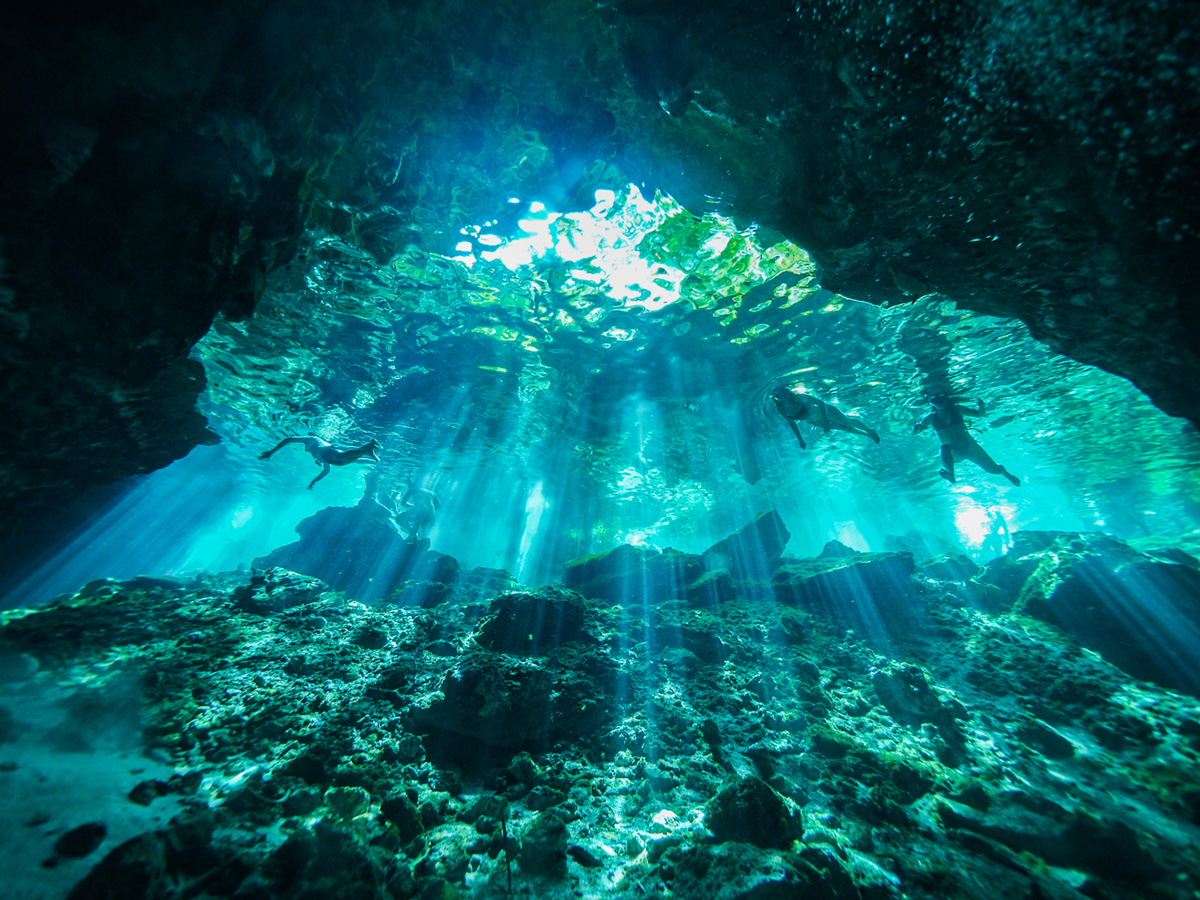
On the Pacific Ocean coast you’ll find the Sea of Cortez, the two separated by the Baja Peninsula, where snorkelling is adrenaline filled! Here sea lions in their hundreds join the Sardine Run of Magdelena Bay. Sailfish, mahi mahi (dorado), and dolphins join the party out at sea whizzing pass you at incredible speeds. If you’re in the right place at the right time a whale could pop up too. Alternatively fevers of rays reaching their hundreds flock to the Sea of Cortez between May and July, at this time orcas and sperm whales are also spotted. These marine and sea life encounters are conducted from liveaboard, many of which are dedicated to snorkellers.
The Caribbean coast of Mexico offers a much more relaxed approach with miles of white sand beaches, an array of cultural attractions and one of the most well-developed tourist infrastructures around. Underwater, Mexico's Yucatan Peninsula sits at the very tip of the world's second largest barrier reef. The Mesoamerican Barrier Reef stretches south for over 1,000 kilometres, and is considered unique in terms of both its vast length, and its stunning biodiversity with blacktip reef sharks and nurse sharks.
Snorkelling (and diving) is big business in Mexico. In Cozumel, many visitors like to grab their kit and snorkel directly off the beach to spot wonderful and diverse marine life there. If you're serious about your snorkelling, you'll want to go out to the main reefs by boat ride. From June to September, a whale shark safari to Isle Mujeres is highly recommended and offers the once in a lifetime opportunity to snorkel with these gentle giants of the ocean sometimes alongside manta rays, turtles and dolphins.
Visitors to Mexico also have the chance to visit the world famous Cenotes, an underwater tranquil world like no other. The chance to explore this incredible submerged limestone cavern system is one of the reasons scuba diving is popular in the Yucatan Peninsula, but snorkellers are equally well catered for. Float in clear fresh water with up to 50 metres visibility amongst amazing formations of stalagmites and stalactites, exploring underwater caves bathed in sunbeams filtering through the jungle canopy above.
Maldives
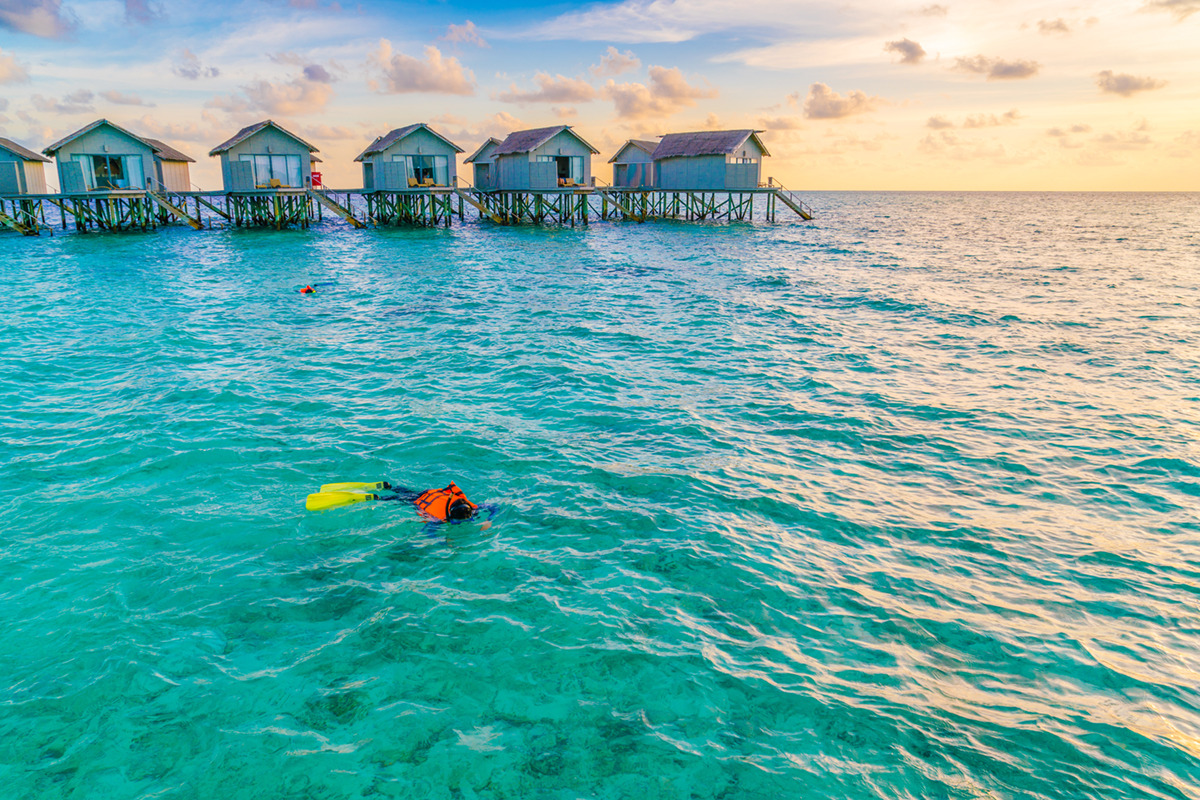
The best snorkelling destination in the Indian Ocean are the islands and atolls of the Maldives. If your idea of holiday heaven is trickling powder soft sand through your toes, and venturing beneath the surface todiscover one of the most exciting and exhilarating marine snorkeling destinations on the planet, then the Maldives will definitely meet your needs.
The relative isolation of the Maldives has led to a fabulous variety of marine species. Seasonal oceanic currents through the Indian Ocean push channels of plankton rich waters into and out of the atolls, attracting many pelagics like manta rays, sharks and whale sharks. There's also plentiful smaller fish amidst the beautiful coral gardens and picturesque, sheltered lagoons. Snorkellers should opt for an island with a house reef to get the most out of their holiday. The islands of Ellaidhoo, Filitheyo and Reethi Beach are all encircled by excellent house reefs and provide snorkelling boat rides to outer reefs. House reefs are often home to a variety of marine life including nurse sharks, eagle rays, black tip reef sharks sea turtles and colourful coral. Vilamendhoo Island Resort and Spa, located in south Ari Atoll is close to the Maldivian Whale Shark National Park, offers one of the largest easily accessible house reefs in the Maldives and both whale sharks and manta rays are often spotted here.
Bonaire
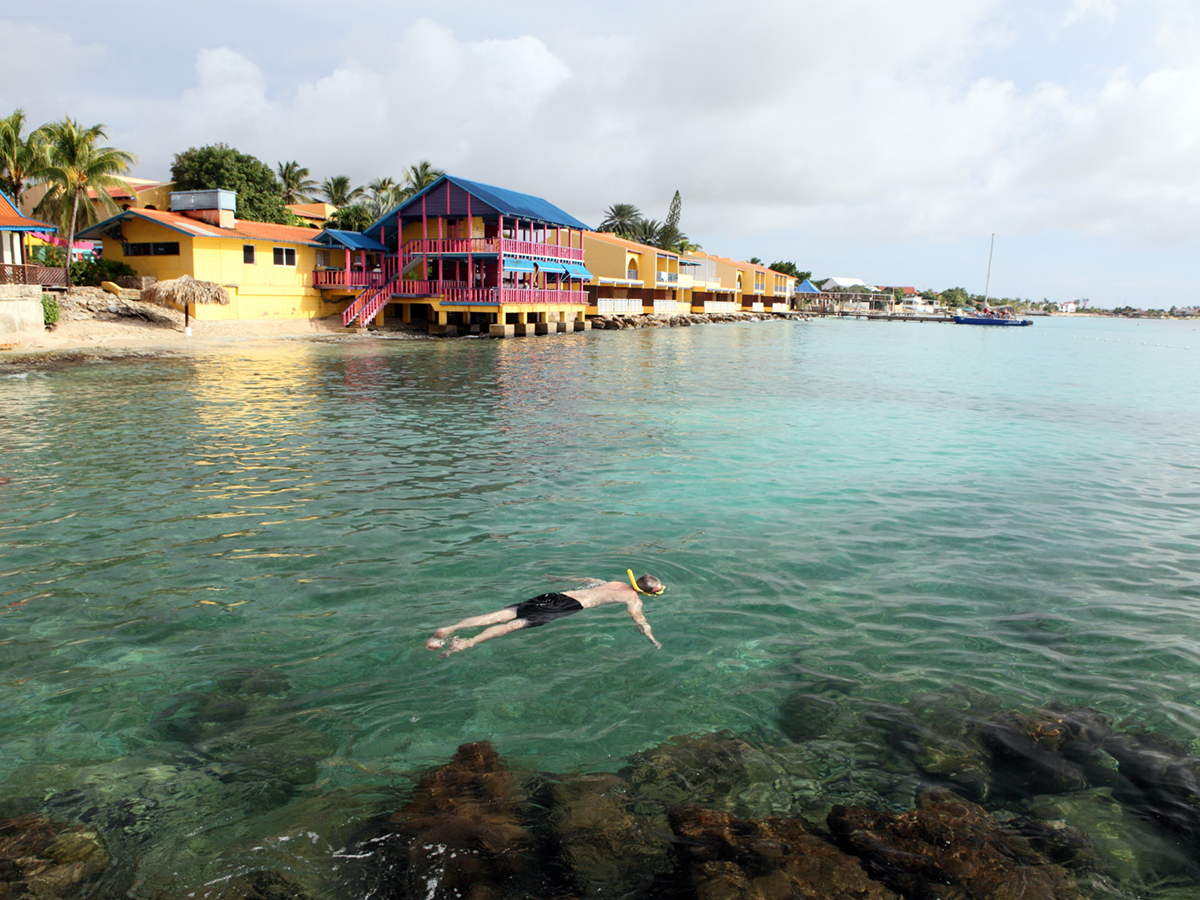
It would be hard to think of a more complete scuba diving and snorkelling destination than the Southern Caribbean island of Bonaire. Bonaire's low-lying geography brings the reef drop-off close to the coastline, making shore entries common. This is ideal for snorkellers, who can enjoy over 90 snorkelling spots, most of which are accessible directly from the shore
Home to the Caribbean Sea's first protected marine park, Bonaire's warm and nutrient-rich waters boast an outstanding marine diversity with more than 300 different fish species. The lack of rain on the ABC islands has led to an impressive underwater visibility which regularly exceeds 30 metres and is particularly excellent for photography. The fringing reef lies close to the shore at usually no more than 10 metres depth, just brimming with colourful fish and incredible marine life. Seahorses, the island's emblem, thrive in Bonaire's waters, alongside the elusive frogfish.
Bonaire is known as the home of activity freedom and taking your own itinerary by the horns. Our holidays include vehicle hire, allowing you to snorkel and explore at their own pace. Many resorts offer additional activities including bicycle hire, kayak tours in the mangroves, and expeditions to see the vibrant flamingos.
Special mentions
Yes, we said we’d give you our five best places to snorkel, but there are two more places we have to mention. Grenada and Lanzarote have underwater sculpture parks designed by Jason deCaires Taylor that are well worth a visit if you are in the area! The Molinere Underwater Sculpture Park and Museo Atlántico include several statuses that attract local fish species and creating new ecosystems, and help prompt conversation on the topic of art, nature, politics and today's society. Within less than 10 metres of water, these underwater sculptures are easily accessible.
For more information about snorkelling holidays, please call the Regaldive Team on 01353 659 999 and we will be happy to help you choose the right destination for you.



